Set in the Irish sea, the Isle of Man is probably best known for the TT Races, a series of exhilarating motorbike races that take over the island each spring. But we found so many other fun things to do on the Isle of Man, a Biosphere nation, with clear waters for swimming, scenic coastal towns, heritage railways and amazing seafood.
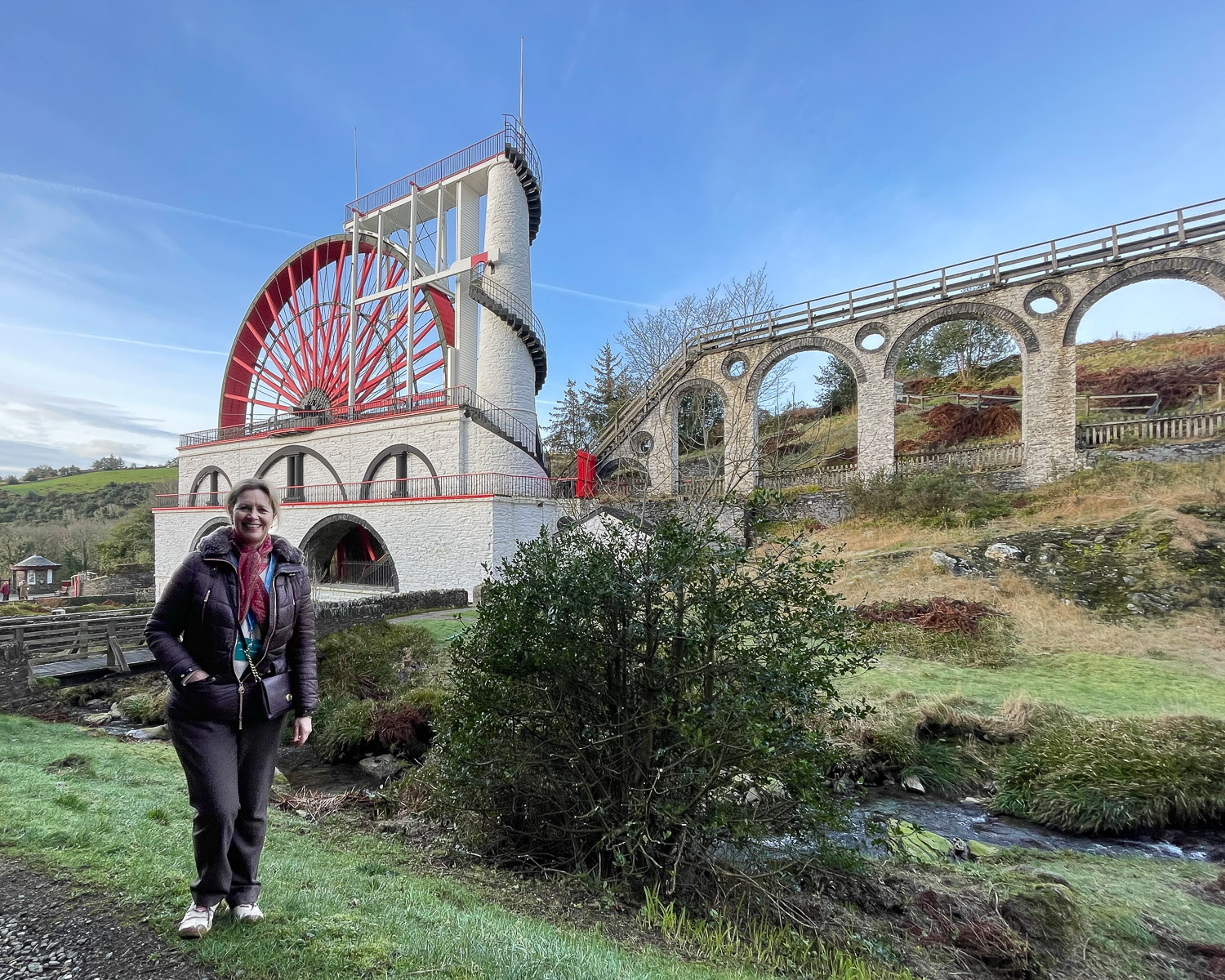
It’s a great place for a car free holiday that’s close to the UK, but with a Manx flavour of its own. And even if you are not there for the TT Races, there are lots of other ways to experience the motorsport buzz!
This article may contain affiliate links that provide commission on purchases you make at no extra cost to you. As an Amazon Associate I earn from qualifying purchases.
Table of Contents
Top things to do in the Isle of Man – our 3 day itinerary
Here’s a quick overview of the top things to do in the Isle of Man. If you are using public transport and have limited time, we recommend staying in Douglas. Note that some of the places mentioned may have seasonal openings, so check before setting off.
For anyone staying a short time or visiting on a cruise, we also recommend taking an island tour with a driver guide such as Albany Tours. You’ll get a personalised guided tour for your group by car or mini-van, covering many of the island highlights and tailored to your interests.
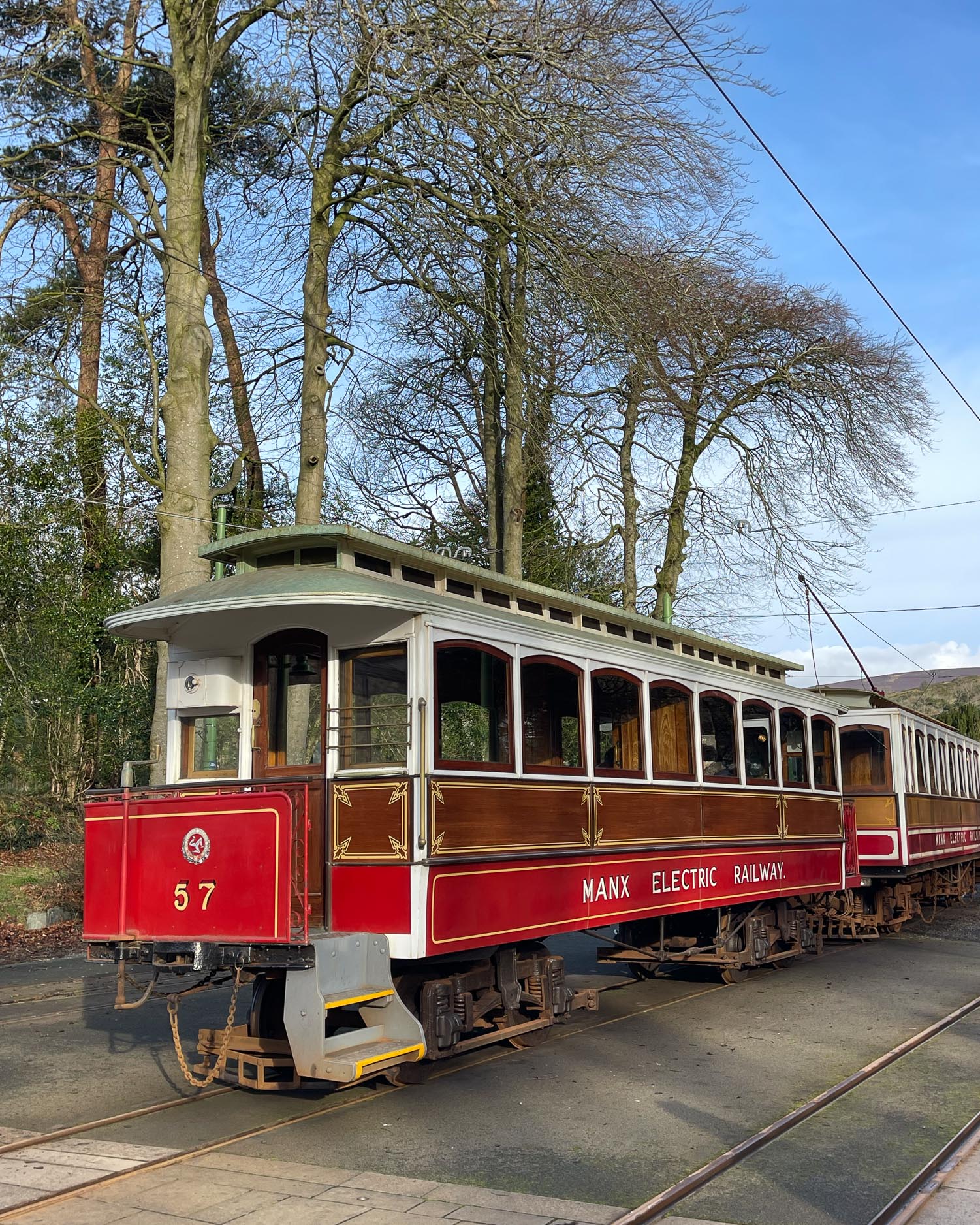
Day 1
Take the Manx Electric Railway from Douglas to Laxey, visit the Laxey Wheel, then head down to Laxey village for lunch on the beach at The Shed or in The Shore Hotel’s pub.
Continue on the Manx Electric Railway to Ramsey, visit the Milntown Estate and Gardens (lovely afternoon teas). End the day with a gin tasting and mezze plate at Fynoderee Distillery. Return by no 3 bus to Douglas.
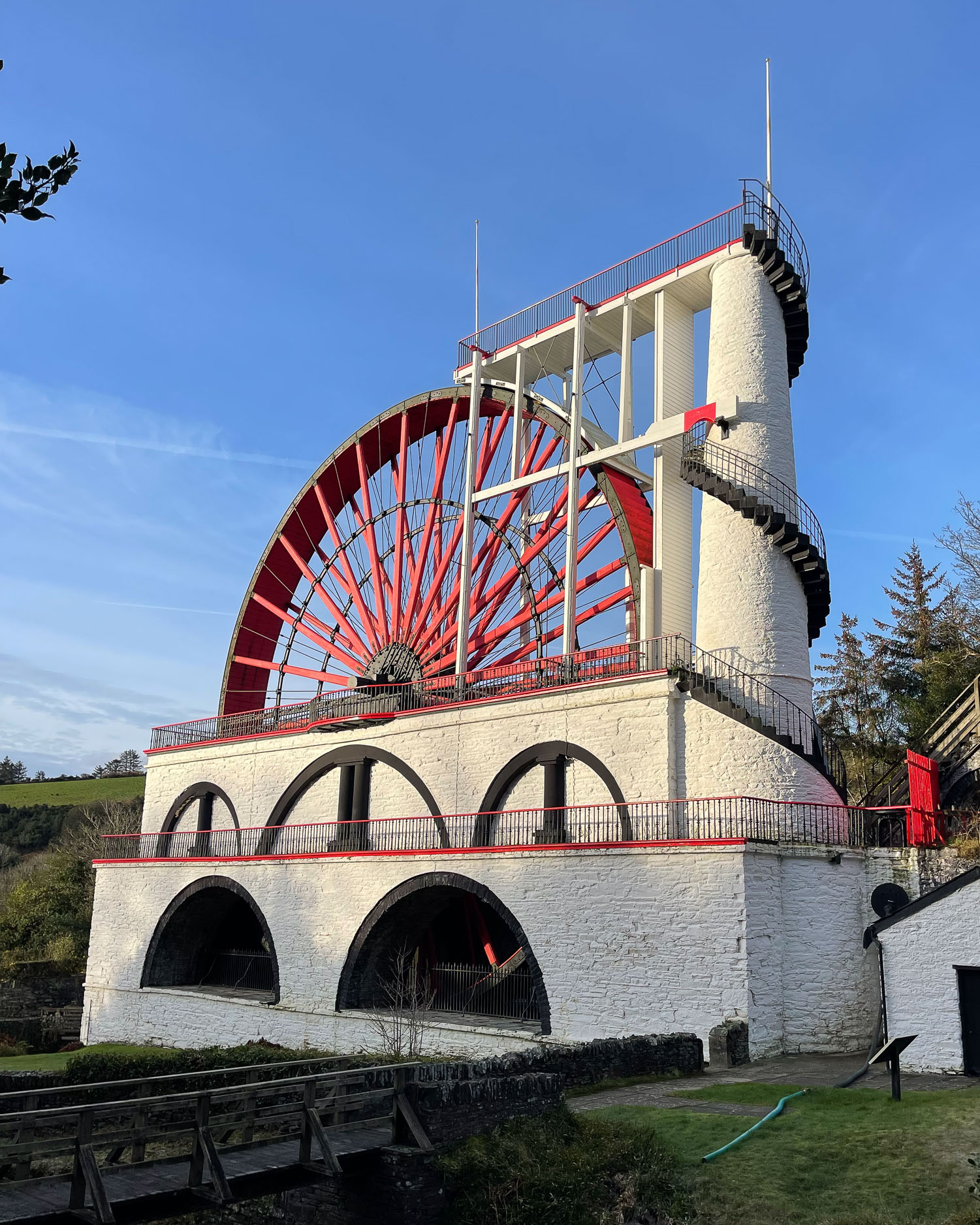
Day 2
Have breakfast in Douglas at either of the two Noa Bakery locations (sourdough heaven!) and take a look around the Manx Museum in Douglas. Then head to Peel by bus from Douglas. Wander around the harbour, visit Peel Castle and the House of Manannan museum.
Have lunch in one of the restaurants around the harbour or pick up some seafood from The Fish Bar kiosk by the beach. Enjoy an ice cream on the beach from Davison’s Ice Cream Parlour before heading back to Douglas.
If you have time, the bus also stops at St John’s where you can shop in Tynwald Mills (check out the lovely Element Isle jewellers) and see Tynwald Hill.
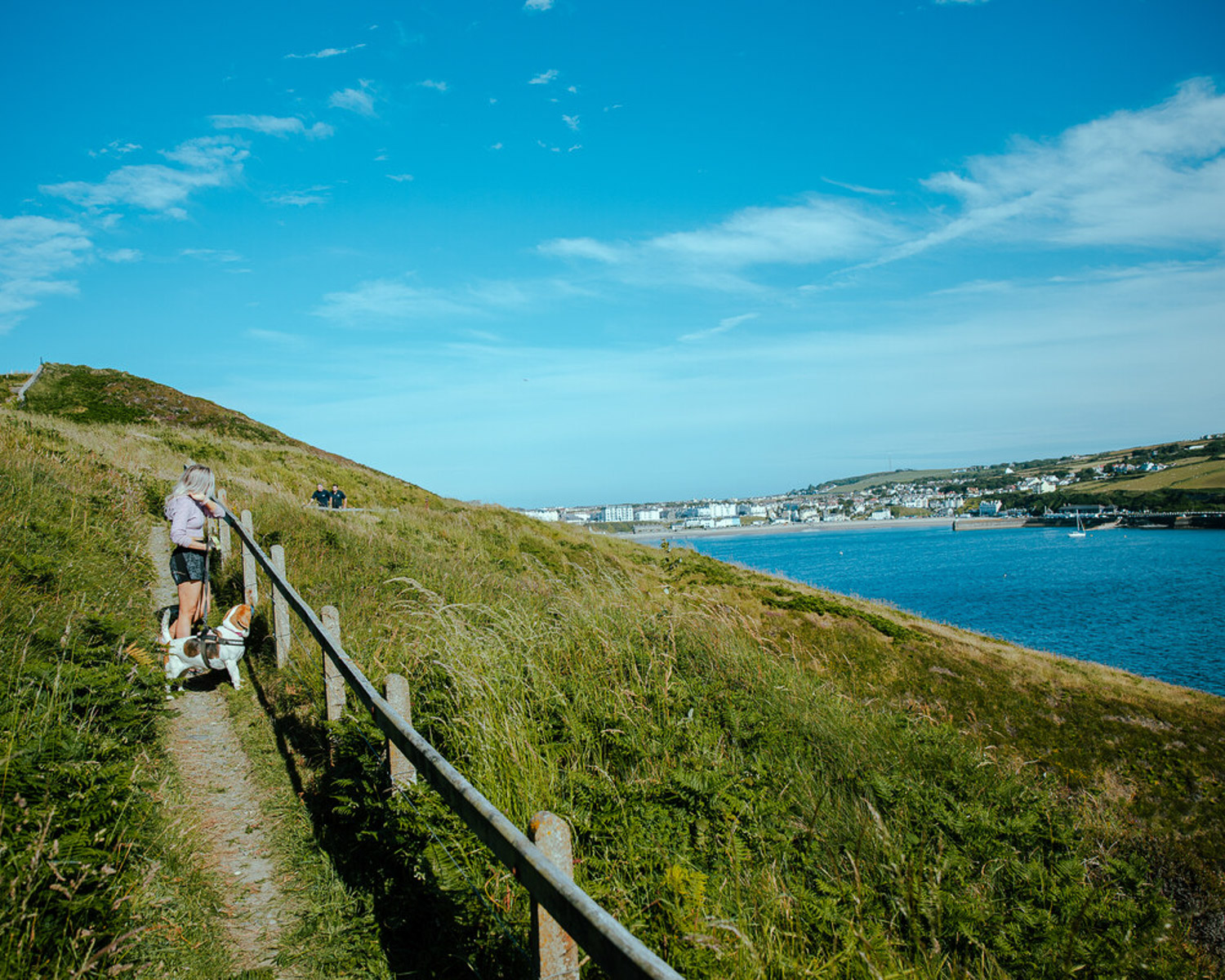
Day 3
Take the Isle of Man Steam Railway from Douglas to Castletown and look around the harbour and Castle Rushen. Continue by bus or steam railway to Port Erin, where you can walk from the beach up to Milner’s Tower on the cliff. Back on the beach, relax with a drink from Foraging Vintners.
If time permits you can also take the No 28 bus from Port Erin to Cregneash historic village and on to The Sound for views of the Calf of Man from the Sound Cafe. Return by bus or steam train from Port Erin to Douglas.
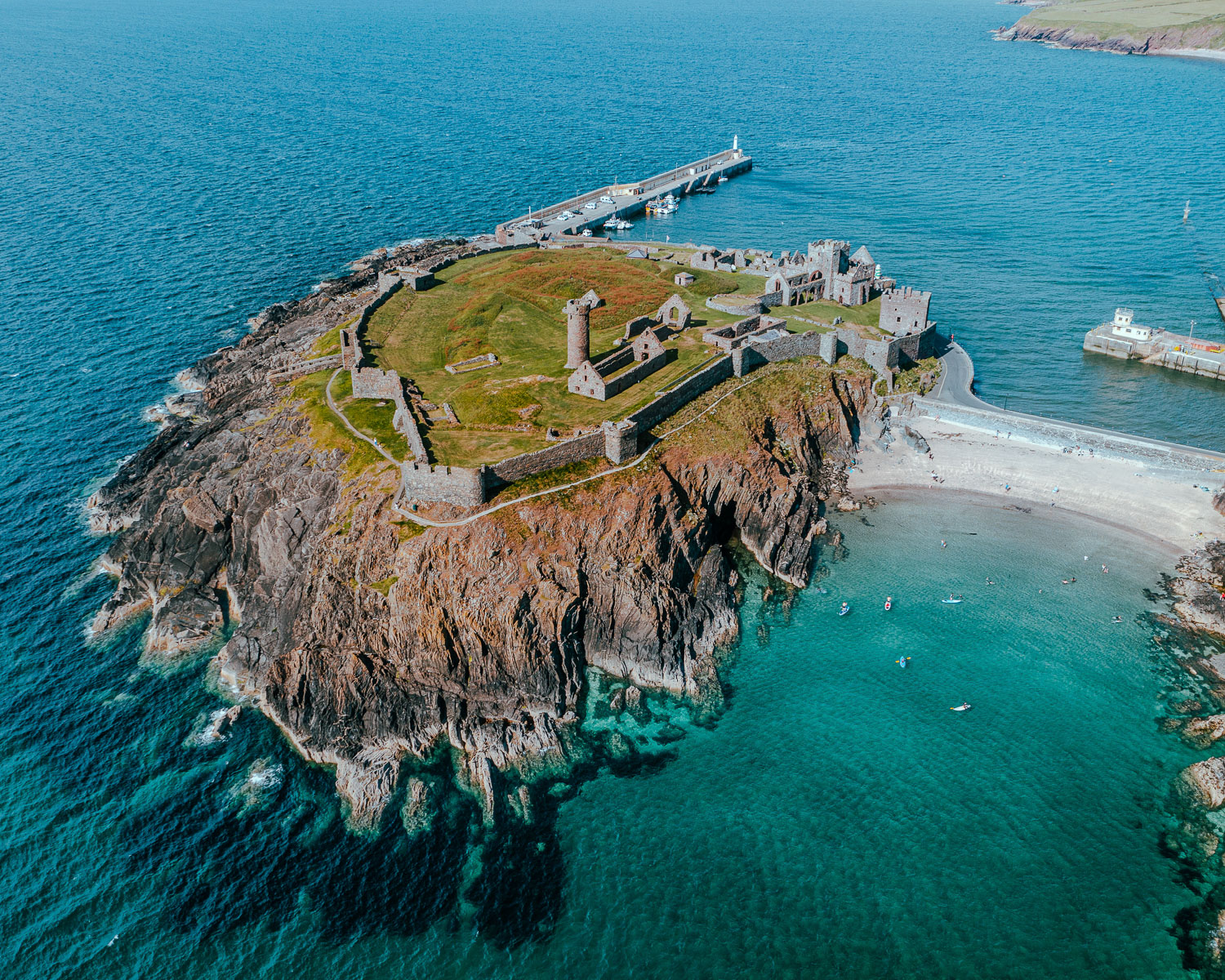
1. TT (Tourist Trophy) Motorcycle race
Let’s get it out of the way. Most people associate the Isle of Man with the annual TT (Tourist Trophy) motorcycle race that takes place from end of May to early June. The TT races take place on a 60 km circuit of public roads, which are shut off for the event, on which elite riders race at speeds of up to 200 miles an hour.
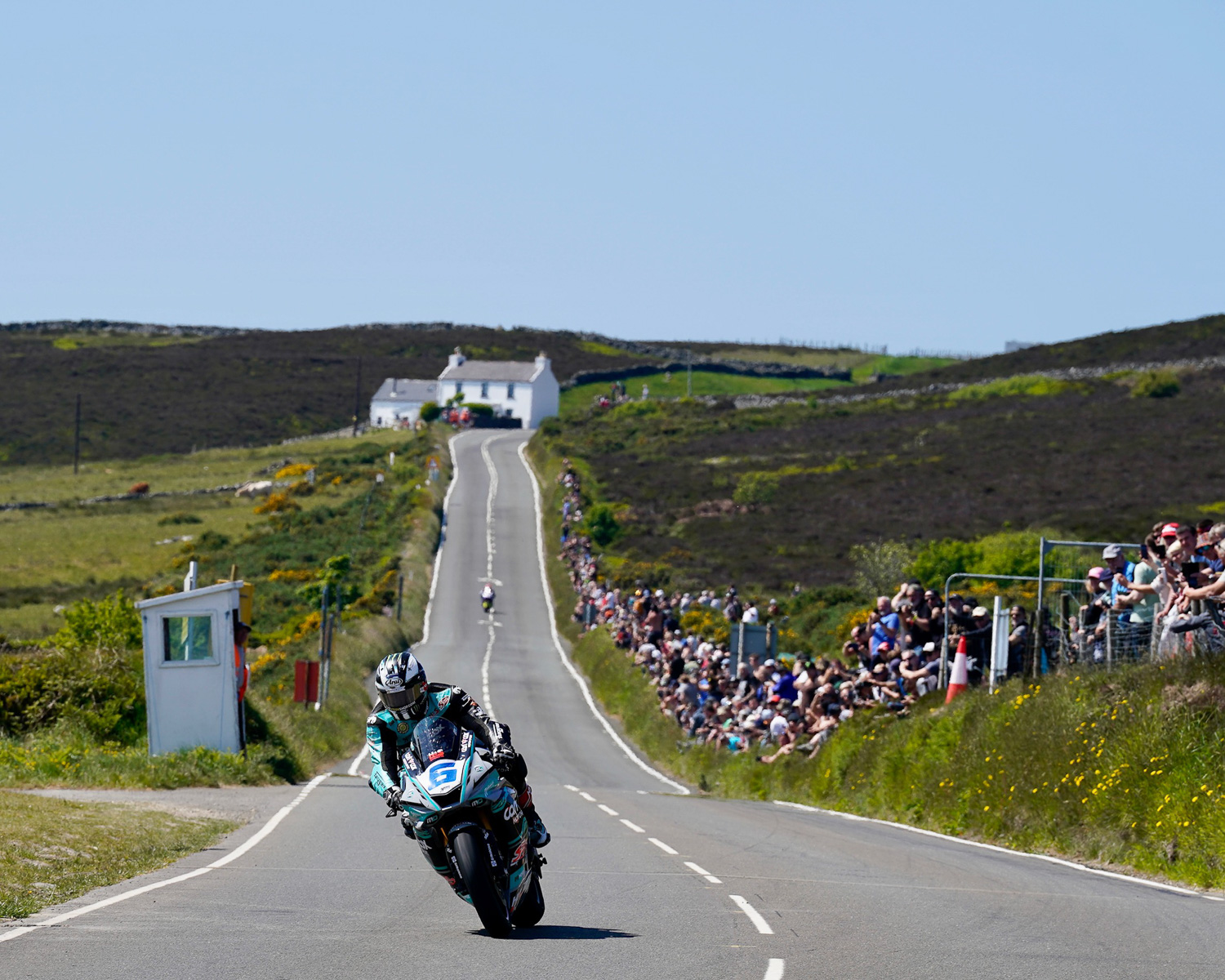
The course being on normal roads with limited barriers makes the event both super exhilarating and super dangerous. It’s the ultimate challenge for riders and a thrilling experience for those watching from banks and walls along the course. The event stretches over two weeks, with the first being “qualifying week” when participants familiarise themselves with the course.
If you are into motorsports, you probably already know all about the event. During the two TT weeks, the Isle of Man is packed out, fuel fumes linger in the air and the atmosphere is one big party.
But unless you are coming for the TT, this is probably not the time to visit, since accommodation is scarce, expensive and booked up well in advance. Roads will also be closed at times, limiting access to other places you might want to visit.
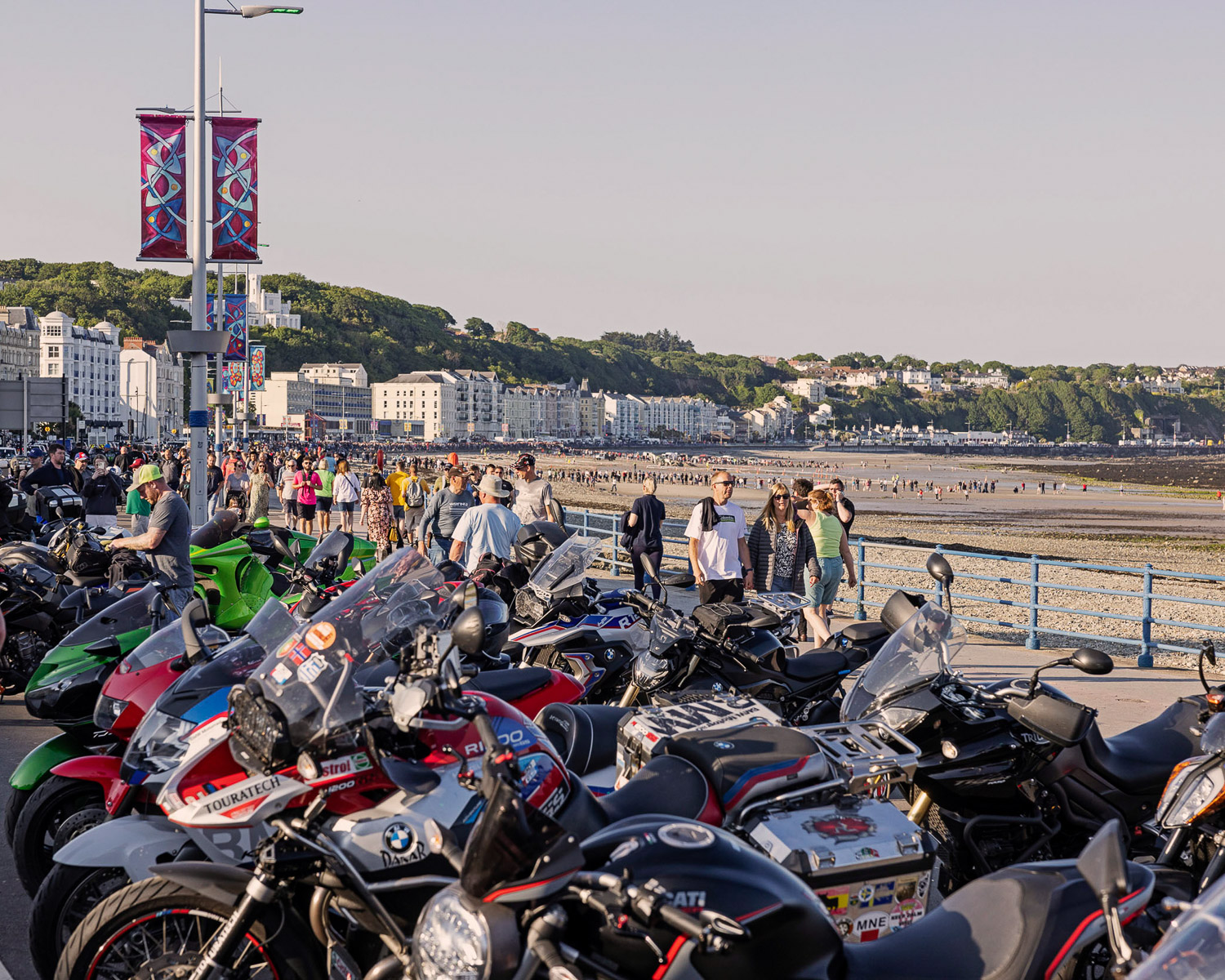
Motorsport experiences outside the TT Road Race
If you’d like to experience the motorsports buzz, but with less of the crowds, a good option is to time your holiday with one of the other motorsport events that take place during the summer months.
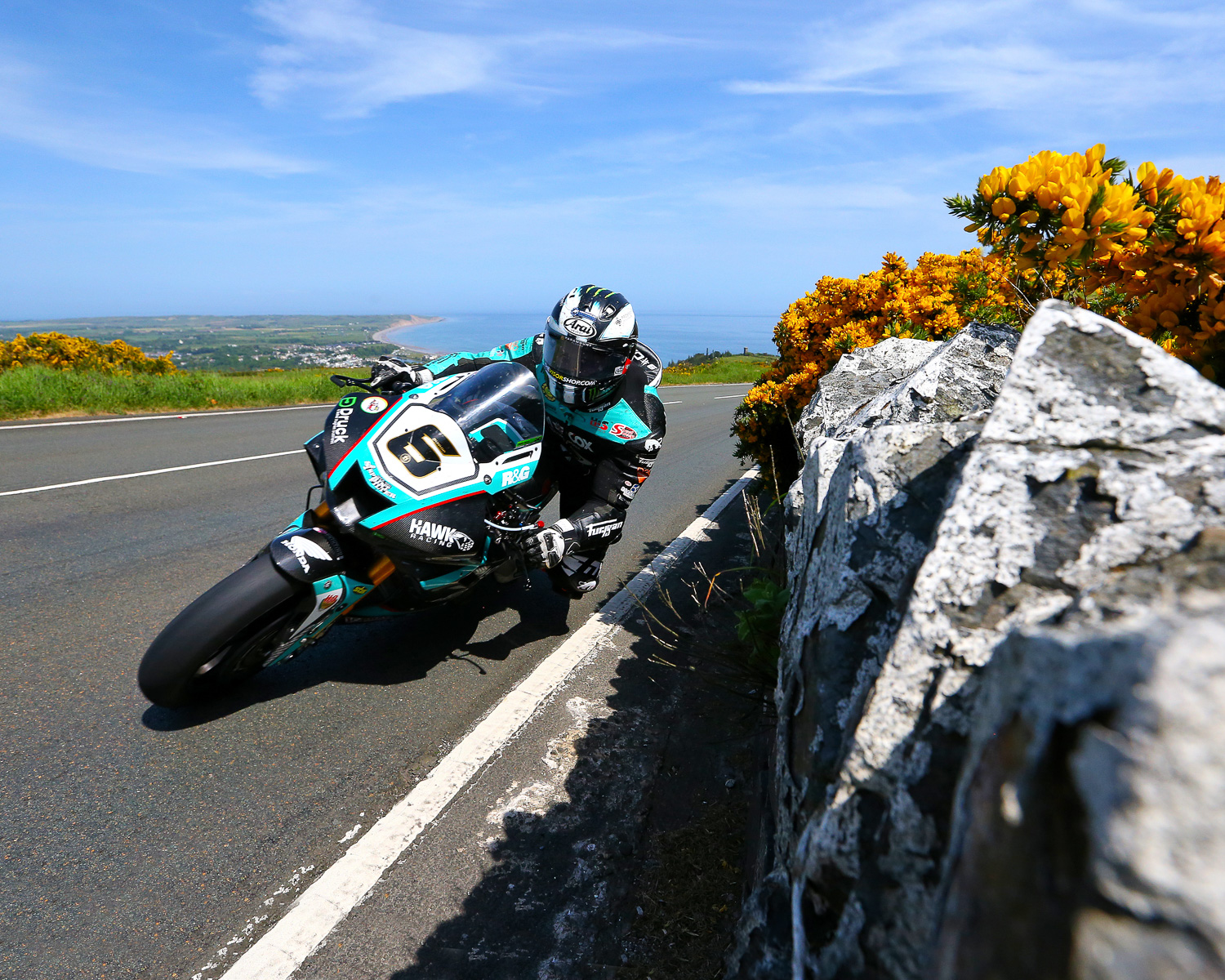
The Manx Grand Prix – this takes place at end of August on the TT course, and the event is a proving ground for competitors who want to enter the TT Road Race.
Classic TT – a celebration of classic and heritage motorbikes that takes place at end August on the TT course Snaefell Mountain Circuit.
Southern 100 – this motorbike race takes place in July and is held on a different circuit of public roads in the south of the Isle of Man.
Find all the Motorsports events on the Visit Isle of Man website.
Even if you are not into motorsports, we recommend stopping at the Manx Museum’s TT race gallery, the Isle of Man Motor Museum or Murray’s Motorbike Museum, open throughout the year, to absorb some of the Isle of Man’s motorsport enthusiasm.
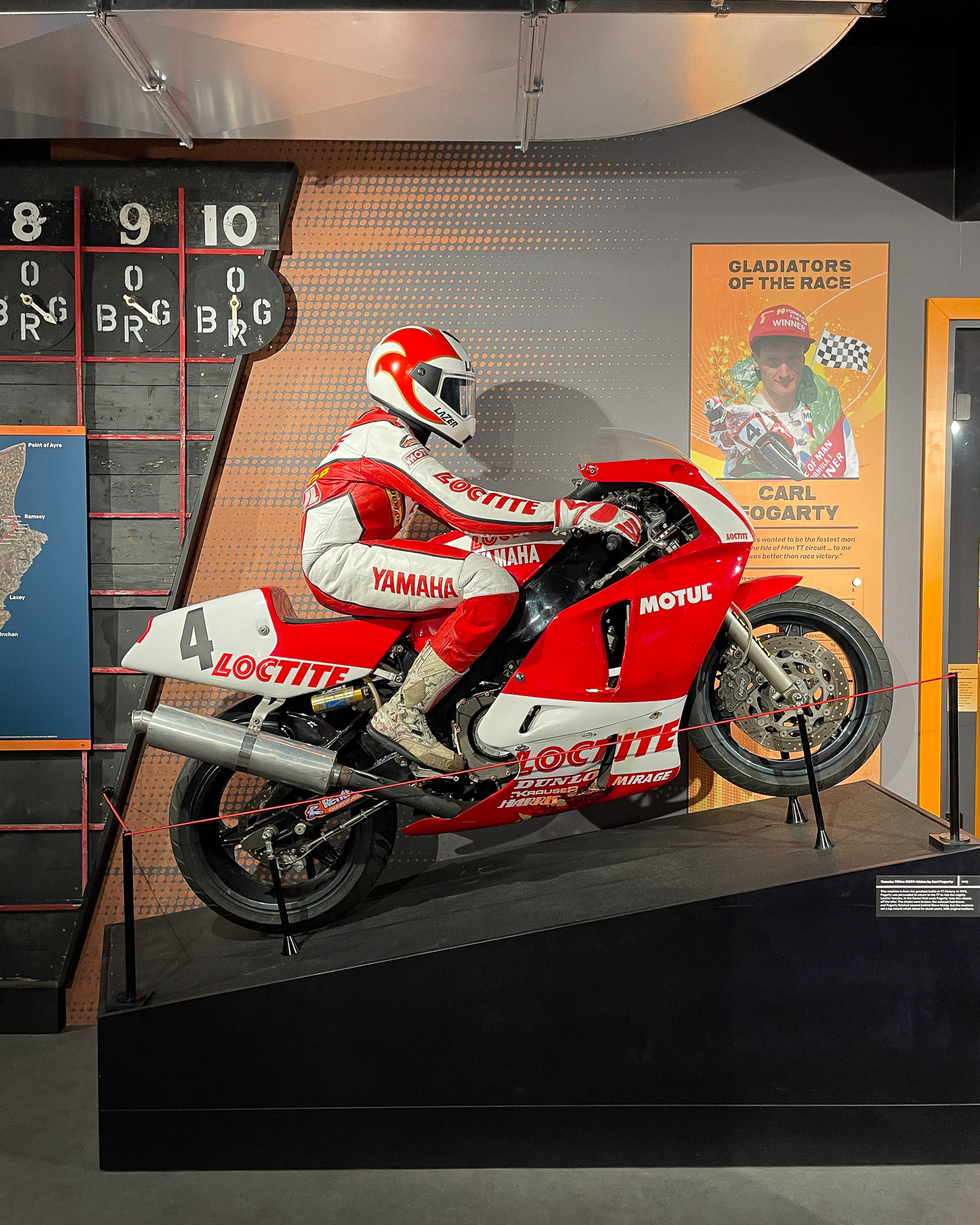
Or for something a bit more adventurous, take a Trike Tour around the island, being driven on the back of a trike motorbike, with commentary from an experienced local driver.
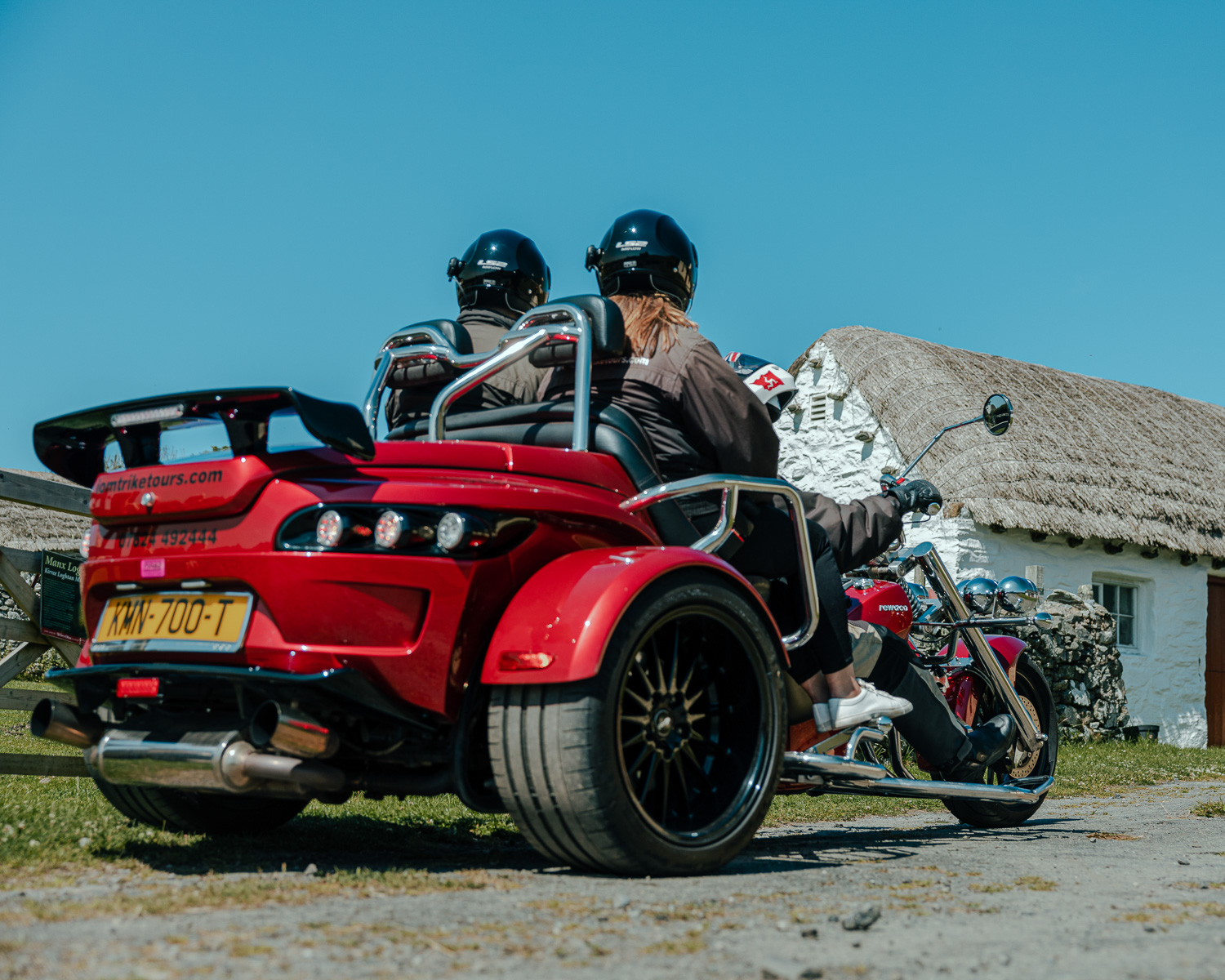
Isle of Man – did you know?
- The Isle of Man is self governing, with a Tynwald Parliament dating back to Viking times, and a Crown Dependency with King Charles as the ‘Lord of Man’
- There is no national speed limit in the Isle of Man, making it a mecca for motor enthusiasts, with the TT Race being just one of the motor events in the calendar.
- You may have heard about the Manx cat with no tail, but did you know there’s also a population of Wallabies living wild on the Isle of Man?
- On the Isle of Man, folklore and fairies are taken very seriously – at the Fairy Bridge, you must greet the ‘Little People’ to avoid offending them and sending you bad luck.
- As an island of seafarers, many people emigrated in the past, and tracing your ancestry on the Isle of Man has become a popular activity for overseas visitors.
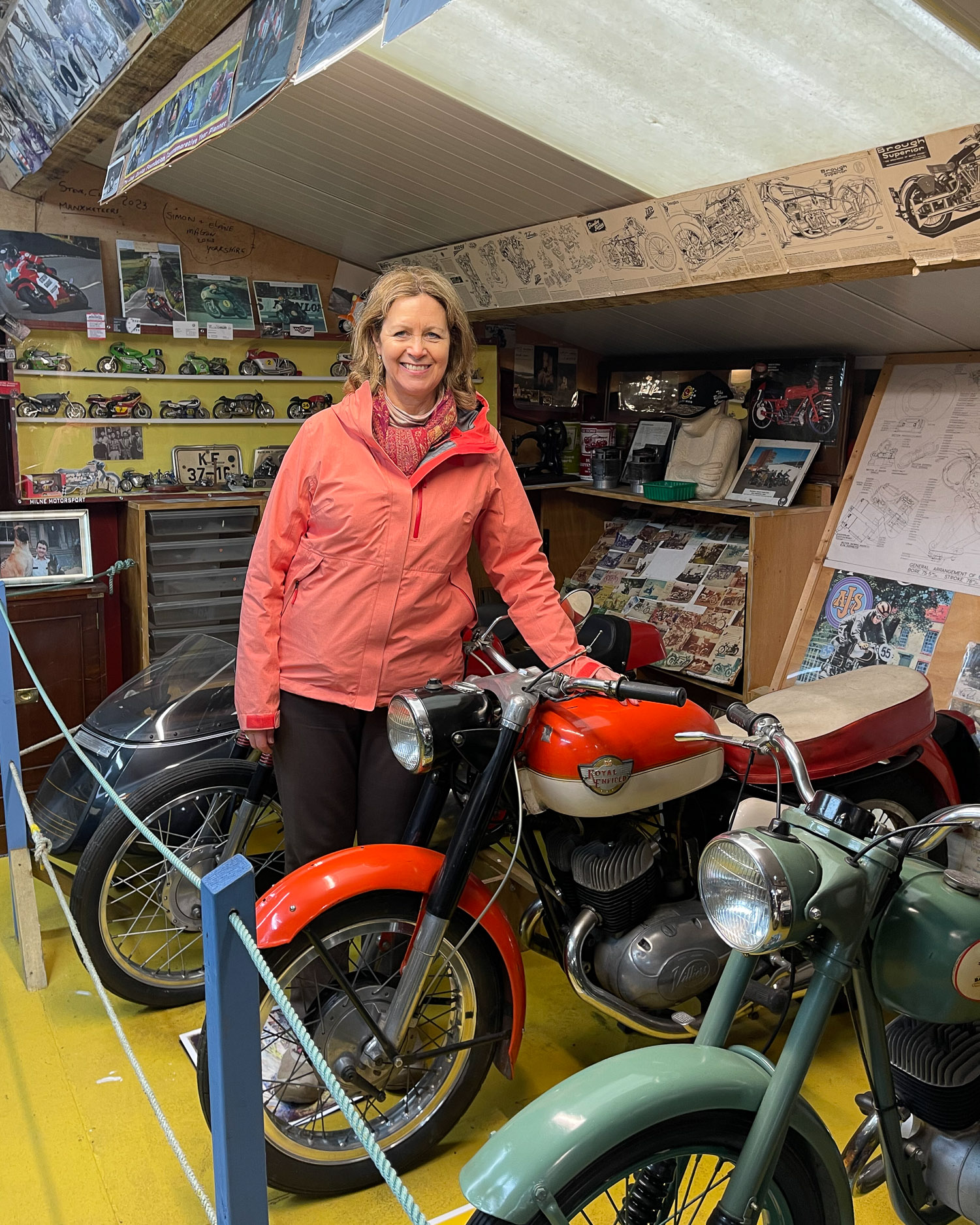
Isle of Man – East Coast
If motorcycle racing is not your thing, don’t worry as the Isle of Man is packed with plenty more to see and enjoy. I’ve grouped all the things to do on the Isle of Man by location, starting with the island capital of Douglas on the east coast.
2. Douglas – explore the Promenade and North Quay
As the Isle of Man’s capital, Douglas is likely the first place you’ll arrive, either on the Isle of Man Steam Packet Company Ferry or via a flight into Ronaldsway Airport at Ballasalla.
The town has a long seafront overlooking the pebble beach, lined with former boarding houses from the glory days of Douglas’s 19th century tourism boom. There’s an old fashioned air about Douglas, but the easy transport links make it a great place to base yourself for a short break.
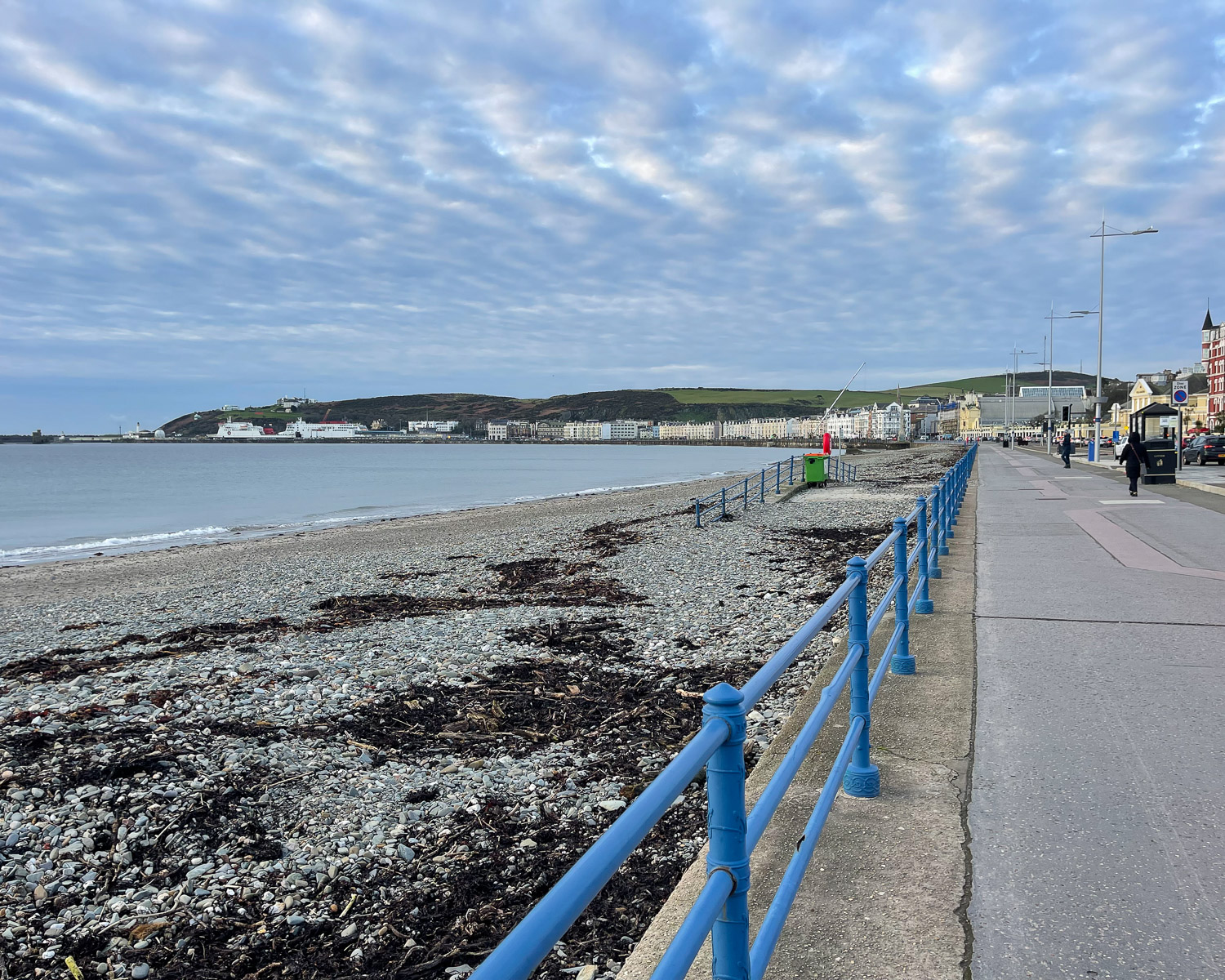
On a stroll along the long promenade, here are a few of the top things to do in Douglas.
Tower of Refuge
If you arrive by ferry you may have noticed a strange tower stranded in the bay, close to the ferry terminal. The Tower of Refuge was commissioned by Sir William Hillary to be built on a treacherous reef, providing a temporary shelter for sailors who ran aground in bad weather. After seeing so many wrecks in this bay, Sir William went on to found what became the Royal National Lifeboat Institution (RNLI) in 1824.
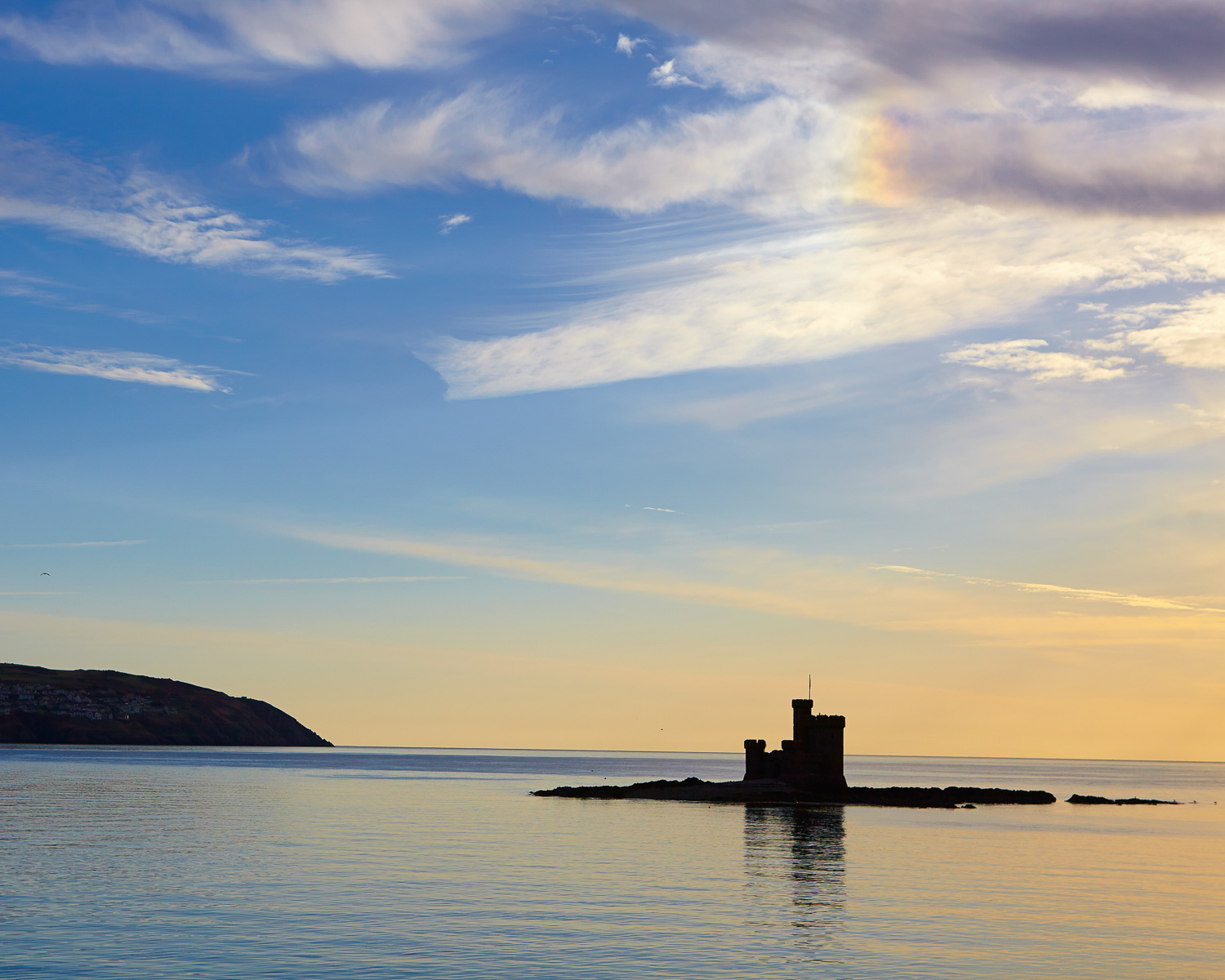
Gaiety Theatre and Villa Marina
Opening in 1900, the Gaiety theatre and opera house is a landmark of the Douglas seafront, with its ornate auditorium undergoing a restoration in the 1970s. You can visit the theatre on a behind the scenes tour (April – October) to see the stage, backstage areas, costume display and exhibition of historic lighting.
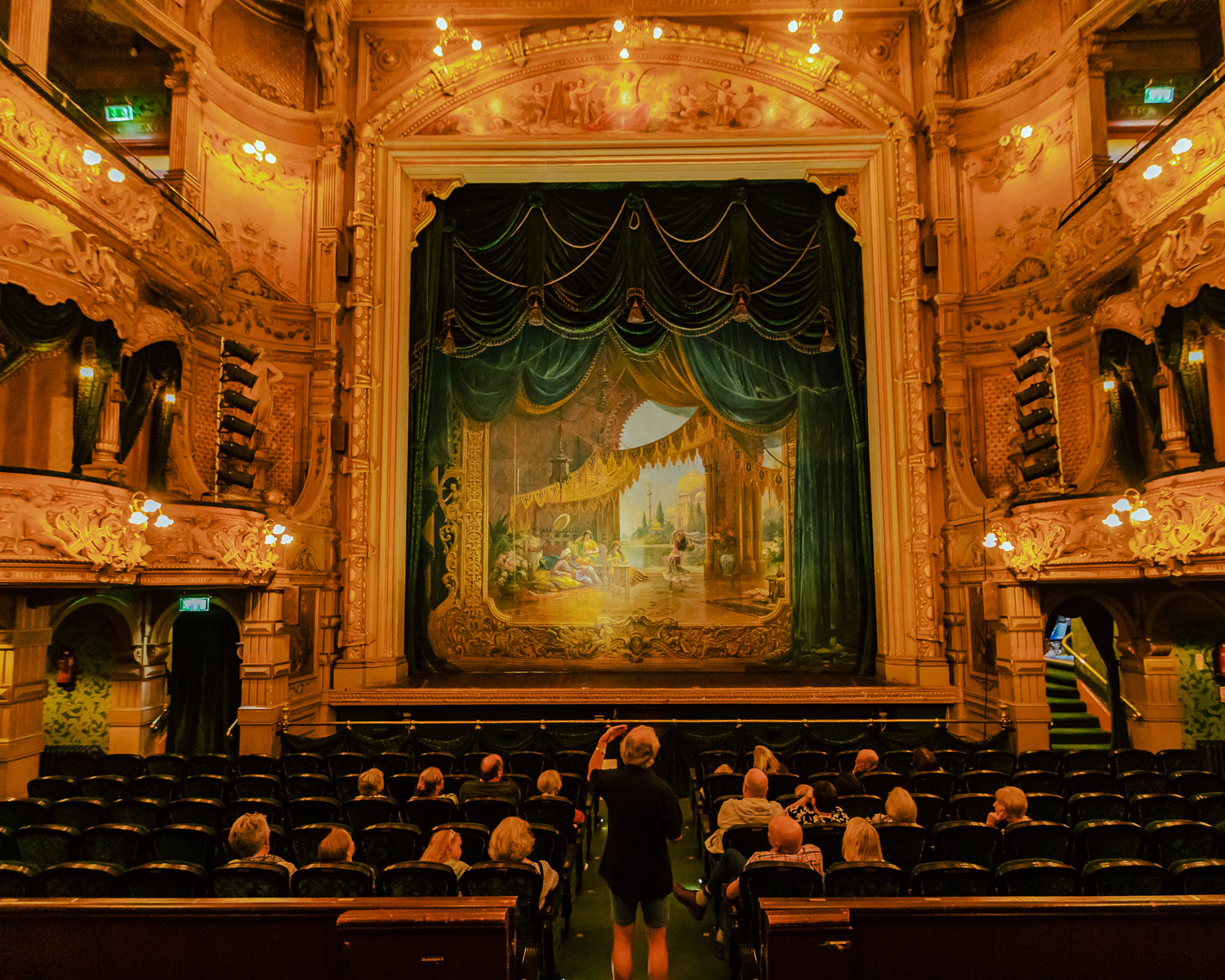
At the other end of the sheltered gardens is Villa Marina, originally built as a private residence, but now the island’s main arts centre and concert venue. It’s worth seeing what’s on or checking whether you can have a look at the impressive staircase and concert hall that have also been beautifully restored.
Douglas Seafront gardens
The Douglas seafront has been landscaped with the Douglas promenade gardens providing a sheltered area to sit in summer. Look out for the Bee Gees statue showing the three Gibb brothers who went on to musical fame and were born on the Isle of Man, rather than the more sunny shores of Florida!
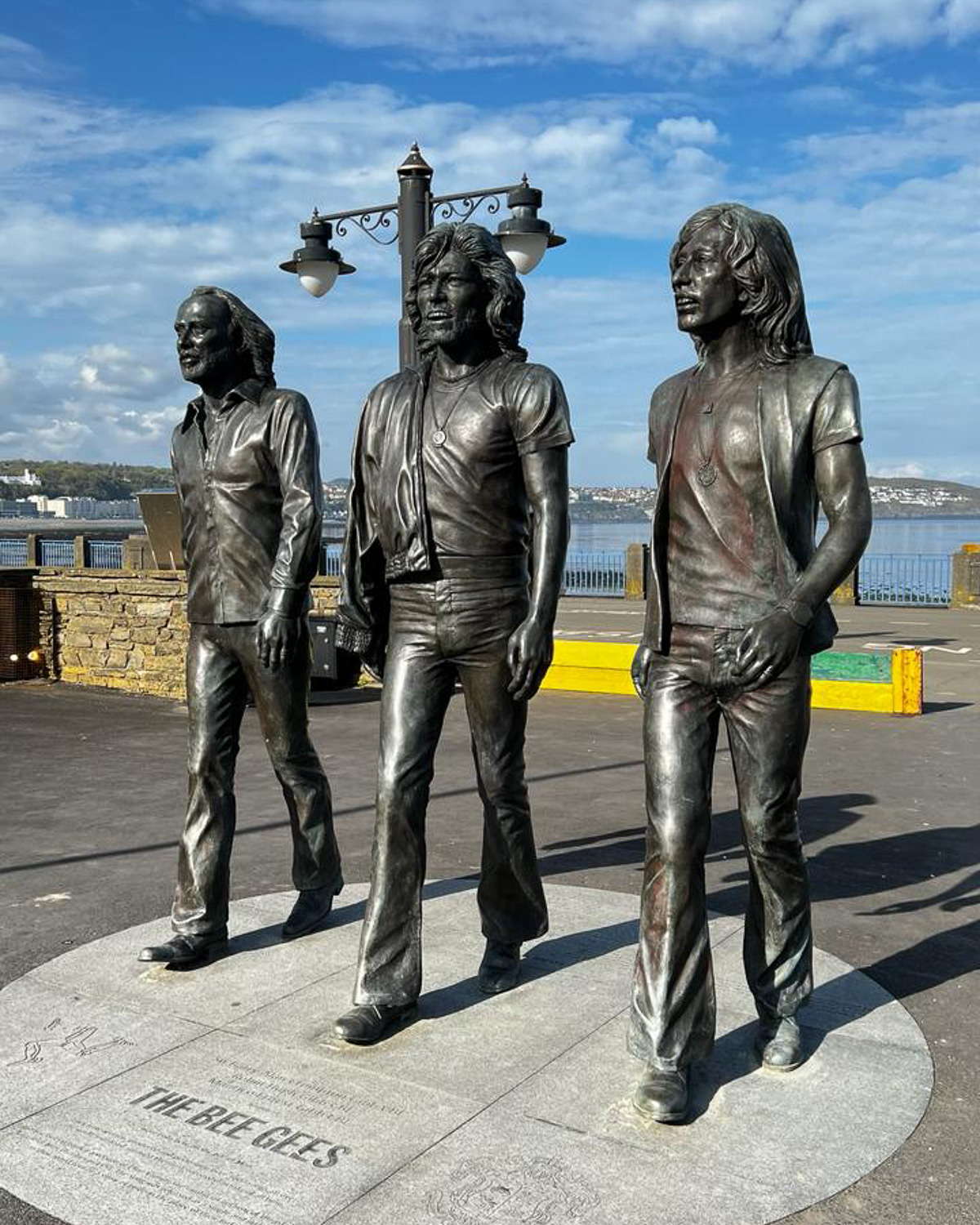
Douglas North Quay
At the end of the promenade closest to the ferry terminal, the road turns into the marina area of North Quay. This area is a little more sheltered, and has become a popular place for new stylish restaurants and bars to open.
Look out for two branches of Noa Bakery, one on the old Market Hall which also houses a co-working space. We also heard good things about Little Fish Cafe and 14 North restaurants where you can find local seafood dishes and Kiki Lounge, a cocktail bar with a playful tropical theme.
3. Douglas Bay Horse Tramway
Another traditional feature of the Douglas seafront is the Horse drawn tram that runs from one end to the other. Harking back to the Victorian era when trams like this were the main way to get around, the original restored tram cars run on 3 foot wide rails, each drawn by a horse known as a ‘trammer’.
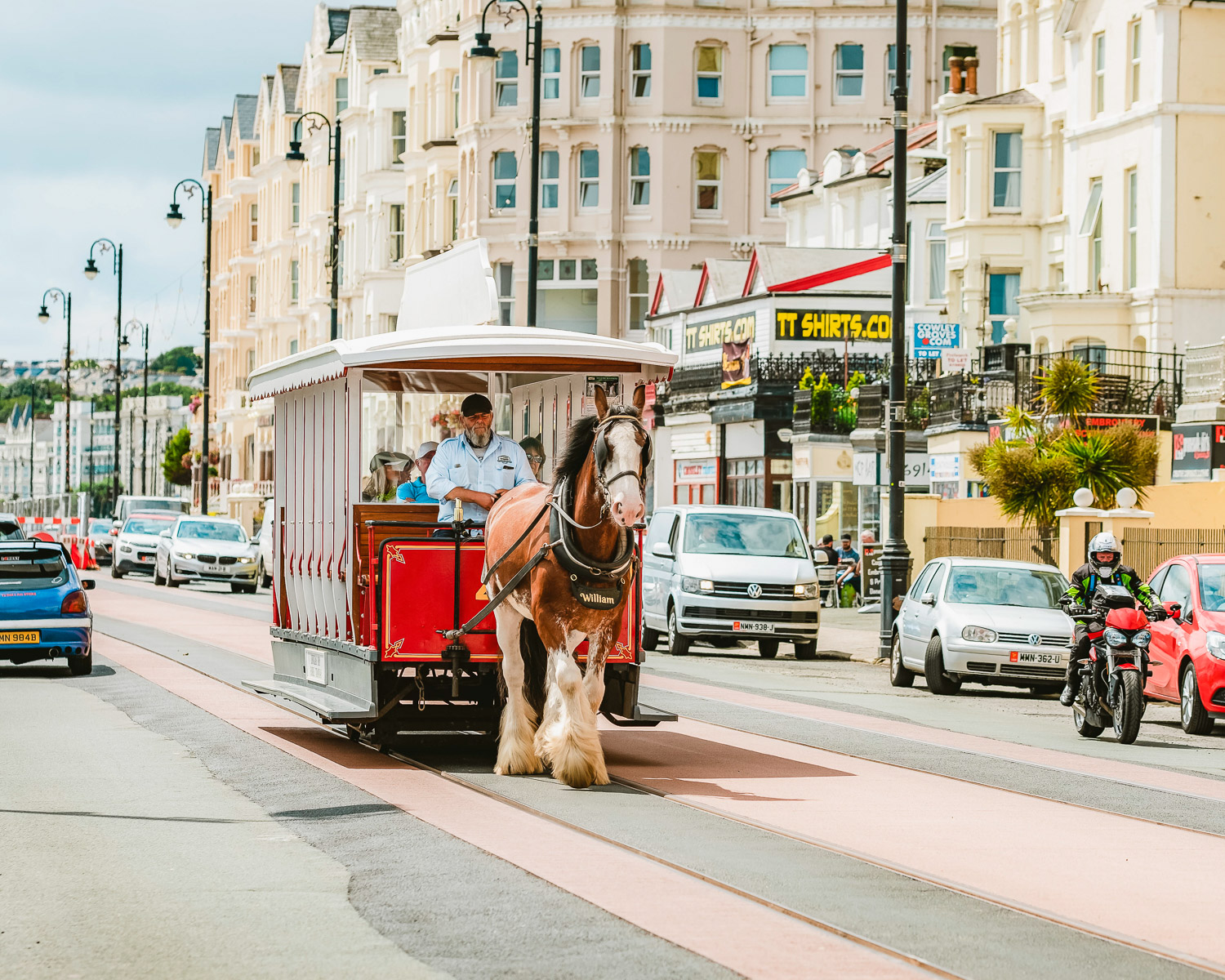
While elsewhere I’d be cautious due to issues around the treatment of animals, we were reassured that the horses are very well cared for. After 15 years service they spend their retirement in the fields of the Home of Rest for old horses, just outside Douglas where you are free to visit them. The tram runs April to October from Villa Marina to Derby Castle, where it connects with the Manx Electric Railway.
Check out the best restaurants on the Isle of Man
4. Manx Museum in Douglas
I’d highly recommend a visit to the Manx Museum on the cliffs of Douglas behind the seafront, to get an insight into different aspects of life on the Isle of Man.
You could easily spend hours in here, but our quick tour took in the national collection of paintings by Manx artists, a dip into the island’s Celtic and Viking heritage, the connections with the sea, and the coming of tourism in the 19th century to the Isle of Man.
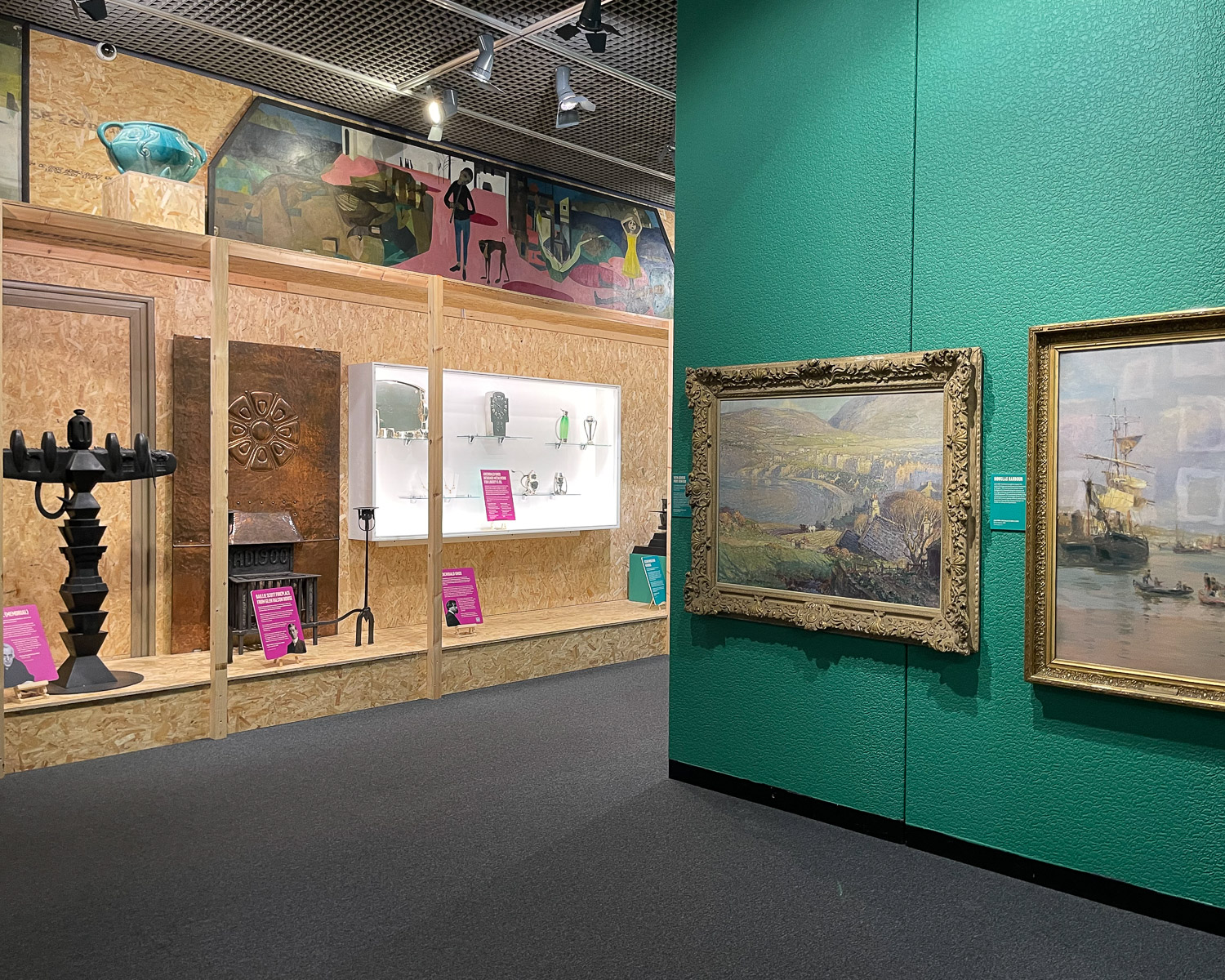
On the lower floors is the TT exhibition, which gives some insights into the development of Isle of Man’s motorsport mania, with bikes and memorabilia from some of the “gladiators of the race”. I concluded that motorbike racing is very much a man’s world, although I did spot Beryl Swain who was the first woman to race in the solo TT motorbike race (as opposed to sidecars) in 1962. Good on you Beryl!
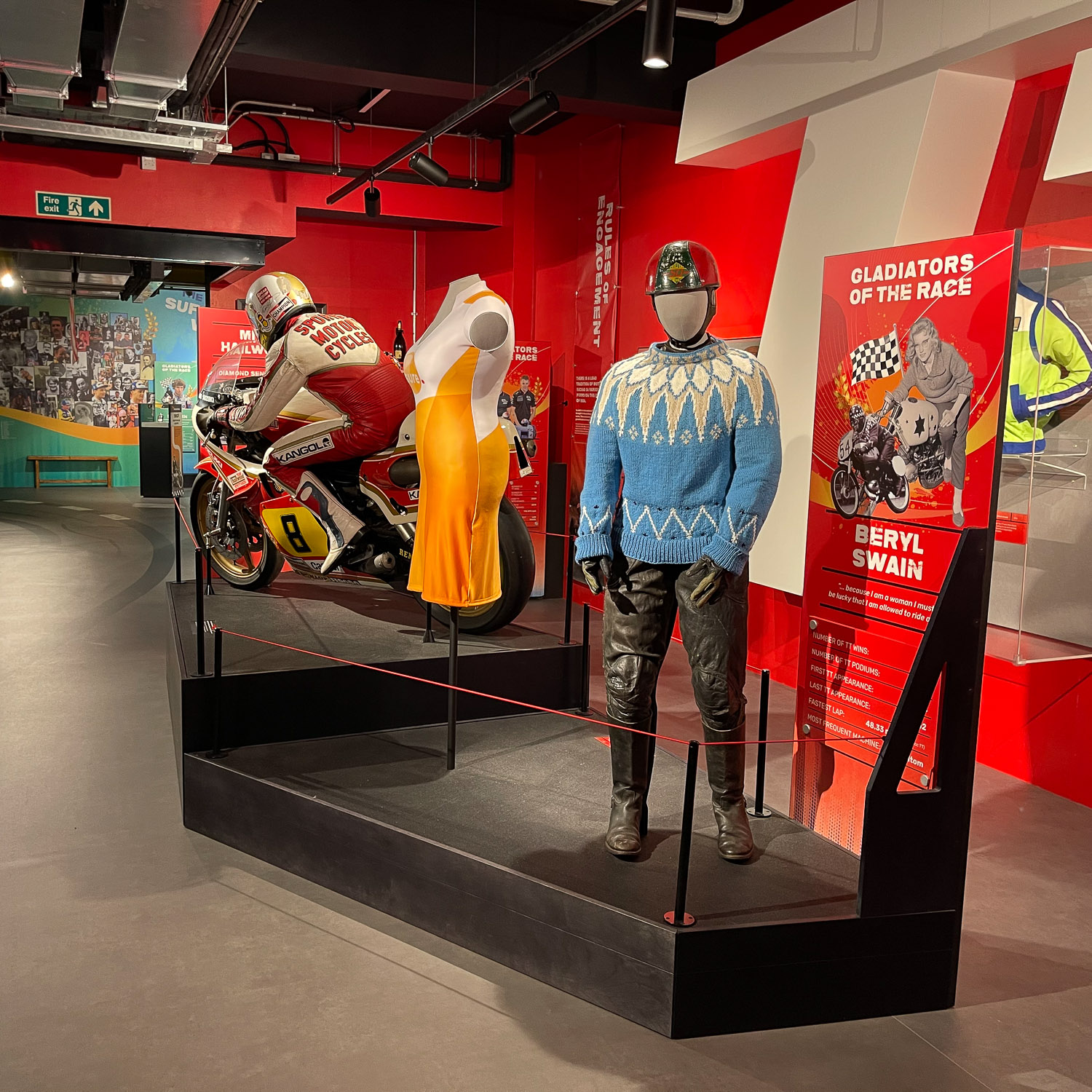
Where to eat in Douglas
Head to North Quay, where some of the best restaurants are located. We like Noa Markethall or Noa Bakehouse for brunch, Little Fish Cafe or 14 North for dinner and Kiki lounge for cocktails and small plates.
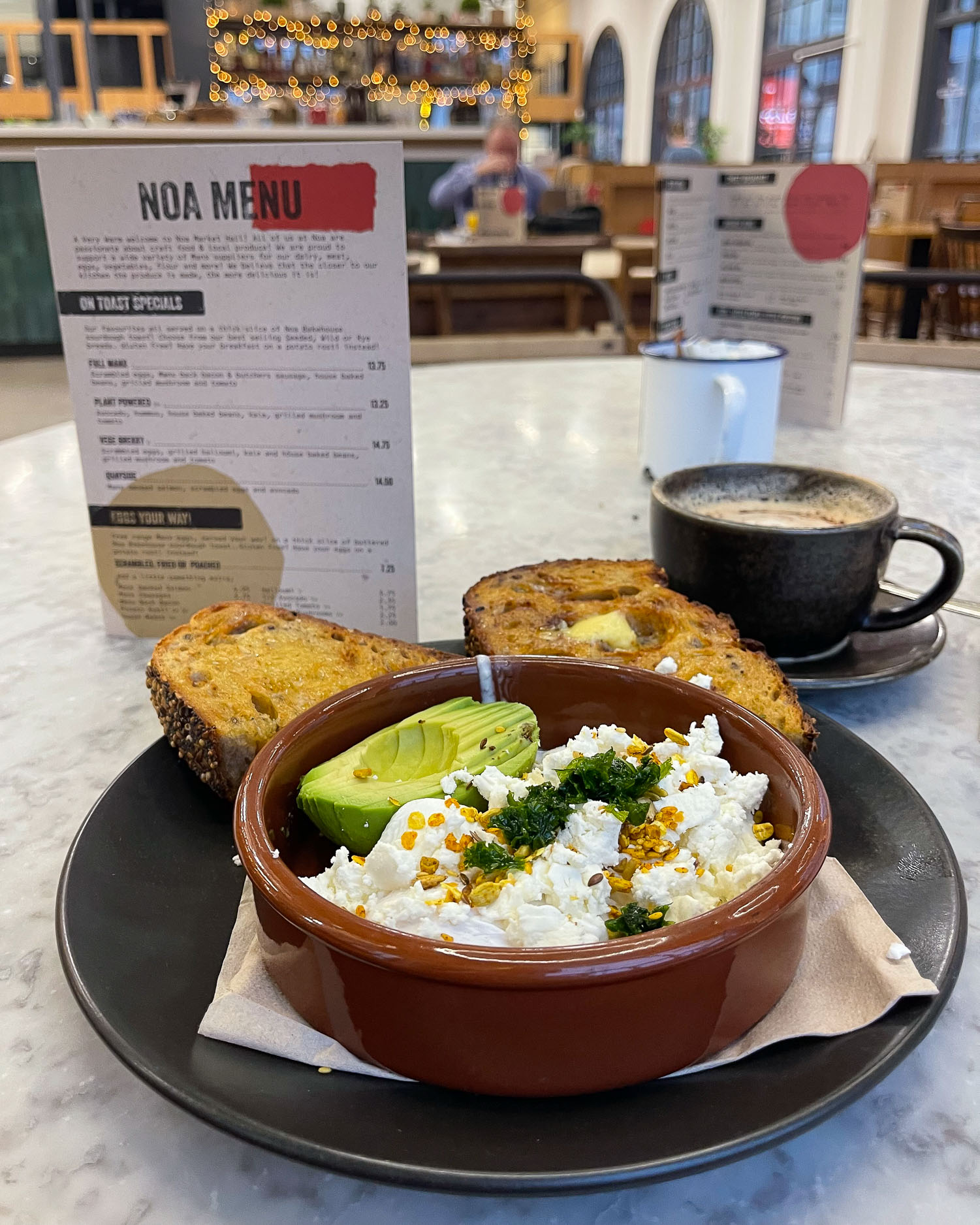
Look out for dishes that are marked Manx Menu, which have been chosen to showcase the best of the Isle of Man in terms of local produce and flavours.
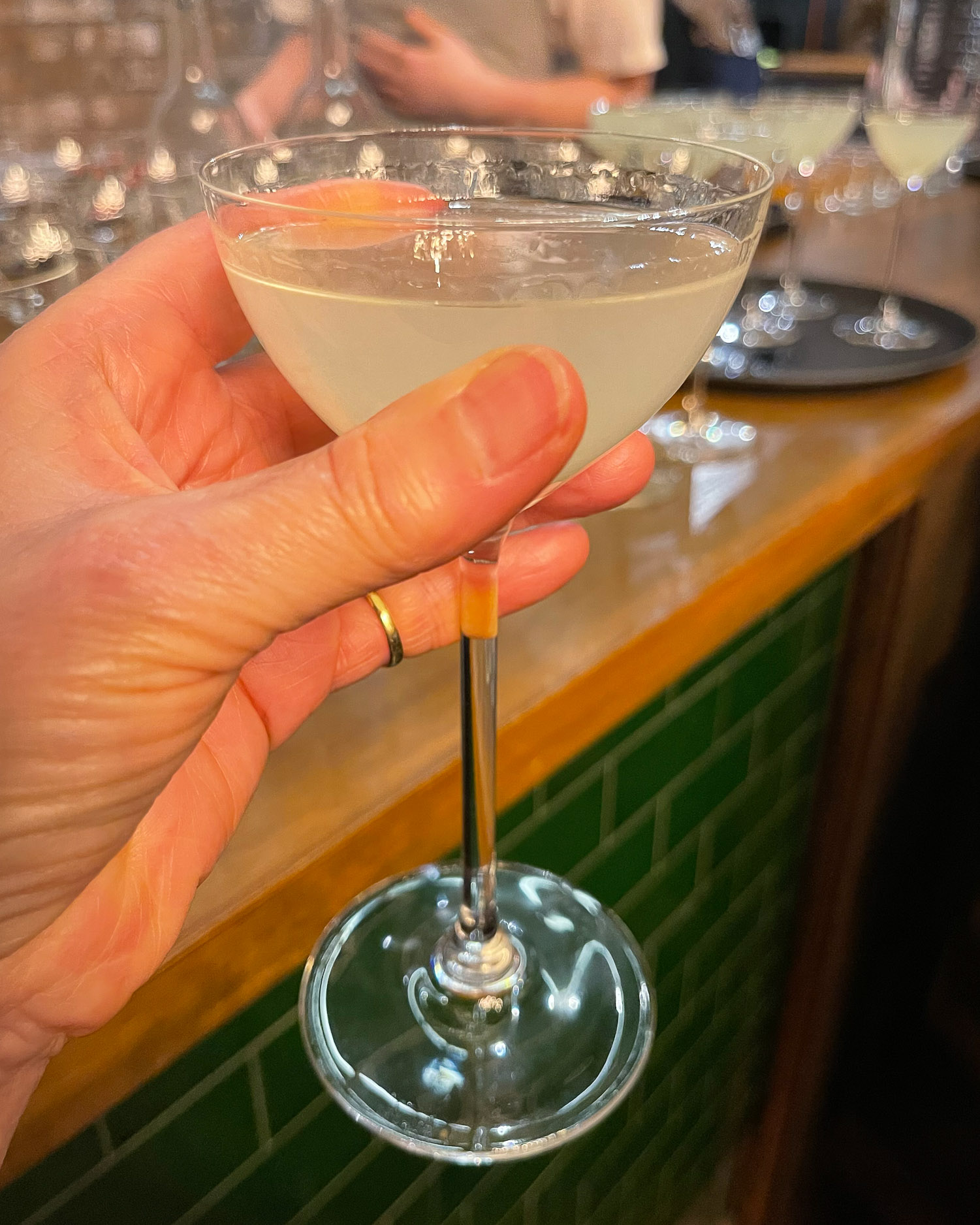
A little out of the town centre, but perfect for cyclists, bikers or motorists is Cycle 360 for their bikeshop, coffee and all day dining.

Where to stay in Douglas
We recommend staying at the Claremont Hotel or Halvard Hotel in Douglas for boutique style. The Empress Hotel is another comfortable and good value option on the seafront.

The 4-star Claremont Hotel is located on the promenade and offers scenic views across Douglas Bay
If you have a car and prefer to stay just outside Douglas, take a look at the Comis Hotel & Golf Resort, which is especially suited for larger groups.
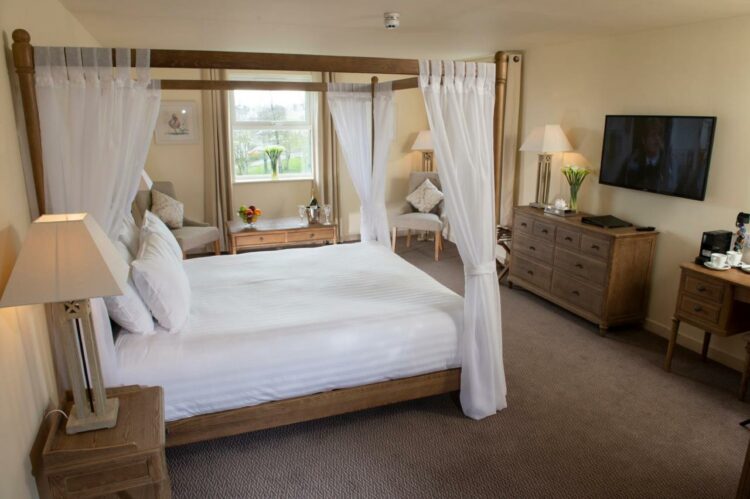
The Comis Hotel & Golf Resort just outside Douglas, with golf course and ample parking
5. Manx Electric Railway
A number of heritage railways are some of the top tourist attractions on the Isle of Man, operating from end March to beginning November. The Manx Electric Railway or M.E.R. was opened in 1883 and continues to run regular daily services from Douglas to Laxey and on to Ramsey.

We enjoyed the ride from Laxey to Ramsey in the two restored railway carriages, complete with their original wooden interiors. Since the railway runs mostly along the coast, there are some stunning views over both sea and countryside.
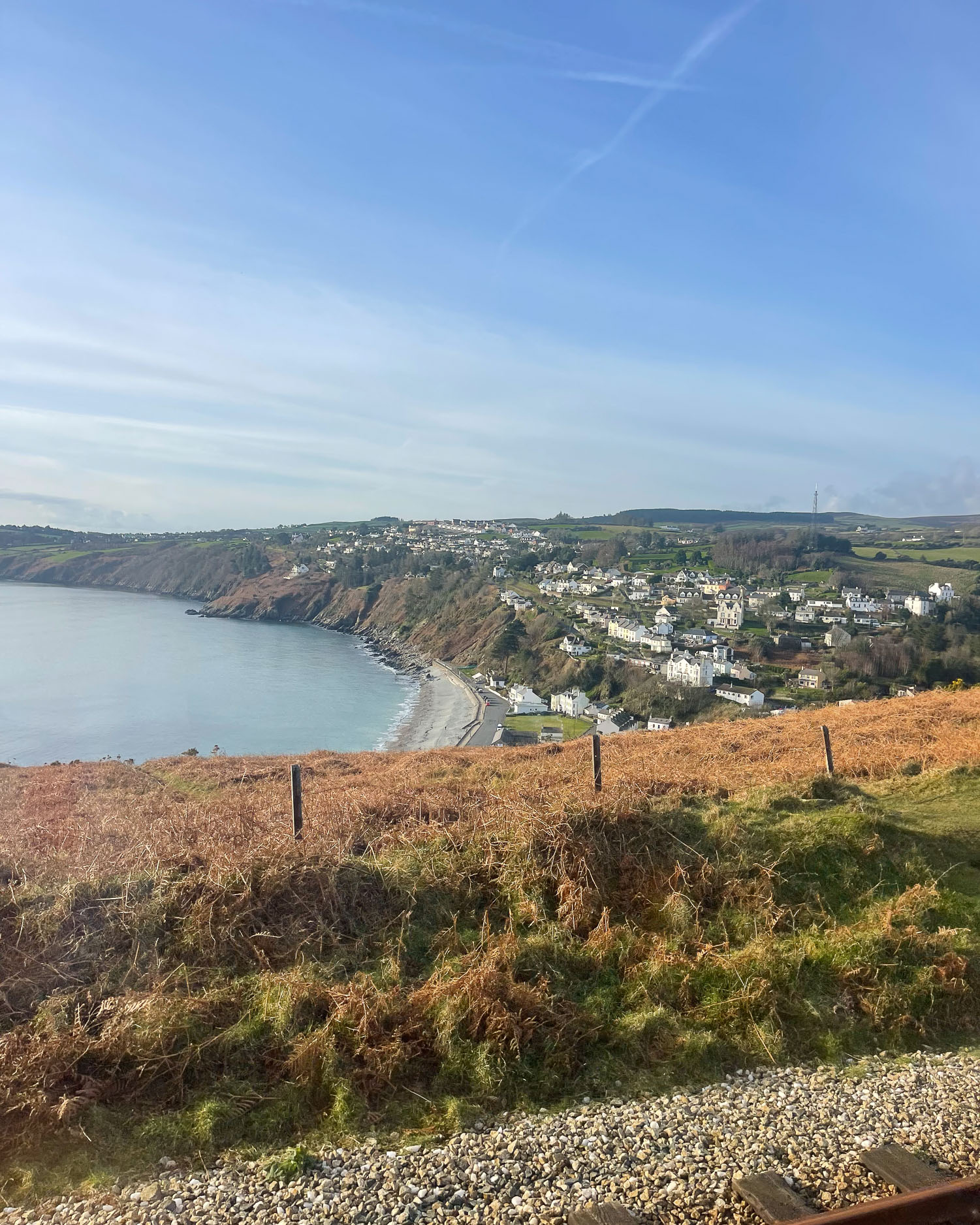
It’s a relaxing way to get around, enabling you to visit Laxey and Ramsey without the need for a car, with a connection to the Snaefell Mountain Railway at Laxey. There are a number of request stops along the route, making this a great option for hikers who want to walk sections of the Raad Ny Foillan coastal path.
6. Isle of Man Steam Railway
While the M.E.R. heads north out of Douglas, the Isle of Man Steam Railway goes in the opposite direction, south from Douglas to Castletown, then on to Port Erin. The Victorian Railway opened in 1873 and offers a nostalgic experience from the heydays of steam railway, when families from the industrial towns of Britain’s north west flocked here for their holidays.

While the railway journey offers lovely countryside and coastal views, the steam railway also connects plenty of interesting spots to get off. You can use it to get to Ronaldsway airport, some beautiful glens, the historic sights of Castletown and the beach at Port St Mary, before you finally reach Port Erin.
Look out for the beautifully restored waiting rooms at Port Erin station where there’s also a Steam Railway Museum.
7. Groudle Glen and Railway
Accessible by the Manx Electric Railway, a pretty glen (small wooded river valley) to visit just north of Douglas is Groudle Glen, with a bubbling stream and Victorian waterwheel. The restored wheel was originally built to pump water to a nearby hotel and there are wooden boardwalks and paths through the glen, leading down to a pebble beach.
The big attraction of Groudle Glen is another small heritage railway, that runs from the upper part of the glen, to the Sea Lion Rocks Tearoom overlooking the sea. This tearoom operates as a visitor centre, with information about the railway’s history. It’s named after the former cliff top zoo that held sea lions and polar bears in the past.
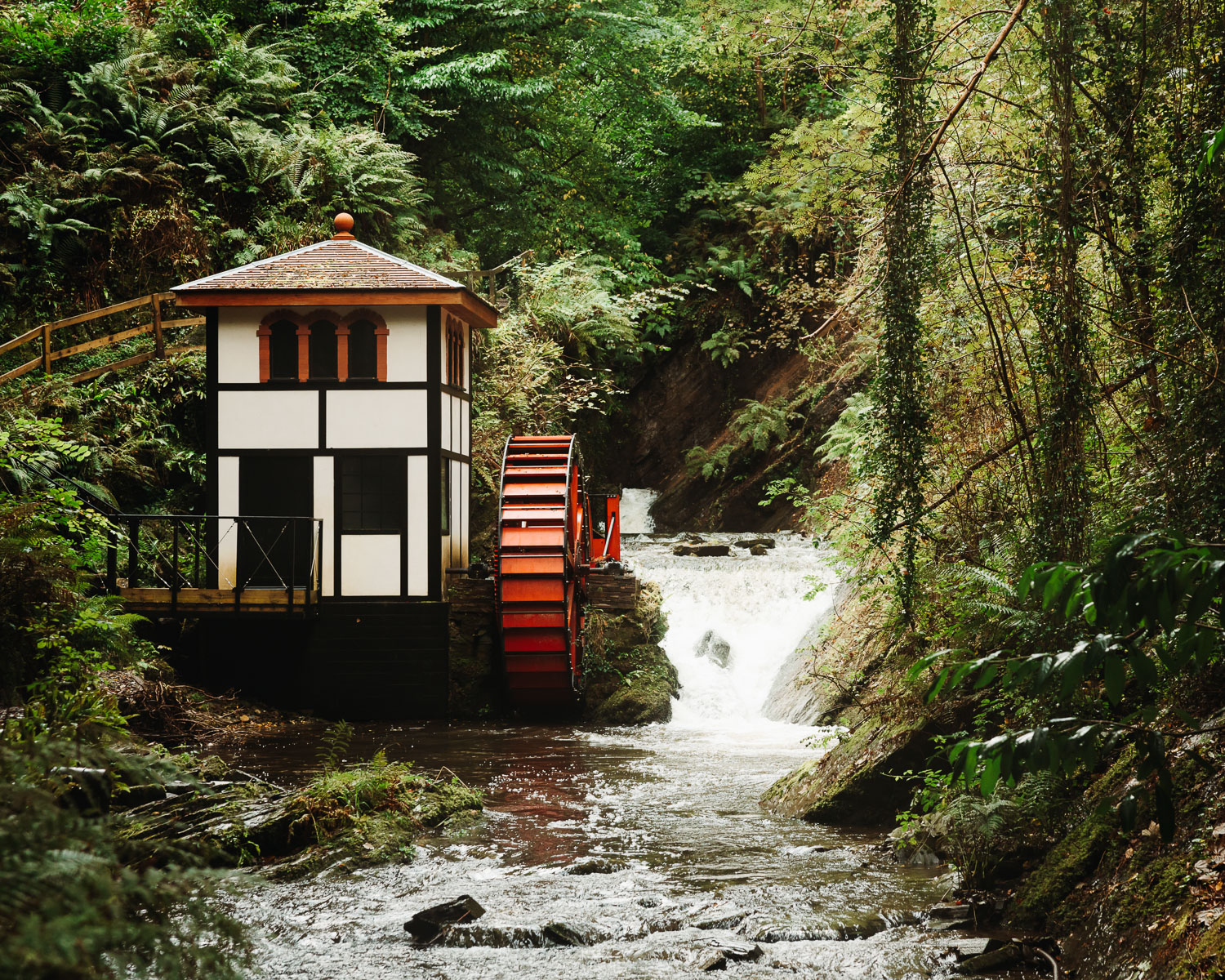
The heritage railway was built in 1896 as part of the Groudle Glen pleasure grounds and ran until the 1960s when it fell into disrepair. It has now been restored and is run by volunteers to offer a nostalgic day out by the sea.
You can easily reach Groudle Glen on the Manx Electric Railway that stops nearby. The Groudle Glen Heritage Railway runs on Sundays from May to October and Wednesday evenings June to August, with special events throughout the year.
8. Great Laxey Wheel
Continuing north on the Manx Electric Railway will bring you to the village of Laxey, and one of the island’s biggest heritage attractions, the Great Laxey Wheel. This feat of Victorian engineering was built in 1845 to pump water from the Glen Moaar mines that operated here to extract zinc, lead and copper. The wheel was named “Lady Isabella” after the wife of the Isle of Man’s governor of the time.
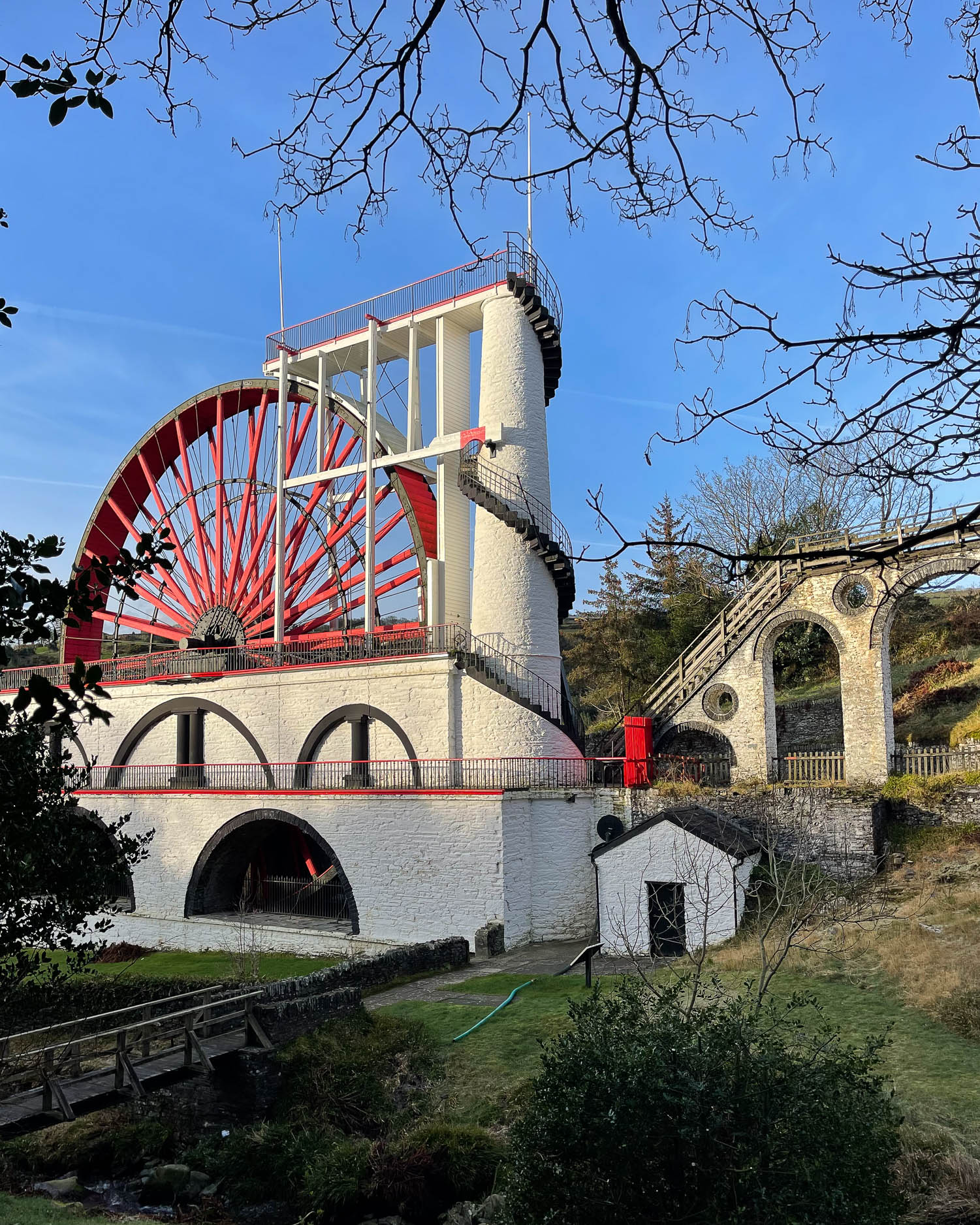
After the mines closed, the wheel was acquired by the Isle of Man government, restored and re-opened as a heritage attraction. You can climb up the steps behind the wheel to the platform at the top, with views over the surrounding area. Following the line of the stone viaduct behind the wheel, look out for the Miner’s trail, a circular path that leads up the Glen Mooar valley towards the Engine House and other old stone buildings from the mine.
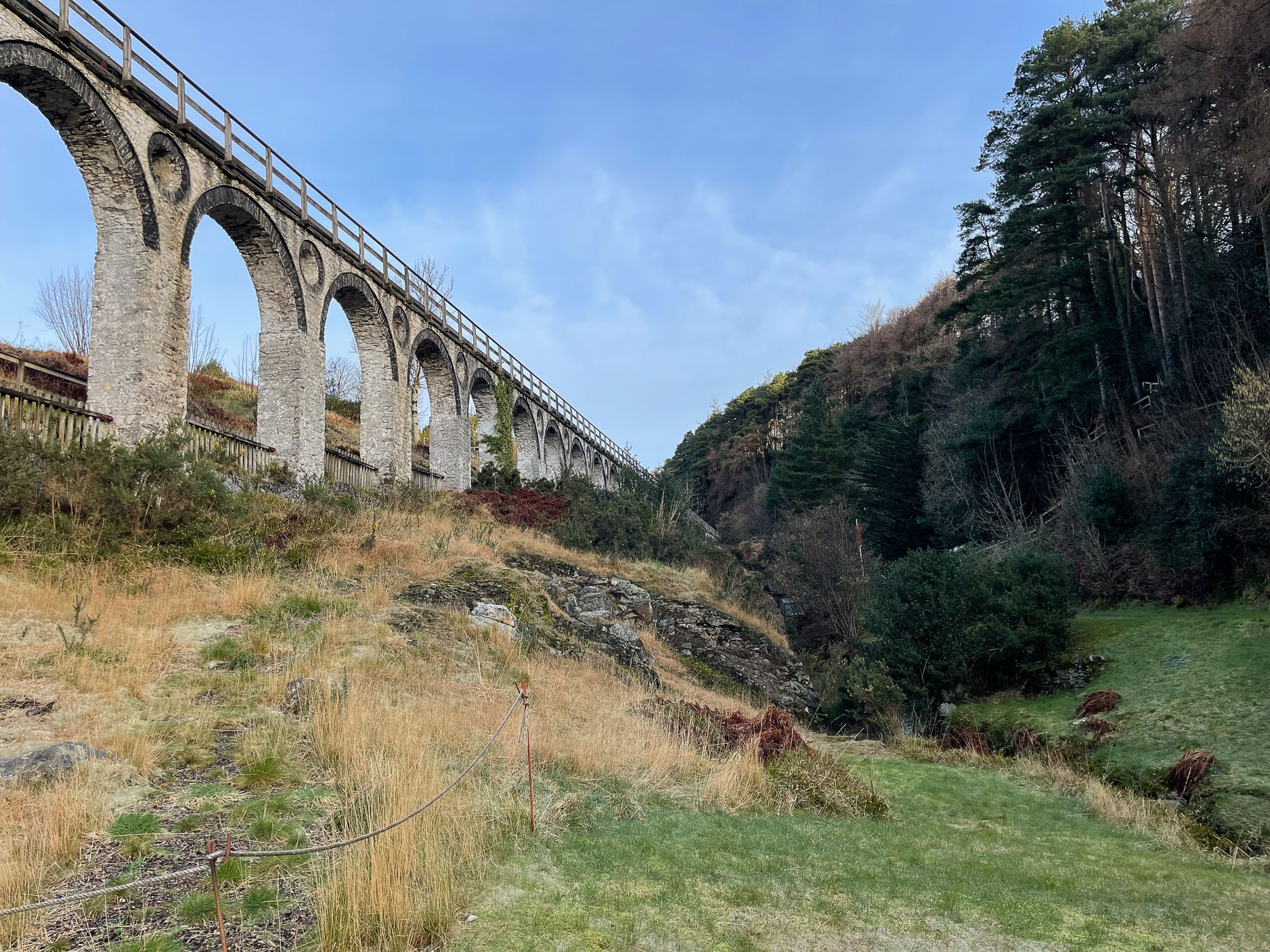
On the road below the Great Laxey wheel is a smaller wheel on the Washing Floor, where ore from the mine was processed and then taken away by horse tram to be transported by ship to the smelting works. Here you’ll find another small heritage railway, The Great Laxey Mine Railway, with steam trains running on Saturdays from Easter to September.
Once you’ve finished your visit, we recommend heading down the hill to spend some time around Laxey harbour and beach, which is a good place for lunch. Walk downhill following the line of the river to reach the harbour.
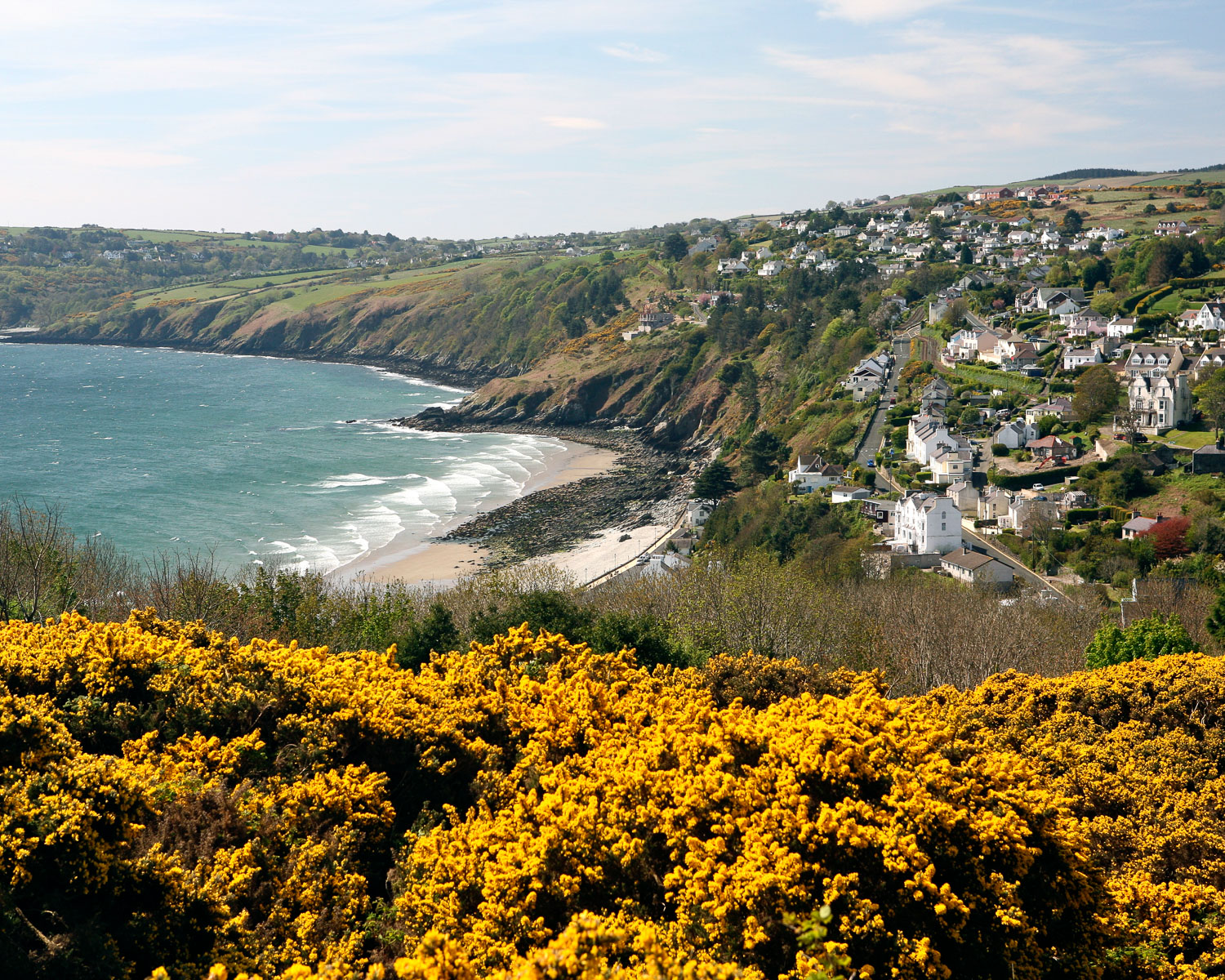
9. Laxey village and beach
Laxey village is located in a scenic cove with houses built into the steep hillside. It’s named after the old Norse word ‘Laxa’ for Salmon, for the salmon filled river that flowed down the valley into the sea.
The small harbour is bounded by red and green coloured markers, with the stylish Shore Hotel next to Laxey Bridge, on the site of a former brewery. The hotel has an upscale restaurant and cosy pub bar where you can have lunch, as well as luxury rooms.
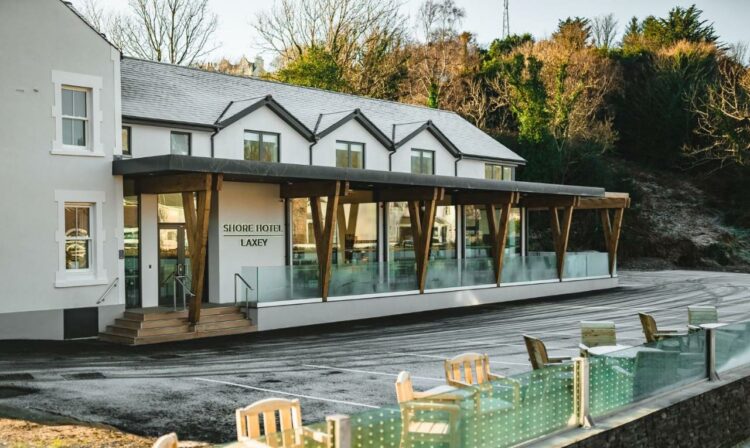
The Shore Hotel in Laxey features luxury rooms, with upscale restaurant and cozy pub
A stroll along the quayside takes you out on the harbour wall, where you can walk if the waves are not too high. Continue along the promenade that runs by the pebble and sand beach, a relaxing place to sit in fine weather.
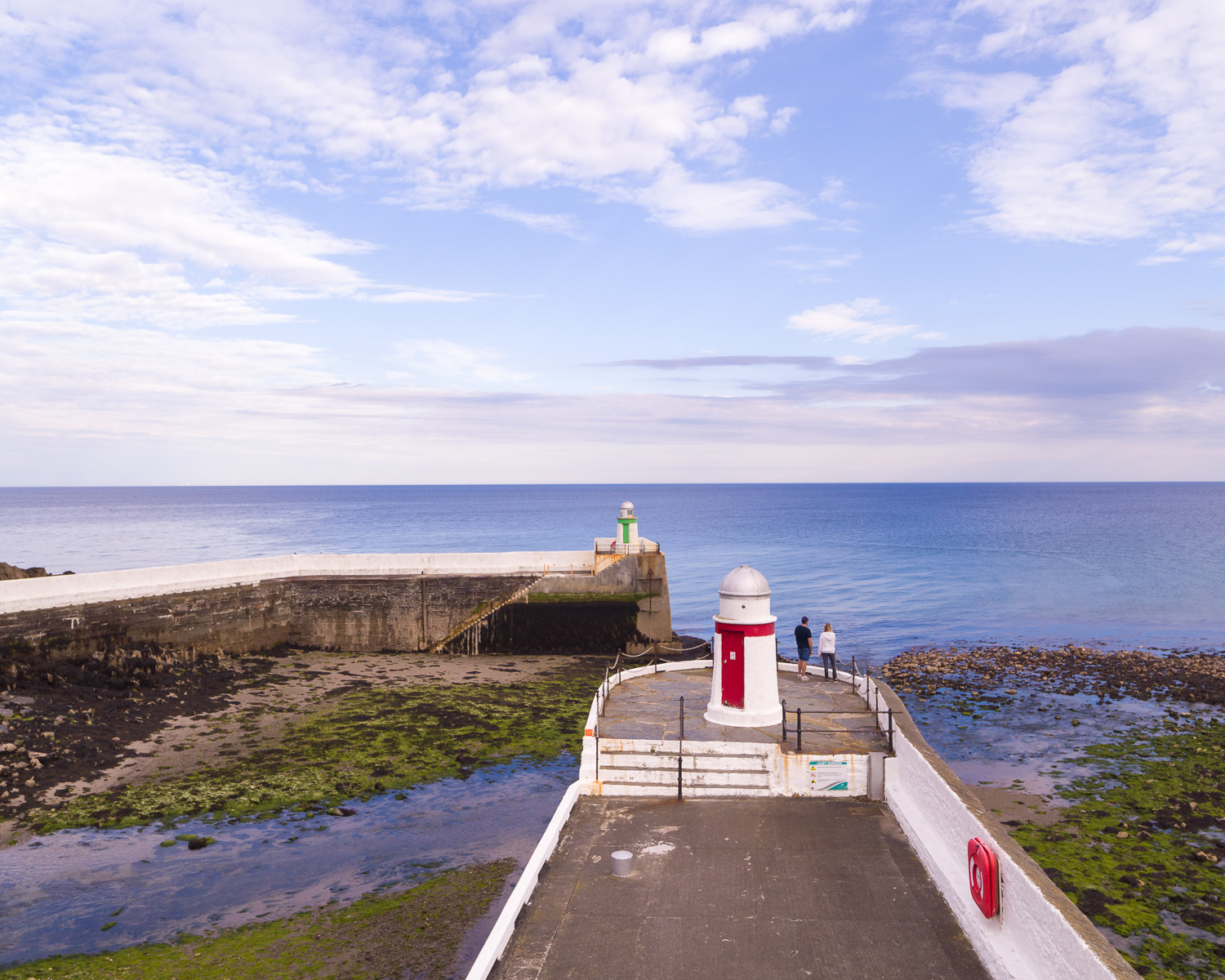
At the far end of the Promenade, we can recommend The Shed, a small cafe serving refreshments year round. Seating is outside overlooking the beach (grab a blanket), or in a cosy wooden building up some steps behind the cafe.
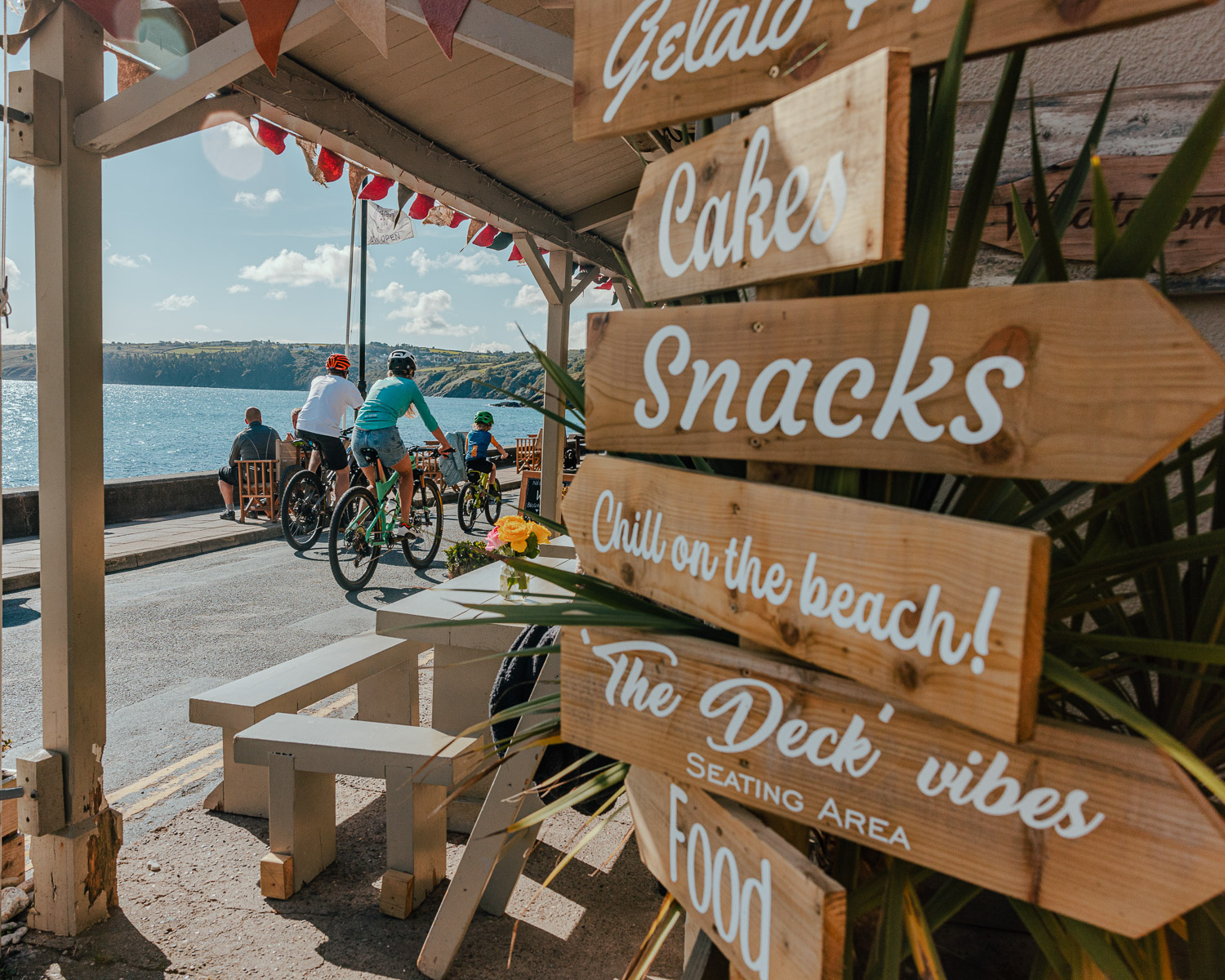
Discover the best restaurants on the Isle of Man
10. Laxey Woolen Mill
On the hillside between the Great Laxey Wheel and Laxey village, it’s well worth a stop at the Laxey Woollen Mills, on the banks of the Laxey River. A textile mill has been on this spot for over 100 years, and continues to weave on the old looms, which you see operating in the showroom.
Look out for the woollen cloth in natural shades of brown and grey, woven from the undyed fleece of the Loaghtan sheep, which is native to the Isle of Man. You may see this rare breed in the fields and they are known for the slightly strange appearance with multiple horns, as well as for their richly flavoured meat.

The Mill also stocks colourful knitwear and accessories, both made from their own cloth and from other suppliers in the Scottish Isles. Head upstairs to find another small shop selling everything made in the Isle of Man tartan.
There’s a pretty blue plaid and a hunting tartan in shades of brown, which was specially designed to pick up the colours of the sea, sky, heather, gorse and white cottages that distinguish the Isle of Man.

11. Snaefell mountain and railway
Inland from Laxey is Snaefell mountain, the highest point on the Isle of Man at just over 2000 feet, known locally as “the mountain”. It’s a popular walk to the summit, from the direction of Laxey or The Bungalow which is on the Snaefell Mountain railway and offers parking near the Victory Cafe.
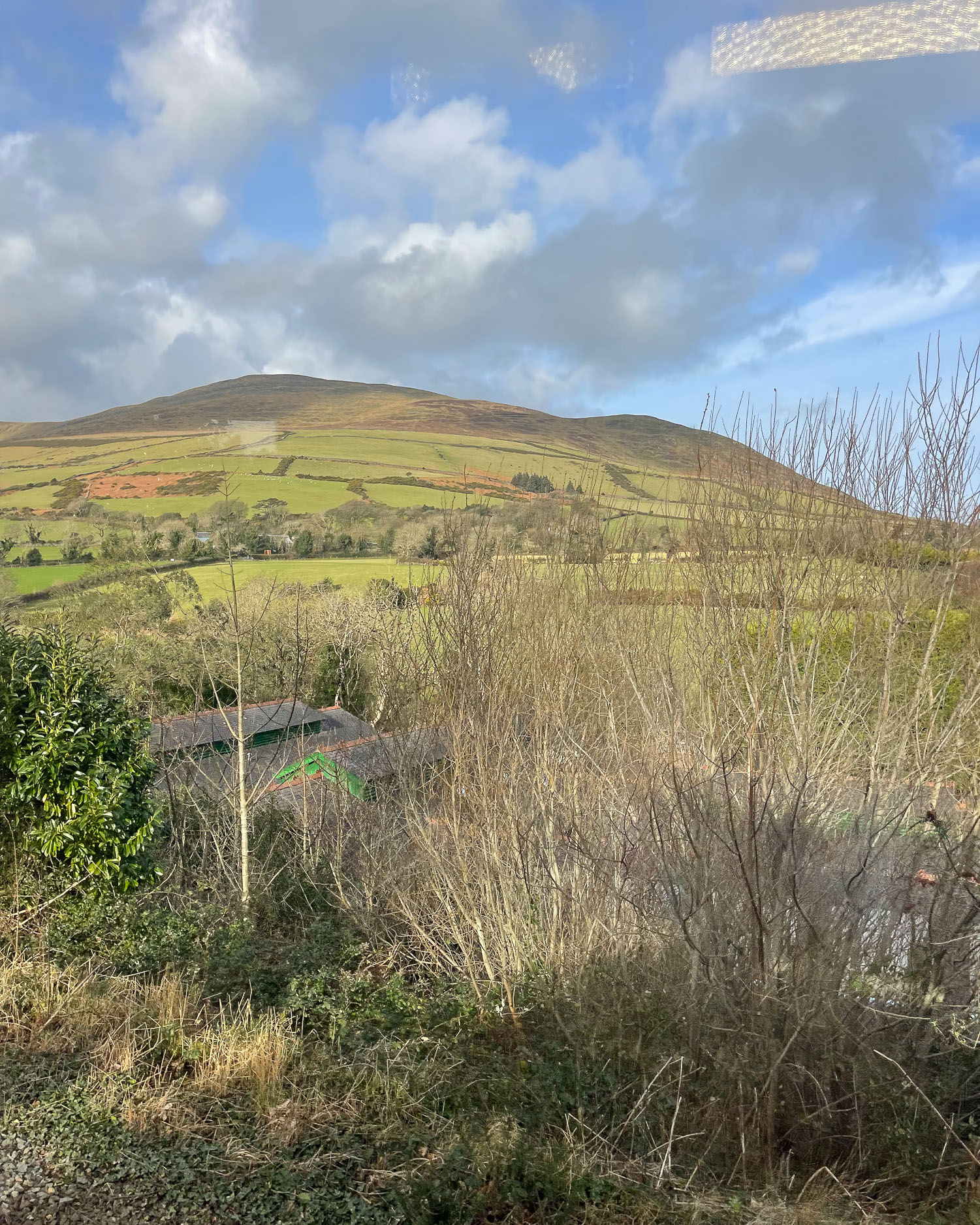
From the top, you’ll be rewarded with a 360 degree view on a clear day, although the mountain is often shrouded in mist. It’s said that from here you can see seven kingdoms; Isle of Man, Scotland, England, Ireland, Wales, and the kingdoms of Heaven and Neptune’s realm. If you’ve walked up, take some refreshments at the Snaefell cafe at the summit, or at the Victory cafe by The Bungalow.
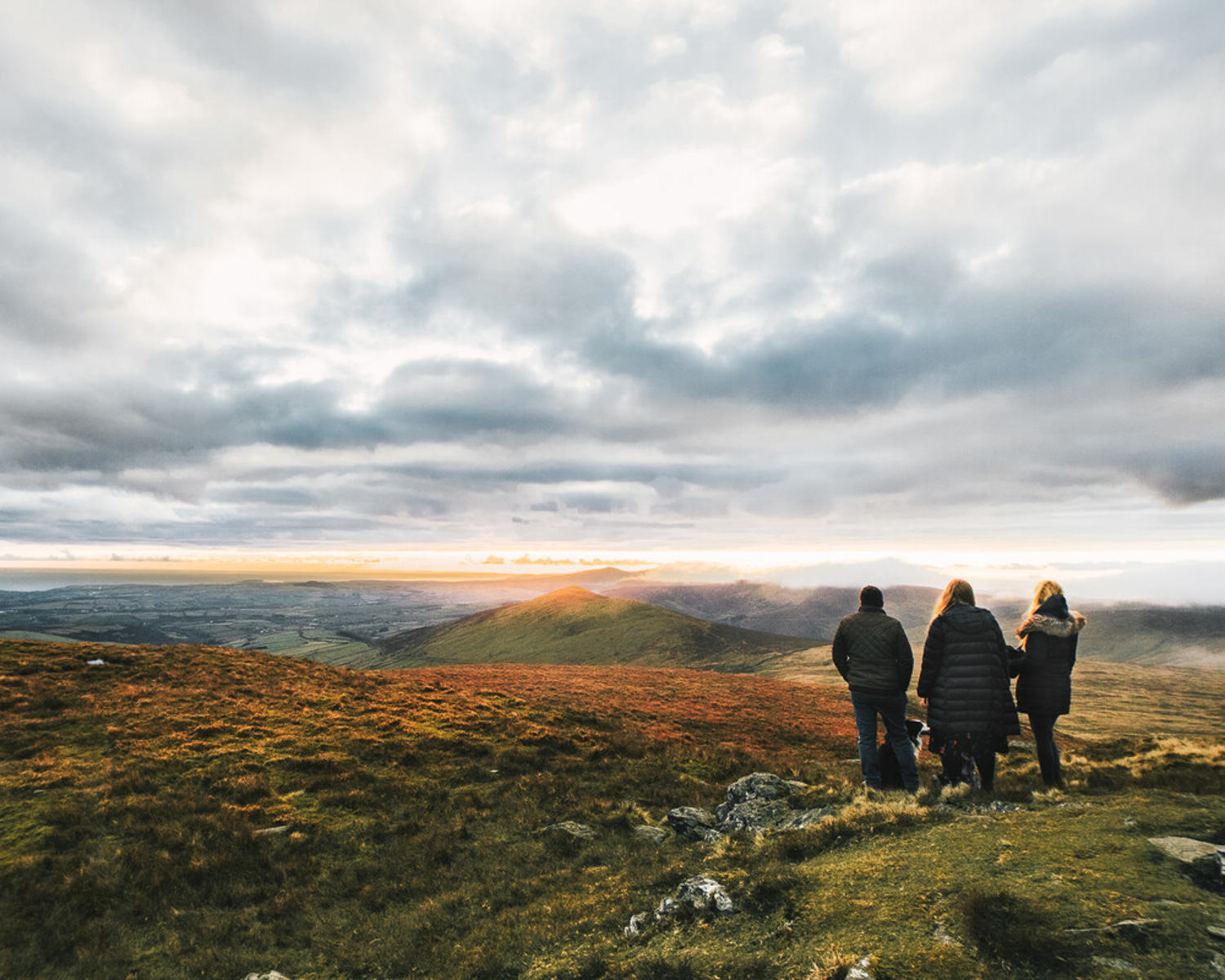
If you don’t want to walk, the Snaefell Mountain Railway will take you from Laxey station to the summit, with a stop half way by The Bungalow. The Victorian heritage railway opened in 1895 and runs from end March to end October, offering wonderful views as it winds up the mountain.
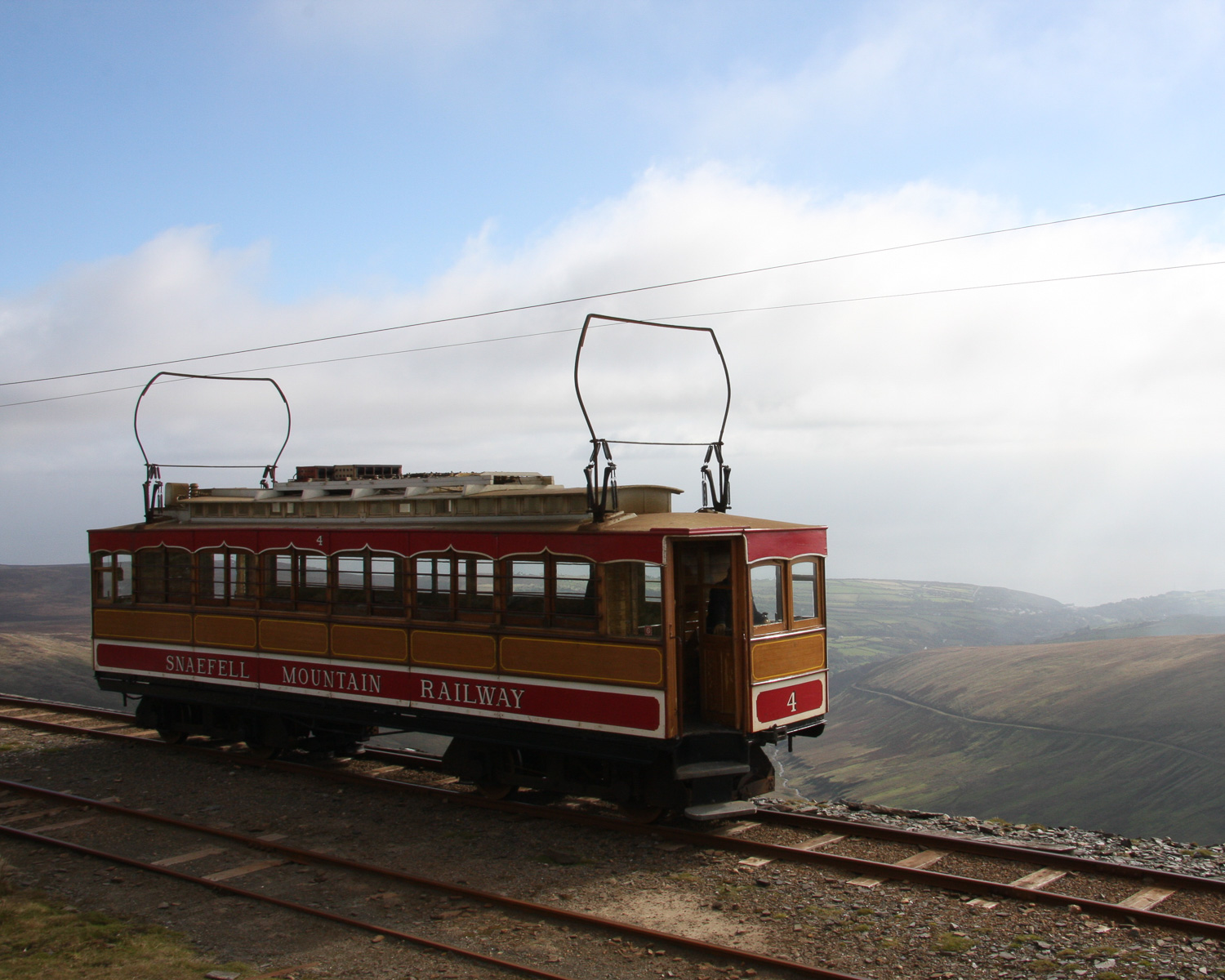
Victory Cafe – where to eat at Snaefell
While you’re at Snaefell, be sure to stop at the Victory Cafe, a stylish motorbike themed cafe with shop selling motorbike clothing and a mini cinema screening TT films. It’s in an old Radar station that’s right by the main road, on the course of the TT Road race.
You can get there on the Snaefell Mountain railway and alight at Bungalow, or take the train up to the top and walk back down to Victory Cafe. Or of course arrive by car, cycle, or motorbike. You’ll find a fun and cozy setting, serving hot drinks, local ciders, gin and beer and specialising in warming home made pies (peas, mash and gravy) and cakes.
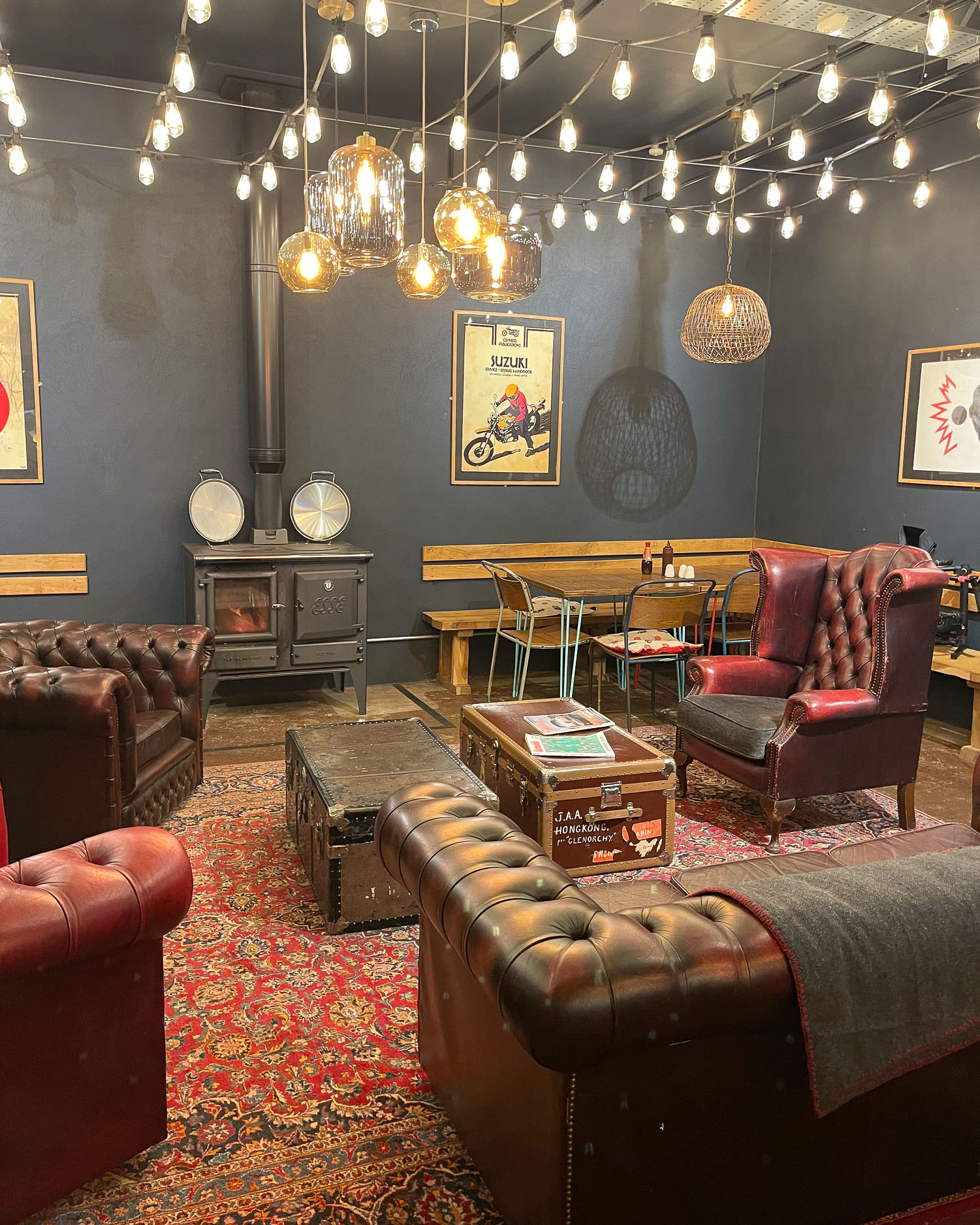
12. Maughold Church and cross
Between Laxey and Ramsey on Isle of Man’s North East coast is the pretty village of Maughold, known for its 5th church and ancient stone crosses. Kirk Maughold houses the Maughold Parish Cross, which formerly stood outside the church gate.
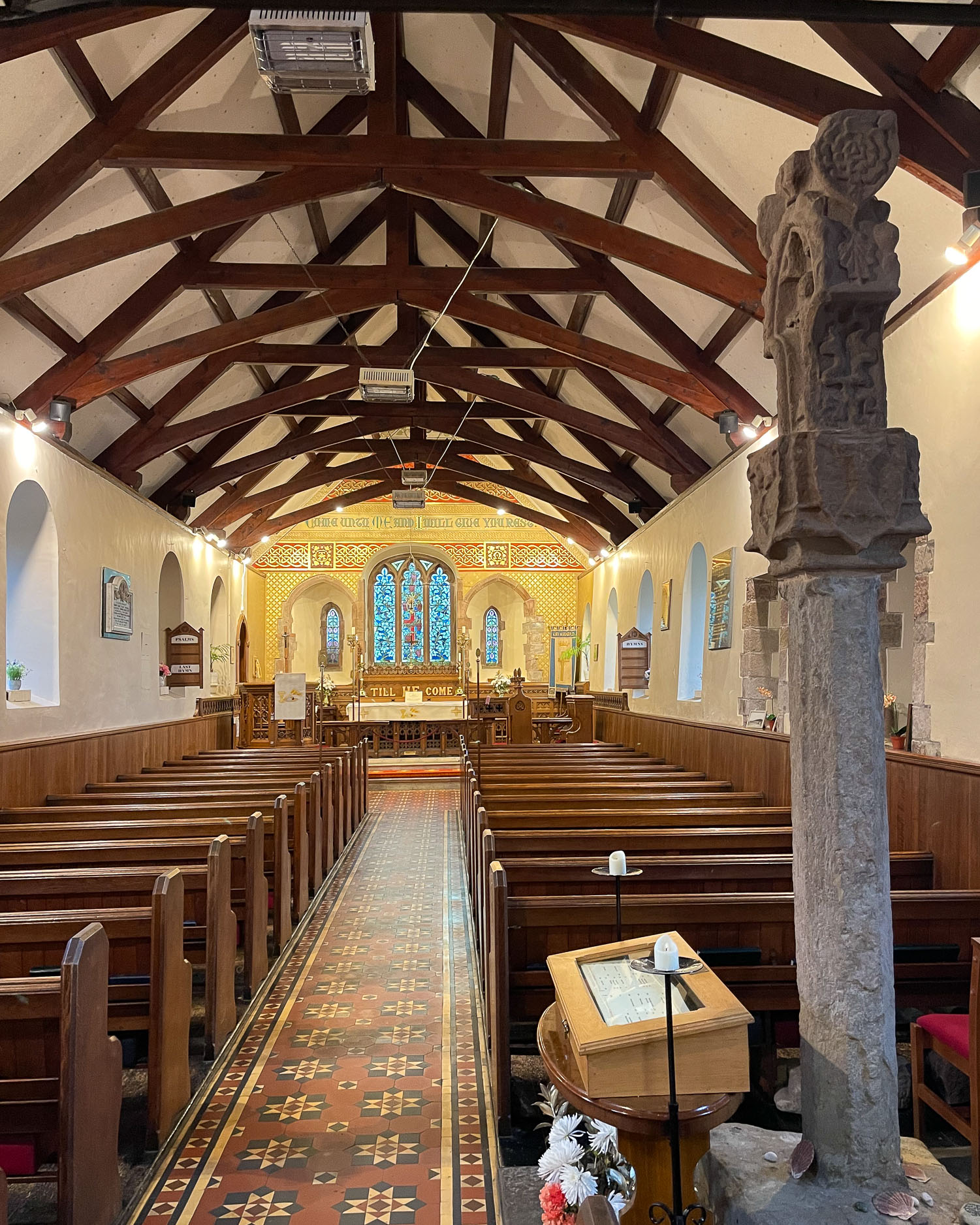
Every parish on the island originally had one of these stone crosses, but only the one at Maughold now remains. Following restoration, the 14th century cross was brought into the church to preserve it from the elements. The Maughold cross is remarkable for the just discernible motifs on each face of the upper cross, including one of the earliest motifs of the Three Legs of Mann, which has become the island’s symbol.
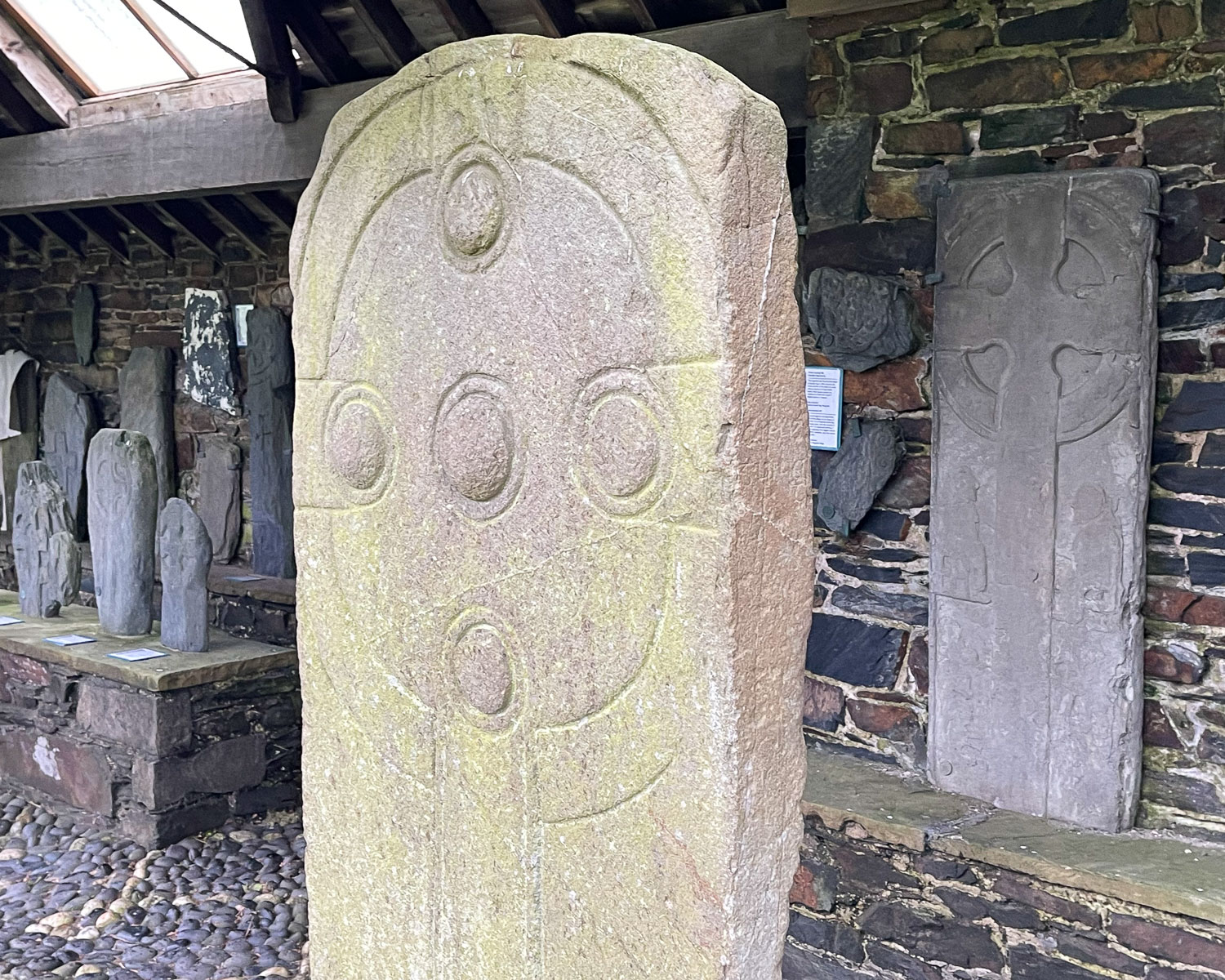
Don’t leave the churchyard without also visiting the shelter housing a large number of other ancient crosses, gravestones and other carving that have been gathered from different parts of the island. Although the carvings have been worn away with time, there are excellent explanations of the meaning of the carvings, which in pre-literate times were designed to tell the story of why and for whom they were erected.
Alight at the Ballajora request stop on the M.E.R. to walk to the village of Maughold.
13. Ramsey town and beach
After the scenic journey to Ramsey, it’s worth taking a look around the town, which is the next largest after Douglas. The seafront is famed for the long Queen’s Pier, where ferries from England and Scotland would bring holidaymakers in Victorian times.
Now abandoned, but hopefully soon under restoration, the pier is named after Queen Victoria, who with Prince Albert visited here in 1847. Up on the hill is Albert’s tower, built in honour of Prince Albert who climbed this hill on their visit and admired the view.

Ramsey offers a long sandy beach that’s gently sloping and ideal for families. A promenade runs from the pier to Mooragh Park at the other end of the beach. This boating lake is a popular summer spot, offering paddle board, kayak and sailing from the Venture centre. There’s a seasonal cafe and the surrounding park is a good place for a picnic.
On the edge of town is the Grove Museum, open end March to October, which is run by Manx National Heritage. It was built as a summer home by Liverpool shipowner Duncan Gibb, and gives an insight into the life of a wealthy Victorian family.
14. Fynoderee Distillery in Ramsey
Just where the Manx Electric Railway stops in Ramsey is the Fynoderee Distillery. You’ll see their beautifully labelled gins in many bars and shops while on Isle of Man, and this is the best place to buy ( and taste!) the full selection.
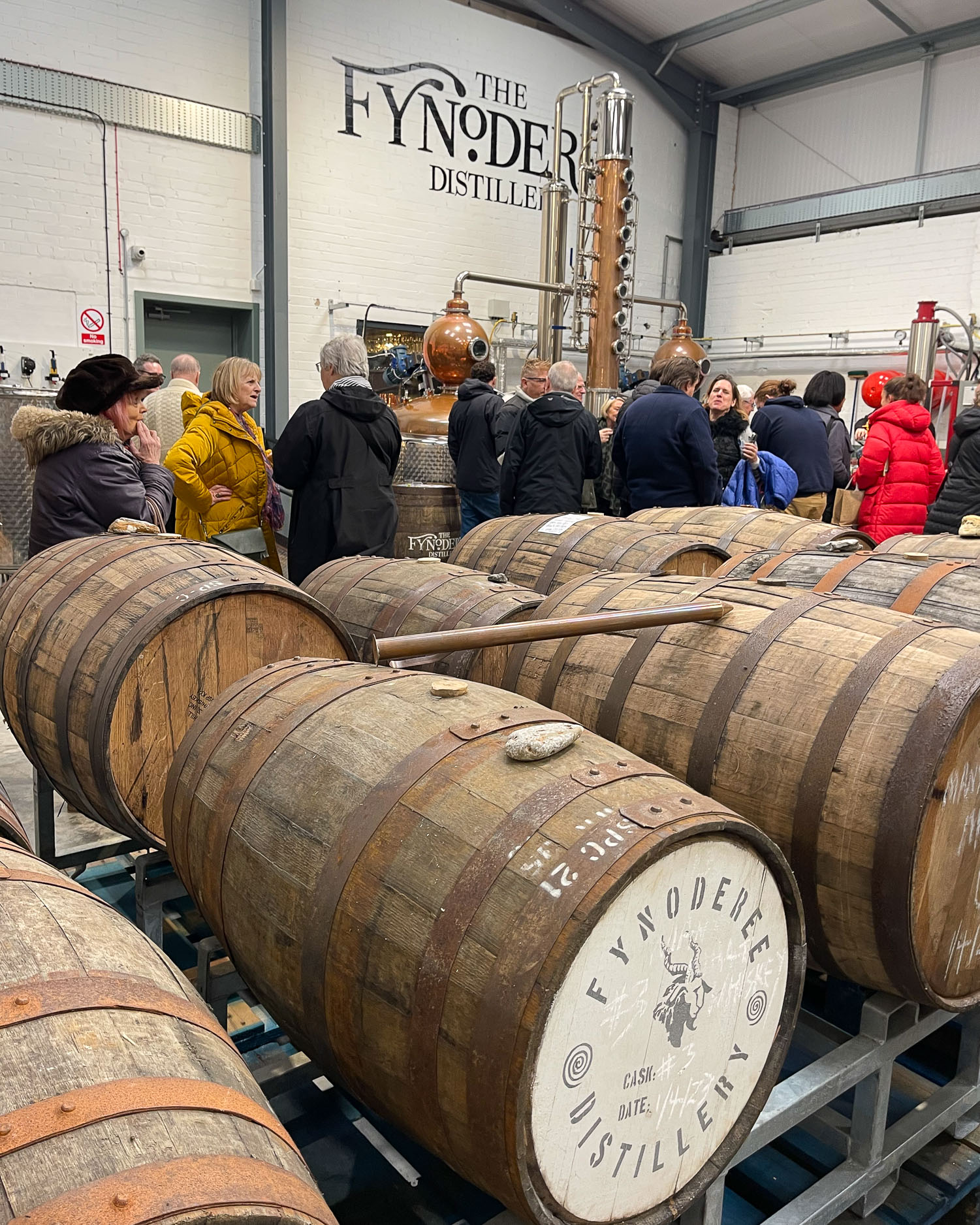
We particularly love the labels for the seasonal gin varieties, craft vodka and rum, inspired by fairies and folklore and designed by local artist Julia Ashby Smyth. The Fynoderee name comes from the Ramsey folk tale of a handsome fairy prince who was turned into a satyr like creature, as a punishment for falling in love with Kitty, the tailor’s daughter.
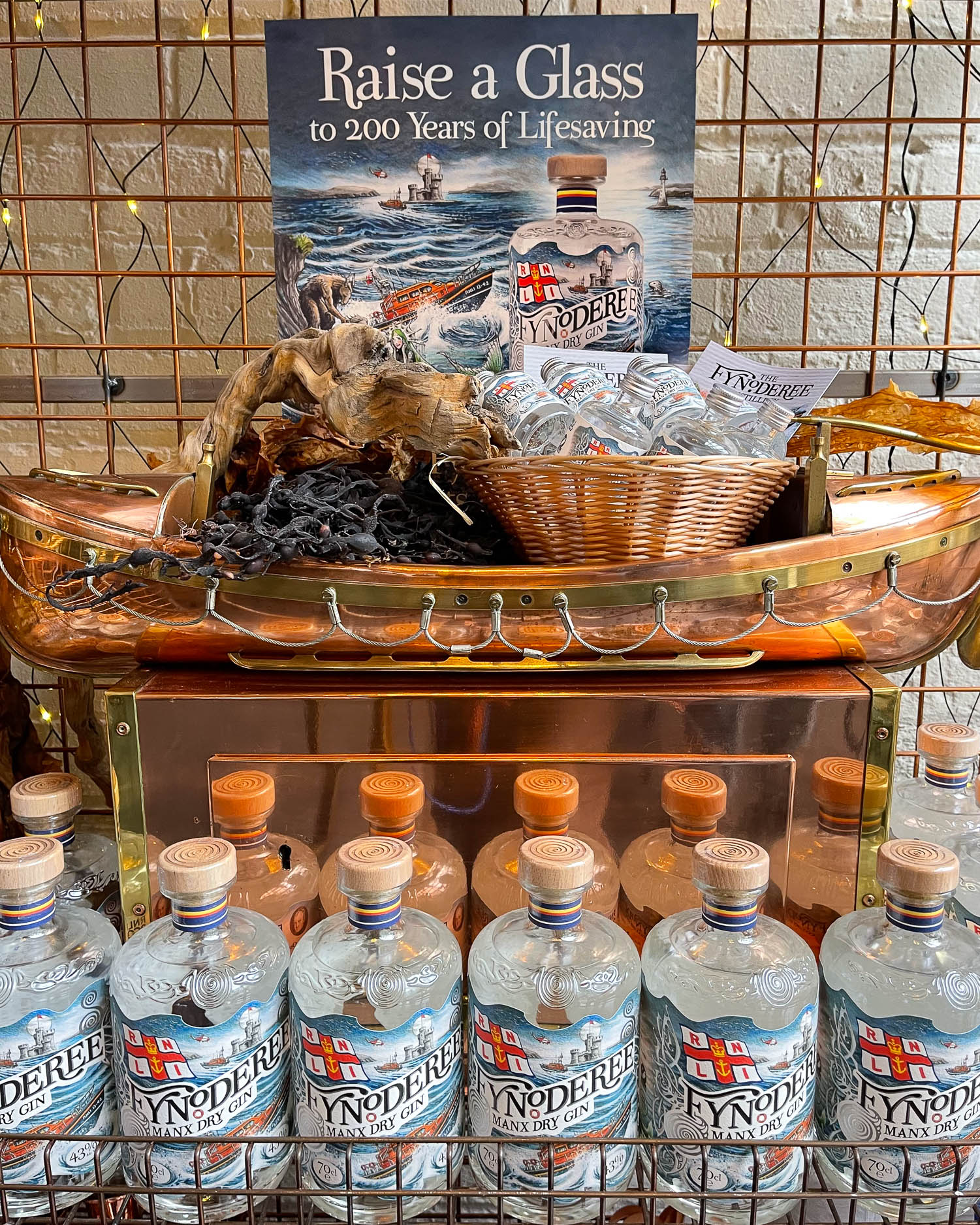
Enquire at Fynoderee distillery about their distillery tours and cocktail making classes. Or of course you can just taste some of the different blends at the bar, accompanied by a mezze plate. Full bottles and miniature sizes of the whole range can be purchased in their shop area. If you like the drinks but don’t want to carry them home, they also ship orders within the UK.
15. Milntown Estate in Ramsey
On the edge of Ramsey and a 30 minute walk from the M.E.R stop is the lovely Milntown Estate. It’s an historic house surrounded by 15 acres of gardens, dating back to the 16th century. The house, which is partially open to the public, was owned by the Christian family, the most famous member of which was Fletcher Christian, leader of the mutiny on the HMS Bounty.
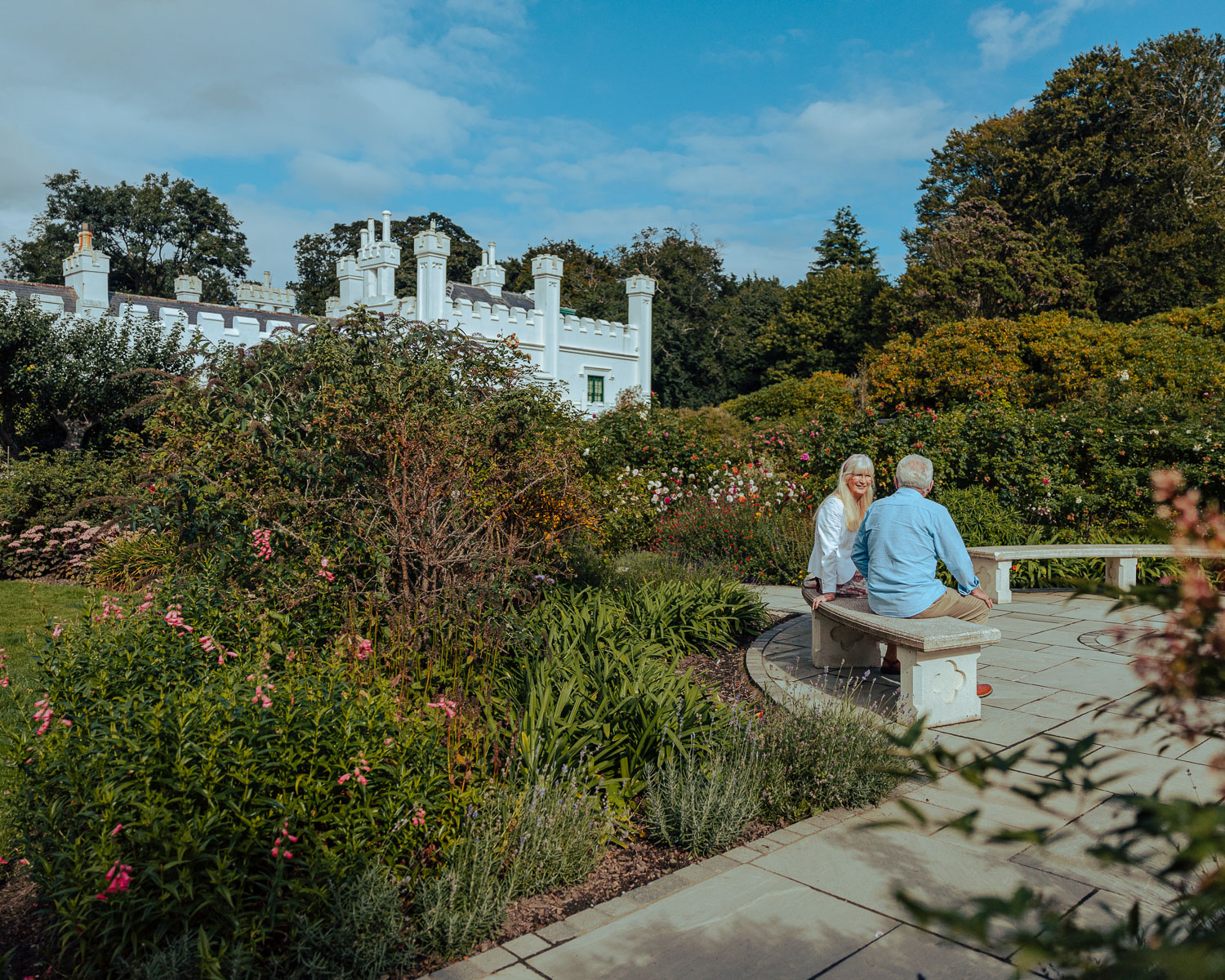
The gardens have something to see in all seasons, and even when we visited in February the snowdrops were thick in the grass by the drives, with camelias and magnolias just coming into bloom. There are displays of spring bulbs, flowering azaleas and rhododendrons and summer roses as well as autumn leaf colour. In the garages are some displays of classic cars and motorbikes, next to the old stone water mill.
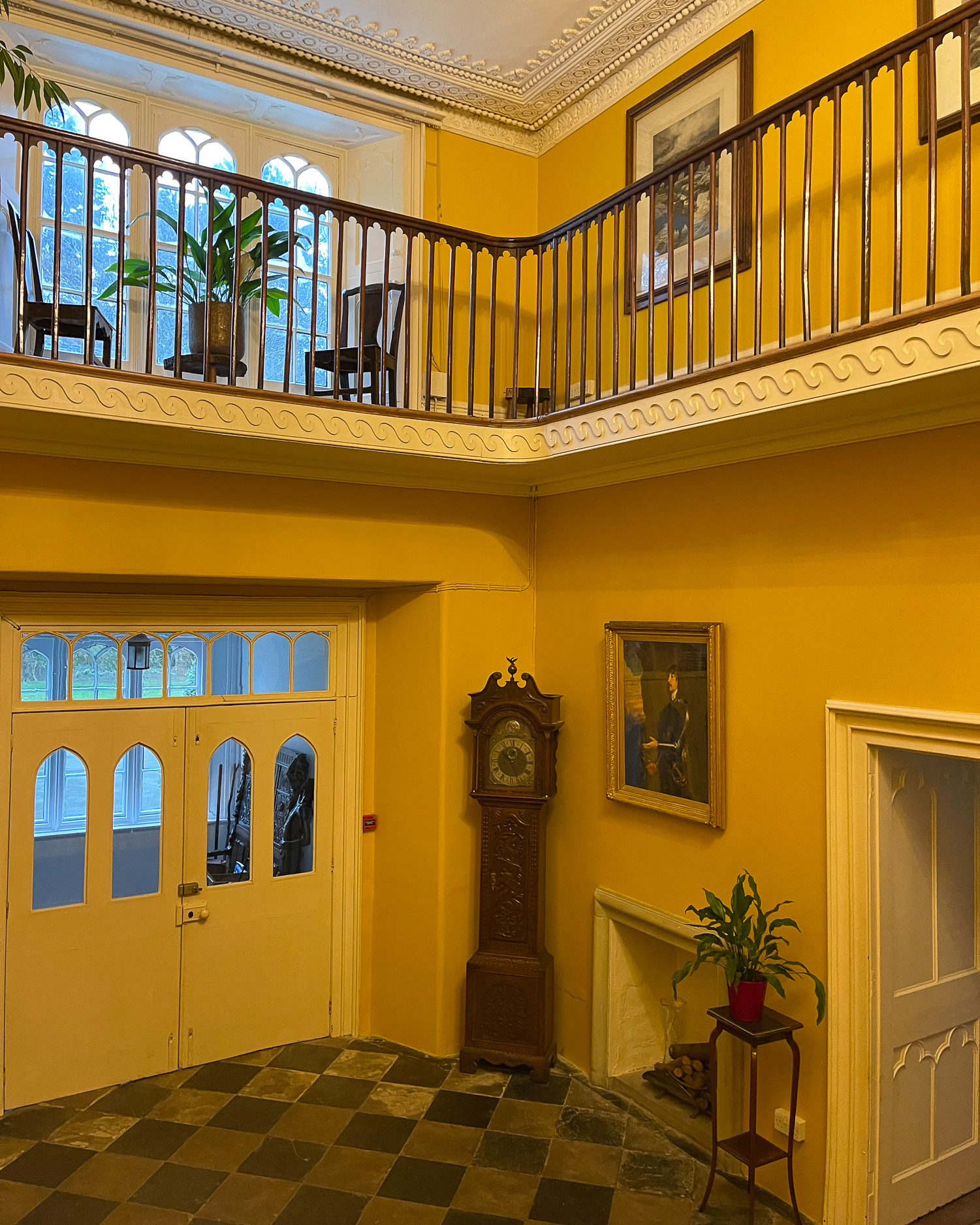
Milntown Estate has a lovely conservatory cafe with a sheltered outdoor terrace, serving breakfast, lunch and afternoon teas all year round.
Isle of Man – North Coast
Having explored the Isle of Man’s east coast, we’ll move further north to the less developed and unspoiled shores of the north coast.
16. Point of Ayre & Ayres National Nature Reserve
The Point of Ayres lighthouse marks the most northerly point of the Isle of Man, from which on a clear day, you can see the coast of Scotland. While the red striped lighthouse and surrounding buildings are private property, you can access the beach by a path to a second smaller lighthouse. The stone beach is well known as a place to spot birds and seals playing on the beach, although you should take care not to get too close for fear of startling them.
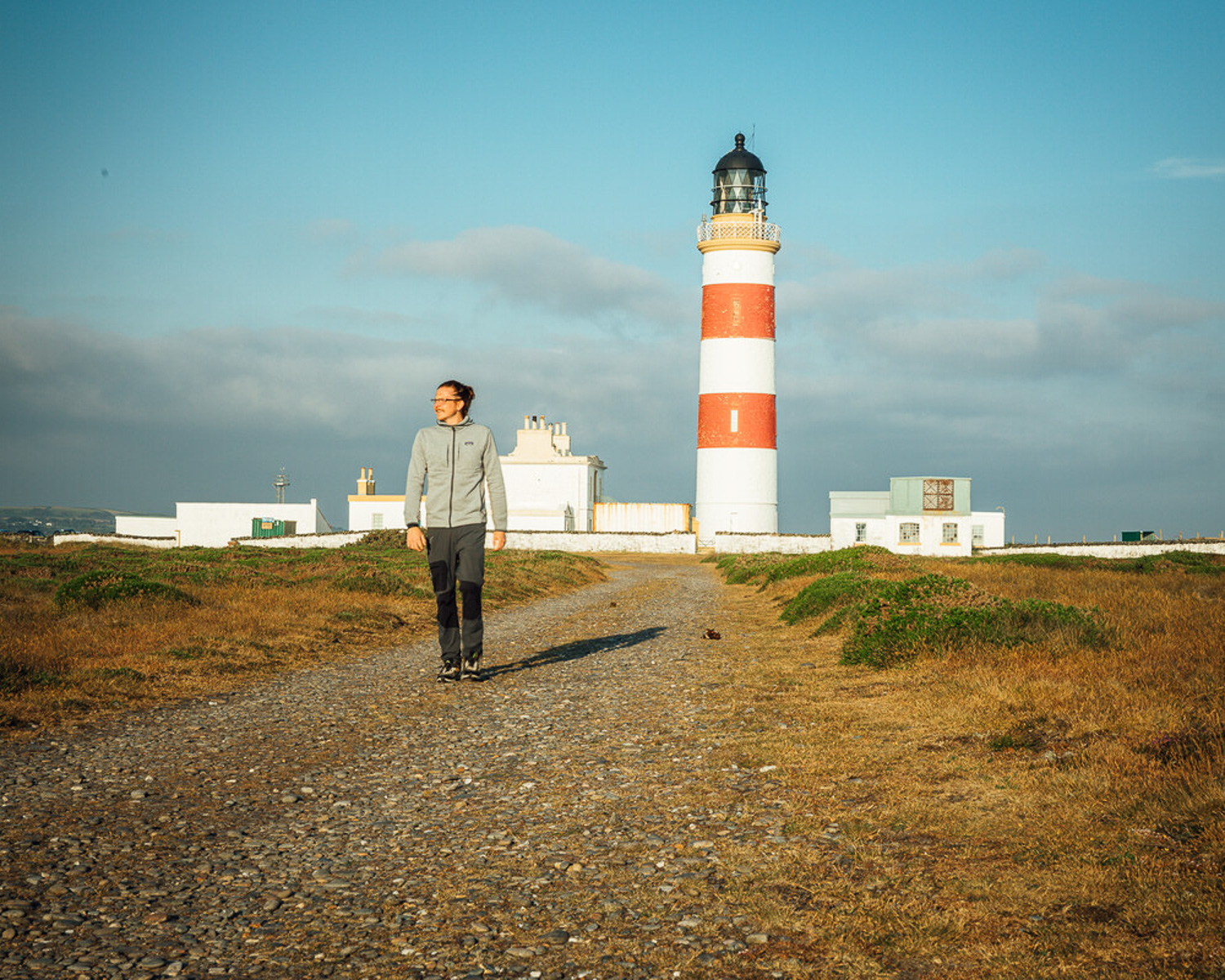
Not far along the coast is the Ayres Nature Discovery Centre, which is a good place to find out more about the flora and fauna of this wild area of sand dunes. The shingle beach is backed by marram grass covered dunes, with a wooden viewing platform from which to spot birds and the occasional seal.
There are three marked trails that lead from the visitor centre or you can just take a walk on the beach. As one of the least populated parts of the island, this is one of the 26 designated star-gazing sites on the Isle of Man – you can find information about all the sites on the Visit Isle of Man website.
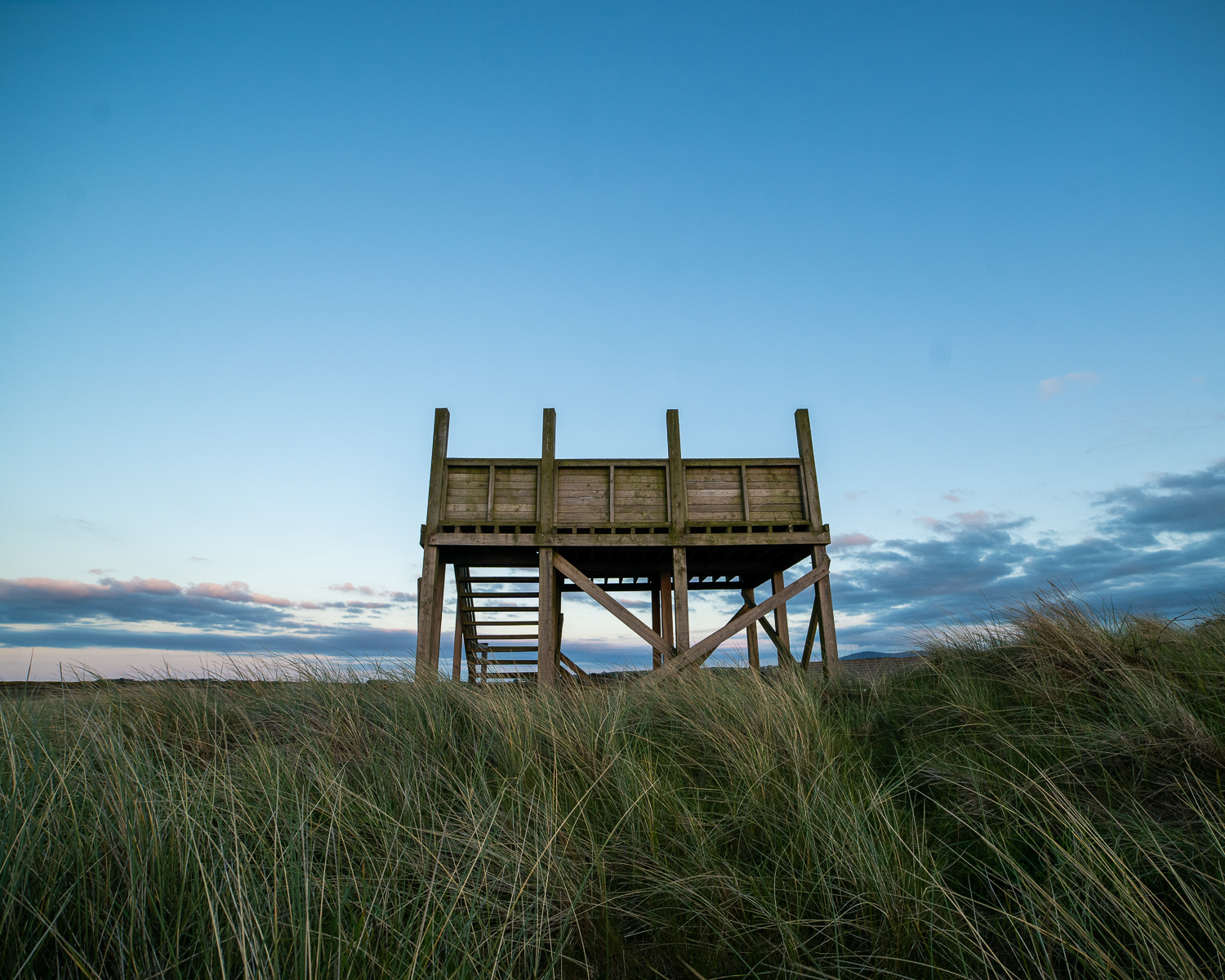
17. Curragh’s wildlife park and the wallabies
A family friendly day out is available at Curragh’s wildlife park, located between Point of Ayres and Peel. While I’m not a big fan of captive animal experiences, most of the animals such as monkeys, lemurs and tapirs are small and kept among ponds and nature trails. There’s a playbarn, miniature steam train and outdoor play areas too.
What interested me more about the area around Curragh, is that this is the area on the Isle of Man where you can sometimes spot wallabies roaming wild. They escaped from the wildlife park in the 1960s, but have now made their own community of over 500 animals.
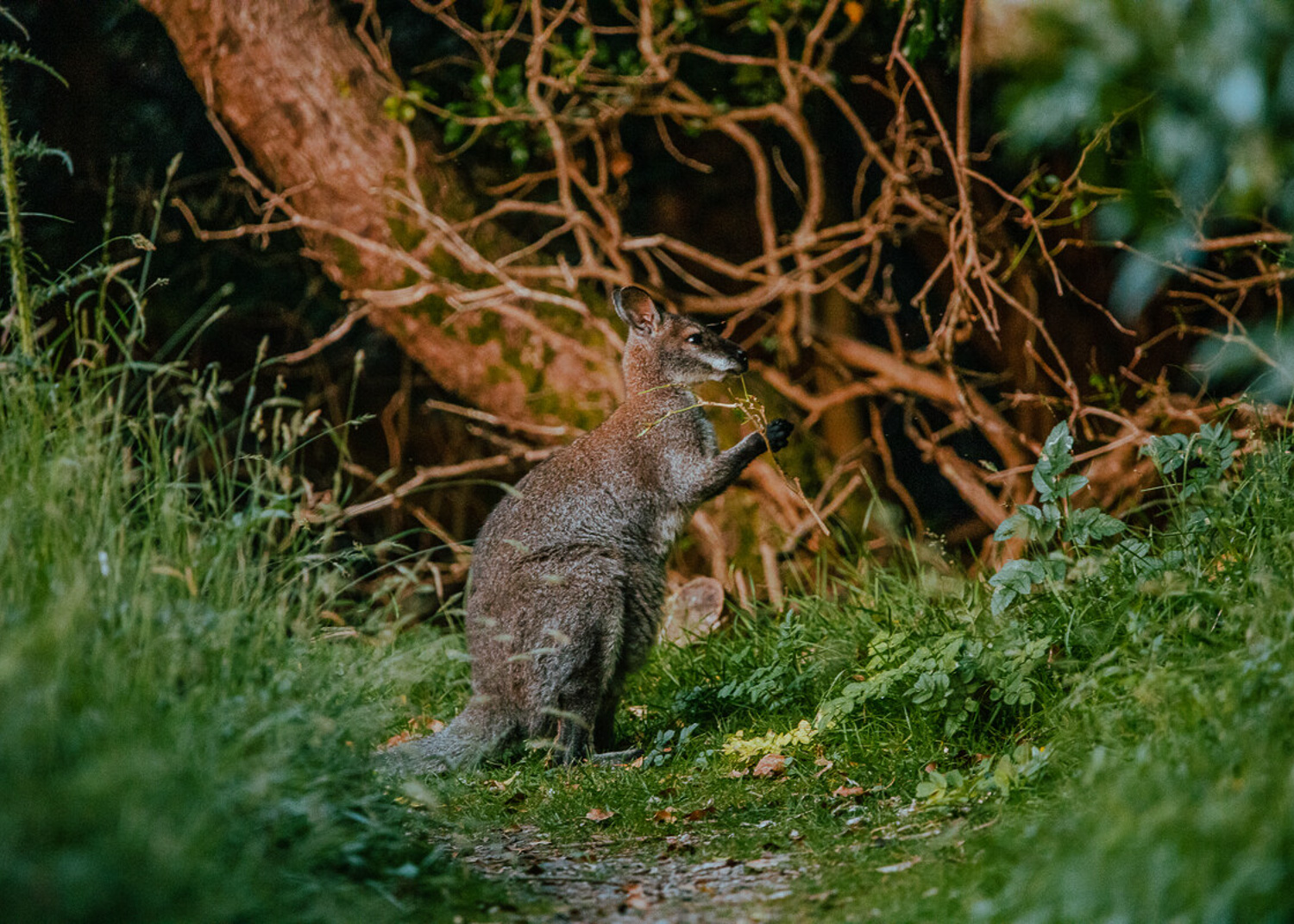
As the population of this non-native species is expanding, there is some discussion over how they should be managed. If you’d like to try and spot them yourself, you can take a walk in the Ballaugh Curraghs wetlands (best to wear wellies) on one of the trails shown on the Where’s Wally the Wallaby? map produced by Visit Isle of Man.
18. Isle of Man Motor Museum
The Isle of Man Motor museum is located at Jurby and houses the privately owned Cunningham collection assembled over 30 years by father and son, Denis and Darren Cunningham. Over 500 vehicles are on display in a purpose designed building.
Part of the museum is devoted to the famous TT race, with around 400 bikes including the collection of former rider Bob McIntyre. You’ll see rider helmets, clothing and memorabilia as well as motorbikes ridden by many of the TT winners.
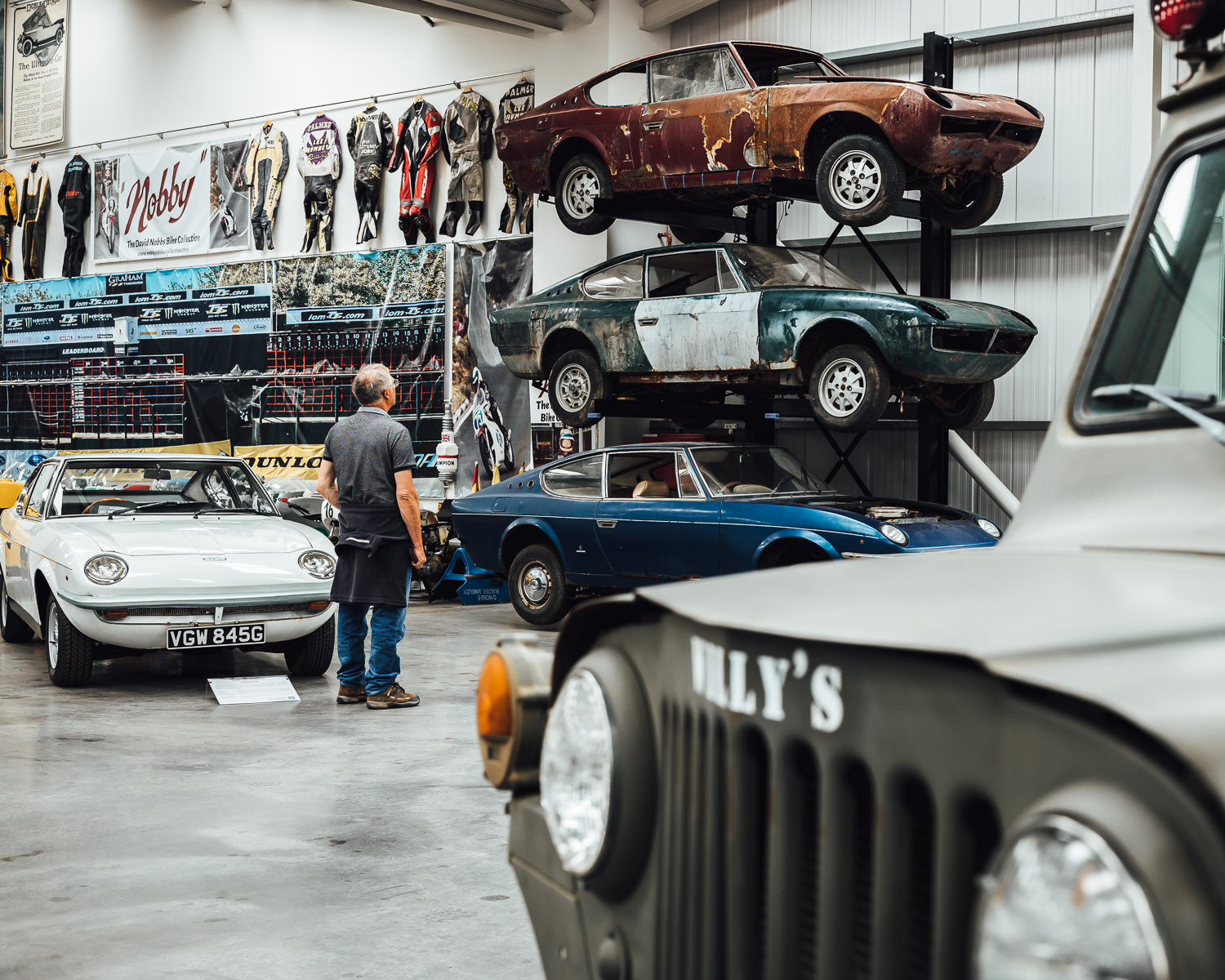
There’s also a collection of classic cars, many on loan from private owners. The museum is open from end March to end September – daily except Wednesday.
Nearby is the Jurby Transport Museum, housed in a former RAF Bellman Aircraft Hangar. The museum houses a collection of buses and larger transport vehicles, open from April to September with free admission.
Isle of Man – West Coast
Next we are moving down the west coast of the Isle of Man, where one of the most scenic holiday spots is the small town of Peel, known as “Sunset City” for its glowing sunsets.
19. Peel – town and beach
Peel features a picturesque harbour with views of the castle, pretty beach and interesting shops selling antiques and collectables. Combined with the good range of restaurants and things to do, Peel makes a relaxing day out and excellent alternative to Douglas, as a base for your holiday on the Isle of Man.
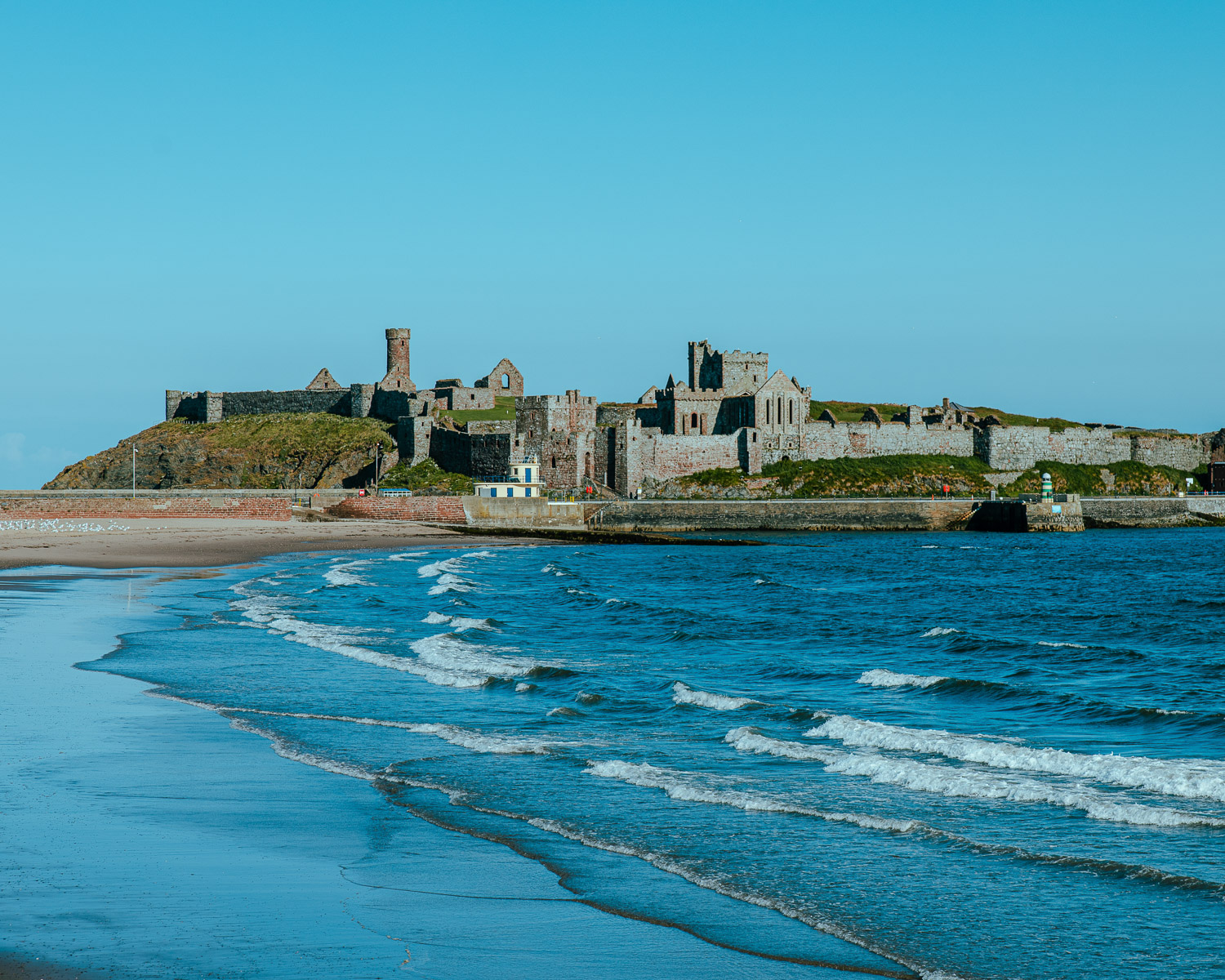
A walk up through the town brings you to the Isle of Man’s only cathedral, although in size it is more like a normal parish church. Within the Cathedral gardens, you can trace the story of Christianity that came to Mann from Ireland.
There are a couple of golden sandy beaches next to each other, Fenella Beach by the causeway to the castle, and the town’s larger Peel beach, with cafes and ice cream parlour nearby.
20. Peel Castle – on St Patrick’s Isle
Located on St Patrick’s Isle, Peel Castle is joined to the west coast town of Peel by a narrow spit of land, making it easy to defend. The castle was constructed by the Vikings in the 11th century and has been used over the centuries as a royal residence and seat of government.
The island is believed to have housed a monastery from the 8th century, with St Patrick’s church and round tower dating back to the 10th century. The round tower was originally used by monks as a place of refuge from Viking raiders, and later as a lookout tower for the castle.
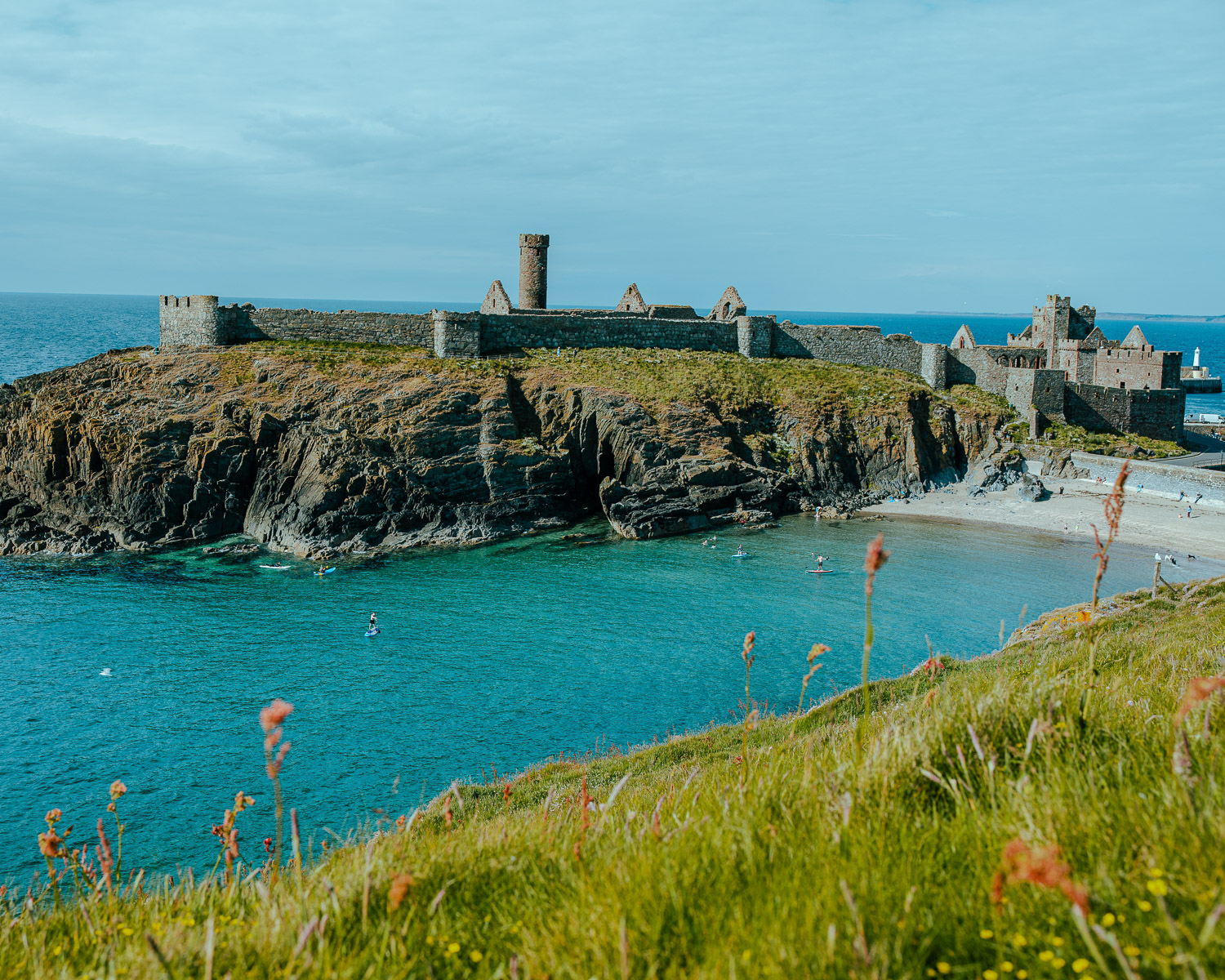
St Patrick’s Island was later fortified by the Viking King of Mann, Magnus Barelegs in the 11th century. Peel castle is run by Manx National Heritage and audio guides are available to help you explore the 10th century church, 16th century Great Garrison Hall and Gatehouse tower.
There’s a story about Moddey Dhoo, the ghostly black dog that is said to haunt the castle and wander around the gatehouse, so that soldiers would fear to pass the guardroom on their own.
The castle is open daily from end March to beginning November. However, even when it’s not open, you can walk around the perimeter and look out to sea, where you may spot seals and basking sharks.
21. House of Manannan – Celtic and Viking history
One unmissable museum in Peel is the House of Manannan, named after mythical Celtic sea god. The museum charts the social history of the island from Viking history up to the early 20th century, sharing tales of the old ways.
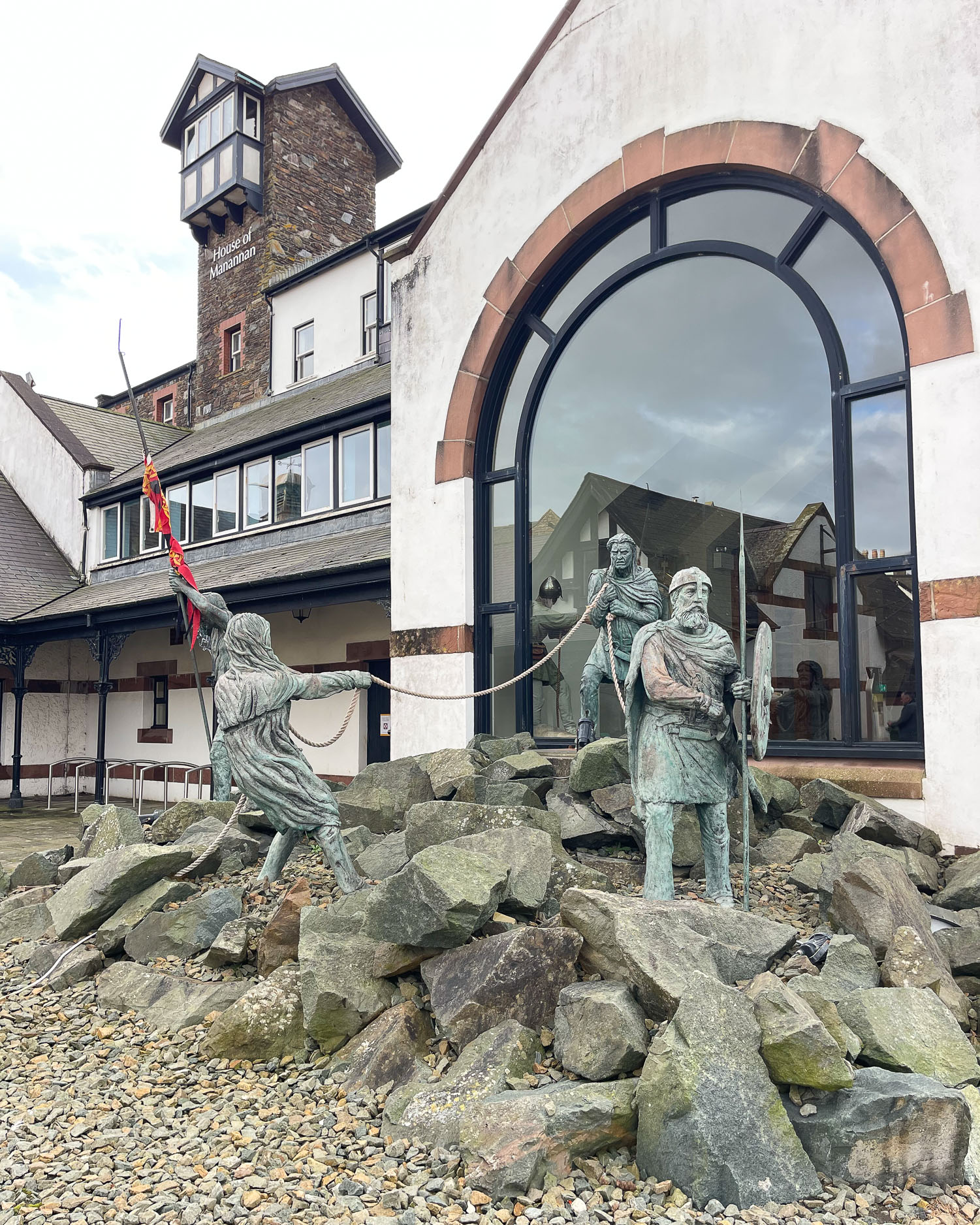
We enjoyed the reconstructions of daily life on the Isle of Man, from the family sleeping in the Celtic roundhouse, to the fishermen discussing their catch, to the kipper yard, where the herring were being gutted and salted.
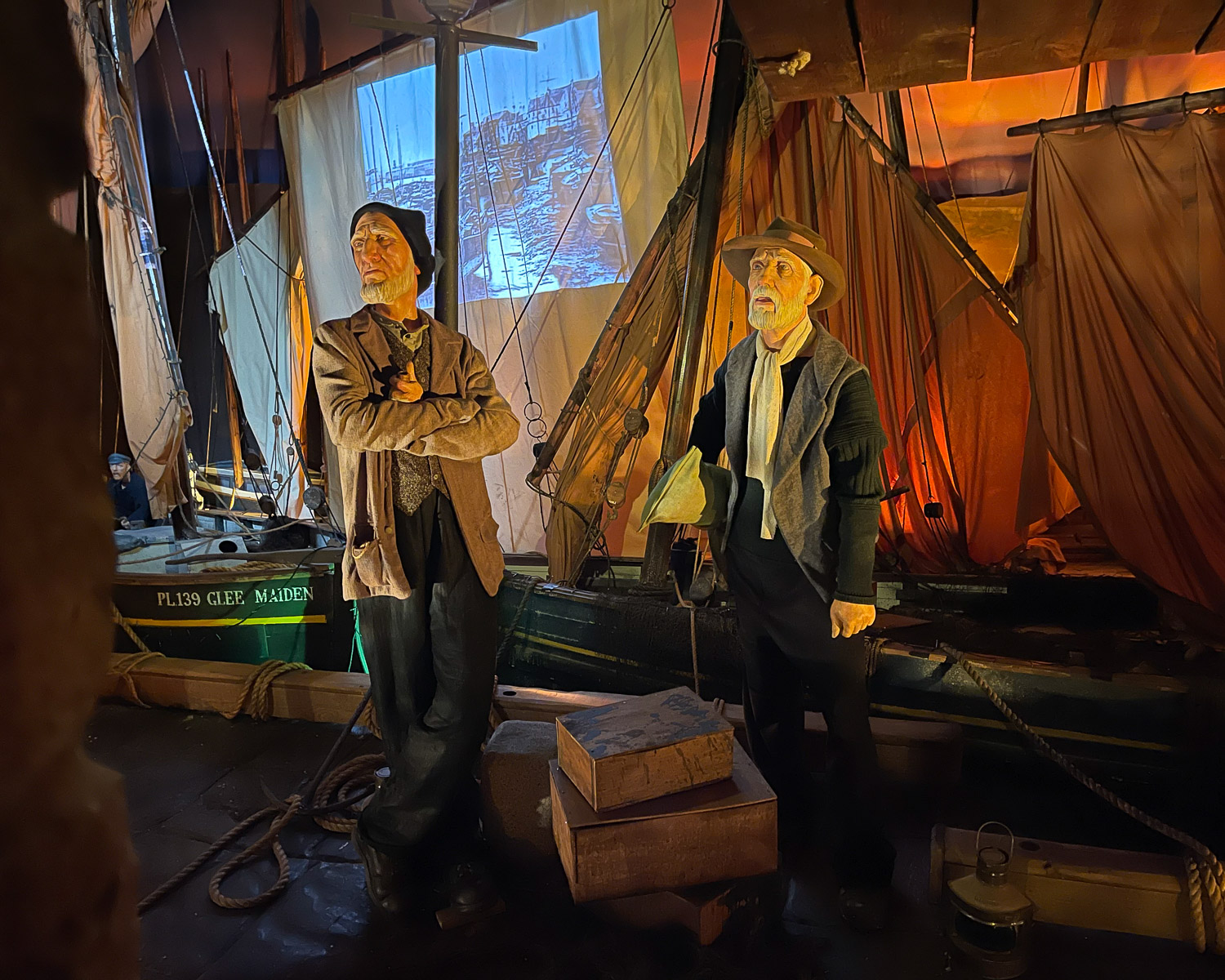
One of the fascinating things to see here is Odin’s Raven, a replica Viking longship that sailed from Trondheim to Peel in 1979, to commemorate the early Viking voyages.
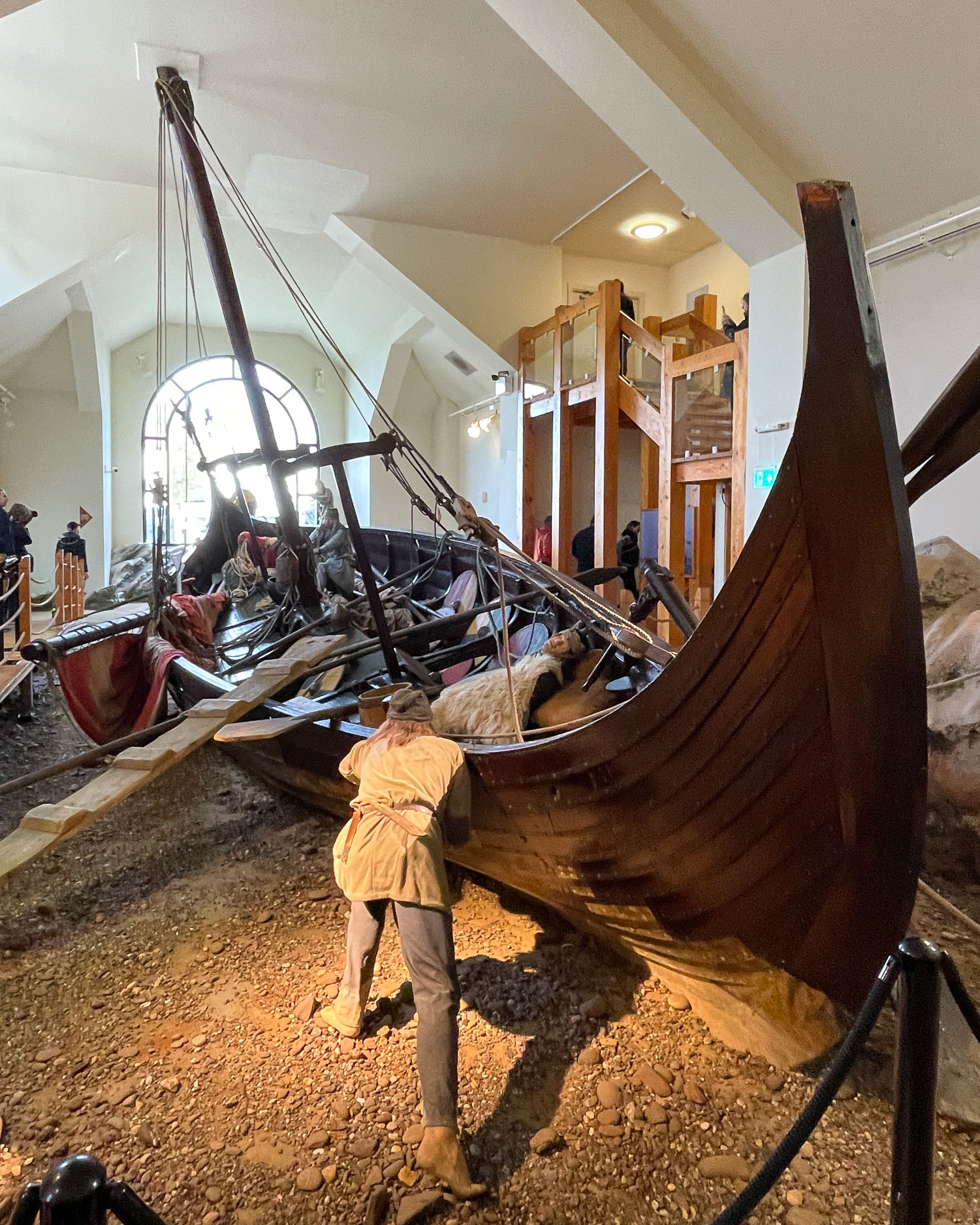
Peel – where to eat
There are lots of options for restaurants in Peel, and we recommend the following:
Creek Inn – a cosy pub by the harbour which is a great place to try the island’s national dish of Queenies and Bacon.
The Boatyard – overlooking Peel harbour, this restaurant features nautical decor and menu featuring seafood and local produce.
The Fish Bar – this is a mobile stand on the beach promenade selling fish dishes to take away, an inexpensive way to try locally caught seafood.
Davison’s Ice Cream Parlour – a beachside favourite, this ice cream parlour offers ice cream flavours made in the Isle of Man and chocolates.
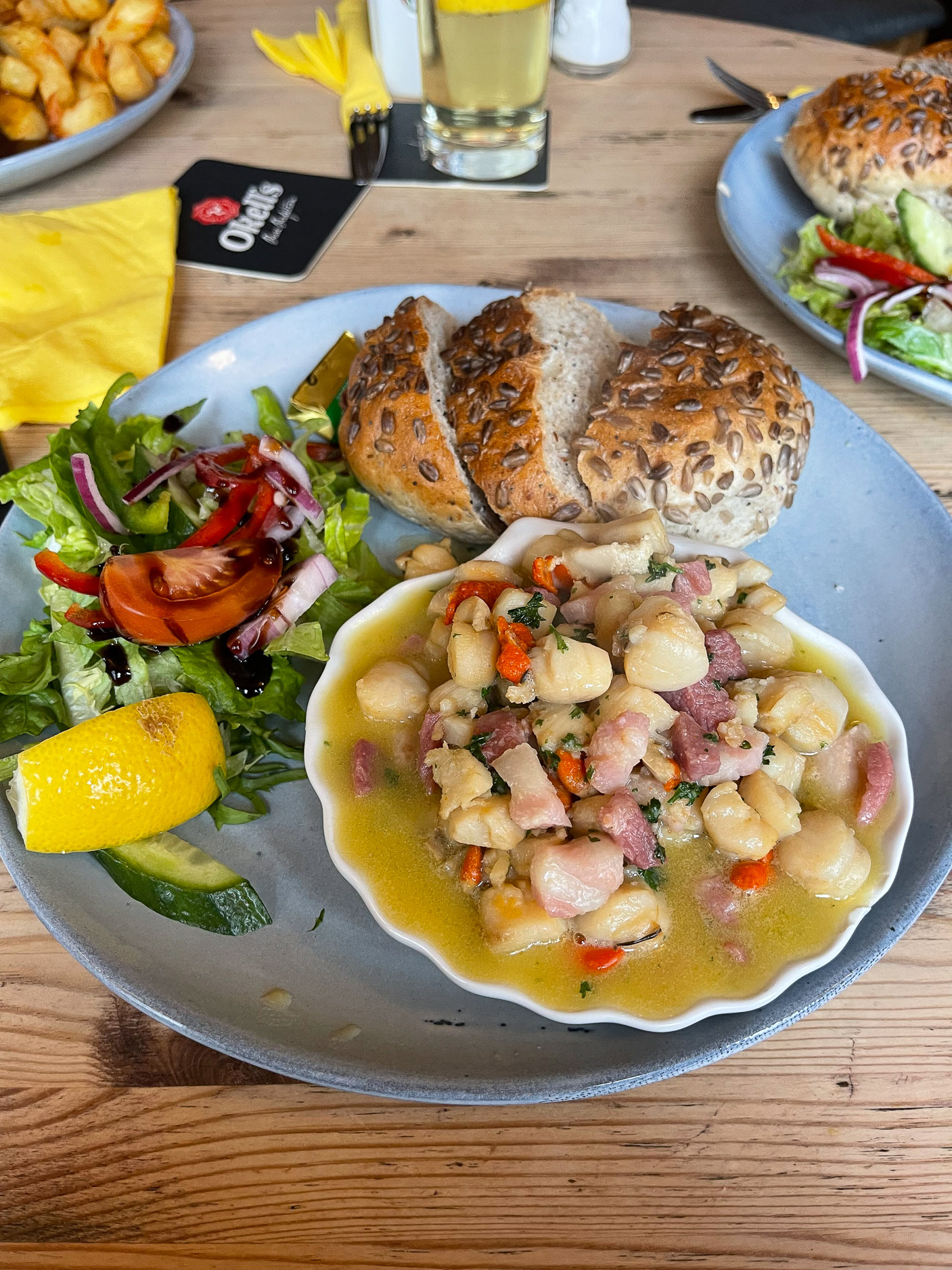
Peel – where to stay
Knockaloe Beg Farm – Farmhouse B&B just outside Peel. They also offer self catering holiday cottages, a bunkhouse and glamping cabins as well as seasonal events and farm to fork supper clubs.
Albany Guesthouse – Comfortable B&B in Peel with traditional style and a warm welcome from Nigel and Nikki, who also run a tour company offering island and ancestry tours.
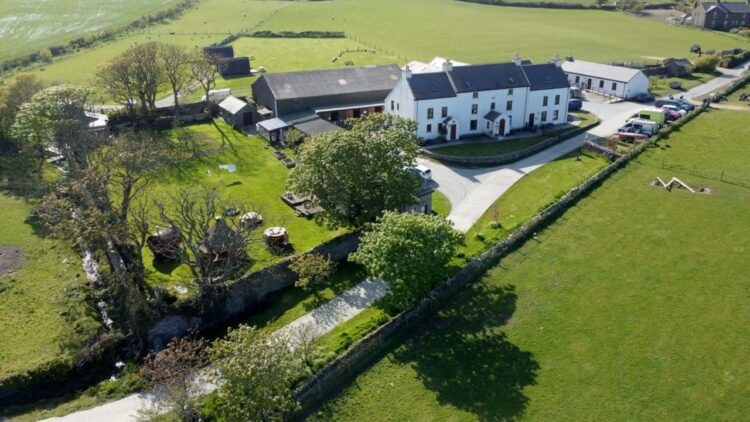
Knockaloe Beg Farm Bed & Breakfast near Peel, with cottages and glamping
22. St Johns – shopping at Tynwald Mills
Just inland from Peel is St John’s, a small town that’s known for being the ancient site of the island’s Tynwald parliament, as well as an upscale shopping centre. From the road you may spot the manmade 4 tiered hillock of Tynwald Hill.
It is thought to have been built in the 13th century as an outdoor meeting place for the Viking settlers. The hill comes alive each year on 5th July, when it hosts a meeting of the current Manx parliament, making this the oldest continuous parliament in the world.
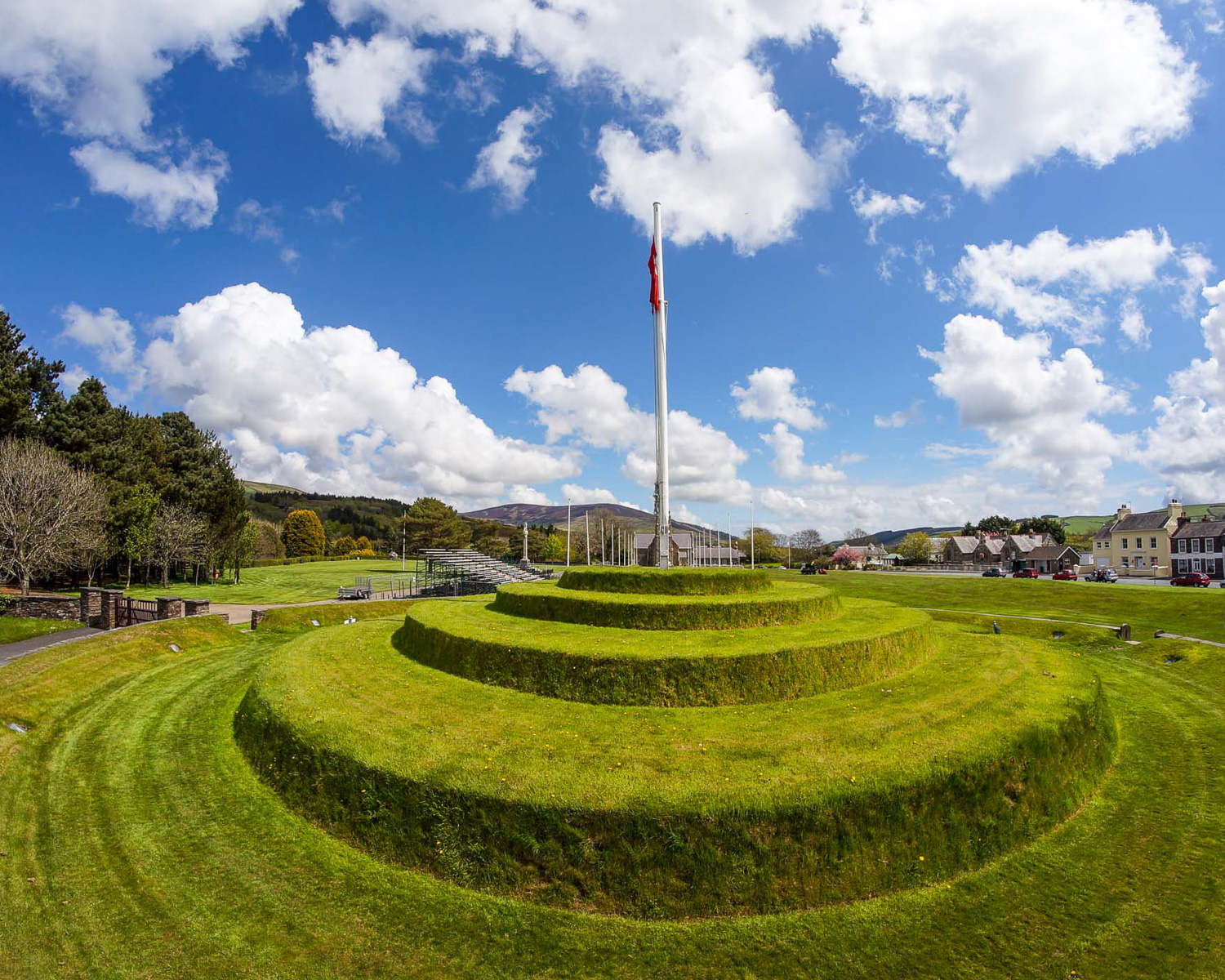
Close by is Tynwald Mills, where the buildings of an old woollen mill have been made into the island’s biggest department store. If you are into shopping, this is the place to find all the international brands of clothing and homeware.
In a shop on the edge of Tynwald Mills, is my favourite store Element.Isle jewellery. Founded by jeweller Claire Pearse and husband Scott, the collections are inspired by the natural beauty of the Isle of Man, with the coastal waters, fairy folklore, island flowers and wildlife all featured in the designs.
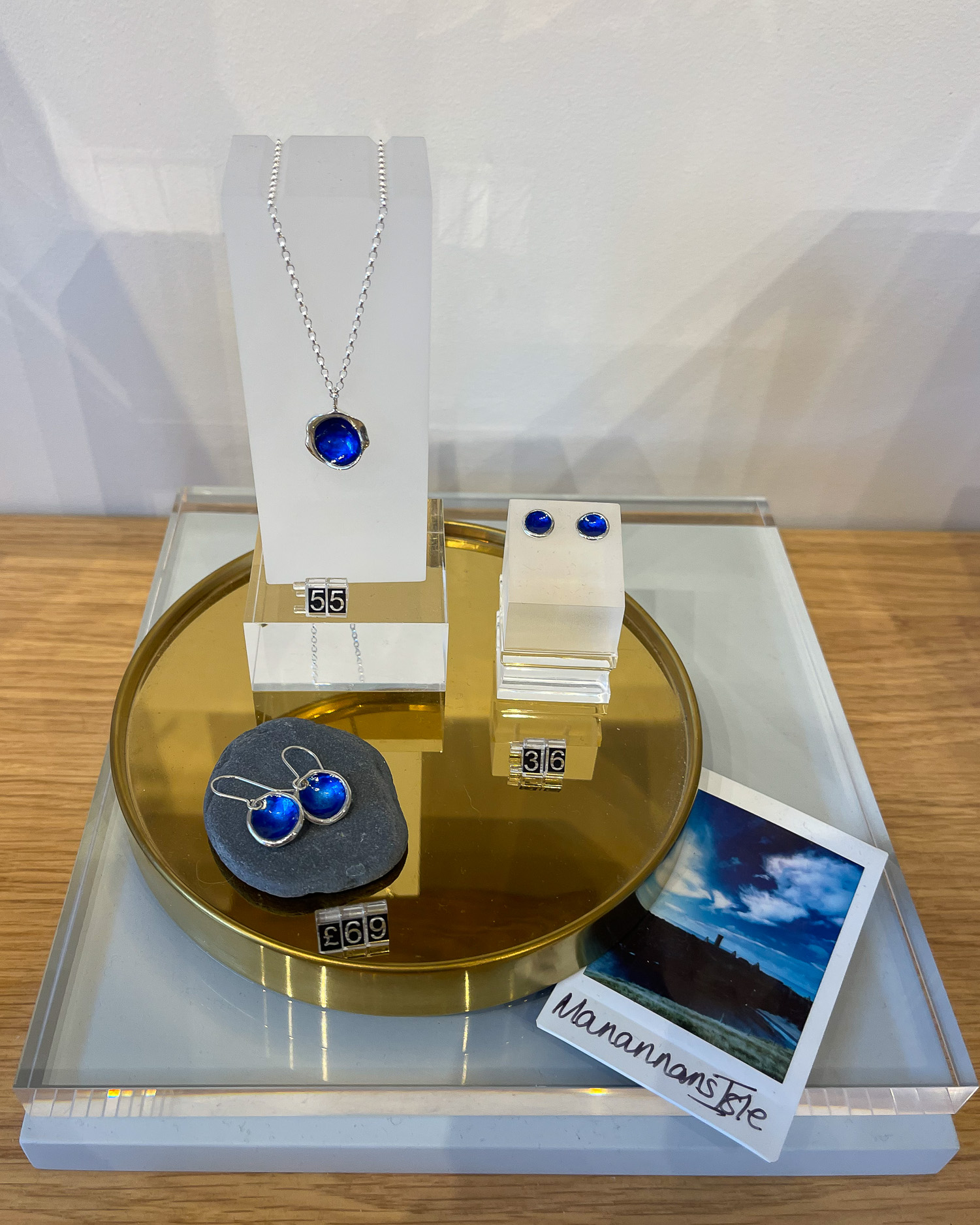
The emphasis is on sustainability, with carefully sourced stones, recycled gold and silver being used. I loved the replica of the beautiful brooch that was made and presented to Queen Elizabeth II on the occasion of her Platinum Jubilee, featuring semi precious coloured stones that represent the main towns of Isle of Man.
23. Knockaloe Internment camp near Peel
One lesser known aspect of the Isle of Man’s history is that it hosted large internment camps during both World War 1 and World War 2. During both wars, the British government came under pressure to intern men of German, Austrian and Turkish heritage, who the public feared might act as spies.
A good place to learn more about this period of the island’s history is at Knockaloe Internment Camp, just outside Peel. One of the stone buildings has been converted into a museum, to tell the story of the 23,000 men who lived here during WW1, in prison camps that spread across a large area of what is now green fields.
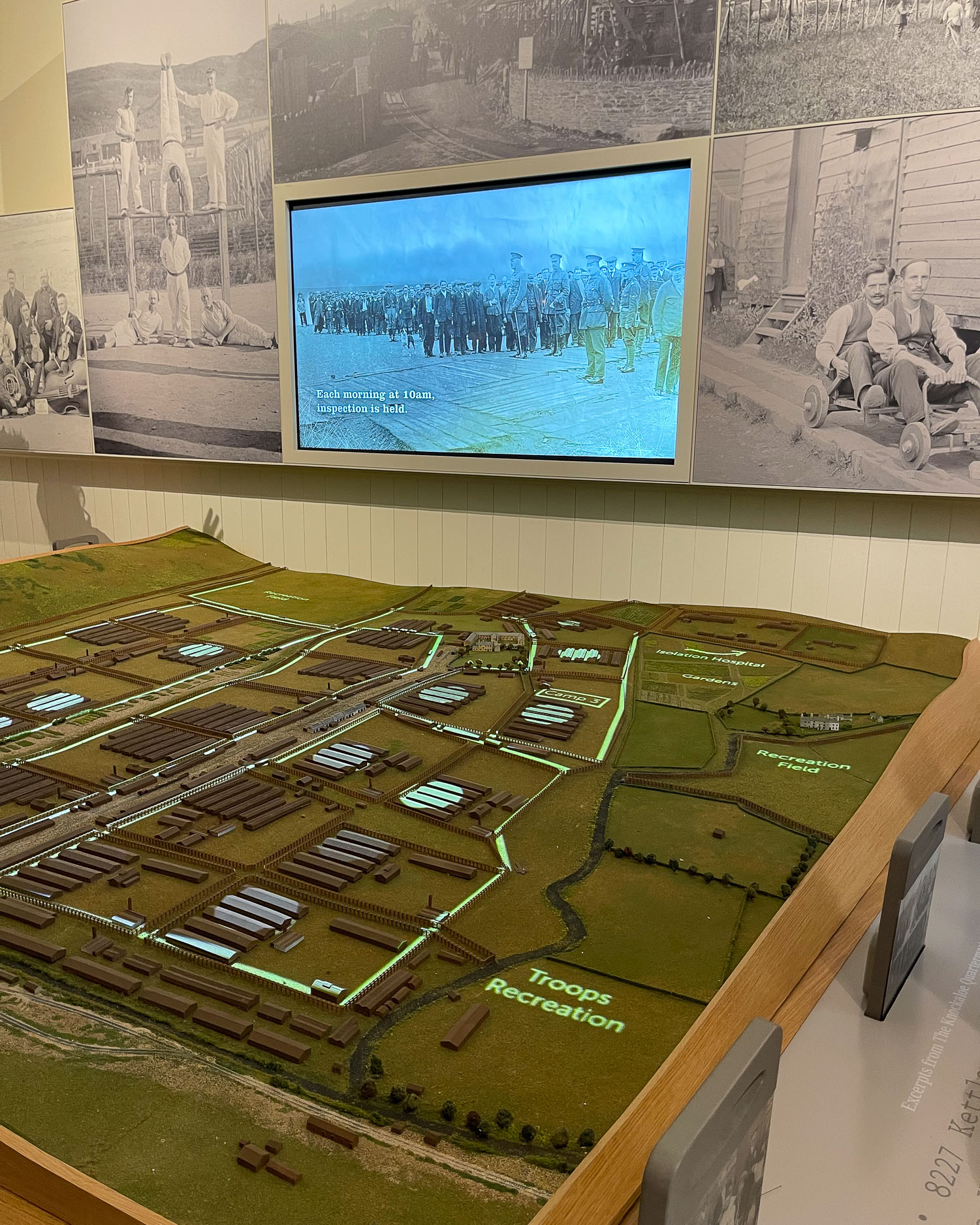
The museum sheds a light on living conditions in the camp, how the internees kept busy and how they organised themselves for cooking meals and daily activities. One of the internees, Josef Pilates developed his regime of exercises initially to help patients in the hospital.
Others were skilled craftsmen and used their trade to make furniture and other goods for sale. The lucrative contracts to supply food and supplies for the camps helped keep the local economy of the Isle of Man afloat during the war. If one of your family was interned at Knockaloe, there’s also a database collecting stories from WW1 internees and their families.
24. Niarbyl Bay – a scenic marine reserve
South west of Peel is Niarbyl Bay, a well known coastal beauty spot and a protected marine reserve where you can spot sea birds, seals and basking sharks, especially in summer. The bay is geologically significant, since it has rocks from two separate continents, with some geology from what is now North America, while others are from what is now Africa.
Walking along the coastal path to the beach, you’ll reach the photogenic white thatched cottage that was used as a location in the film “Waking Ned”, set in Ireland but filmed in the Isle of Man.
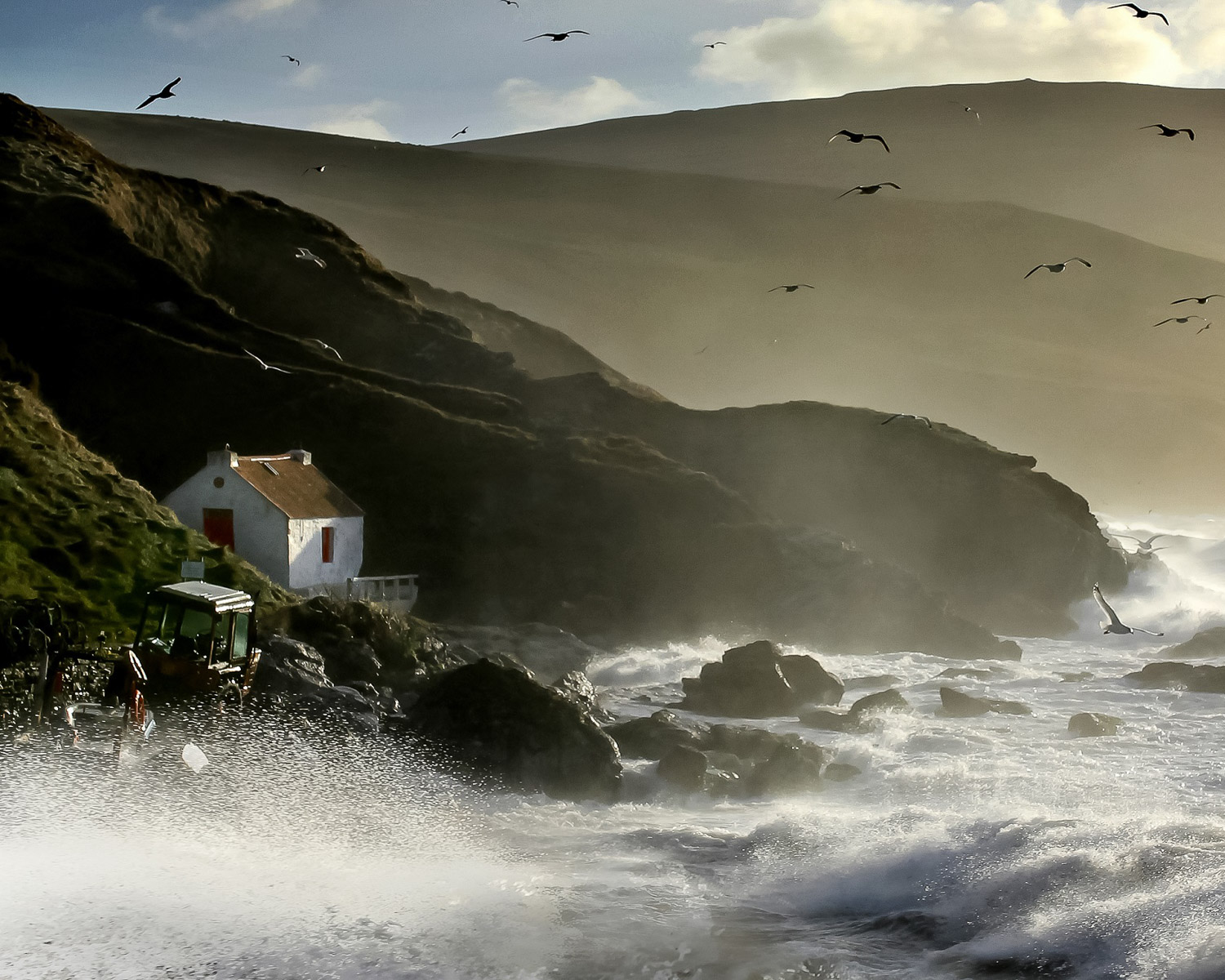
Isle of Man – South Coast
The Isle of Man’s south coast has some of the island’s best beaches at Port Erin and Port St Mary, as well as the old capital of Castletown.
25. Port Erin – beach and watersports
Port Erin can be easily reached from Douglas or Castletown on the Isle of Man Steam Railway. It is best known for the sandy beach, which is very popular in summer for activities such as paddleboarding.
Milner’s tower – from Port Erin beach you can look north up to Milner’s Tower, perched on Bradda Head. It was built in 1871 in memory of local philanthropist William Milner, and you can walk up there via the coastal path for views over the bay.
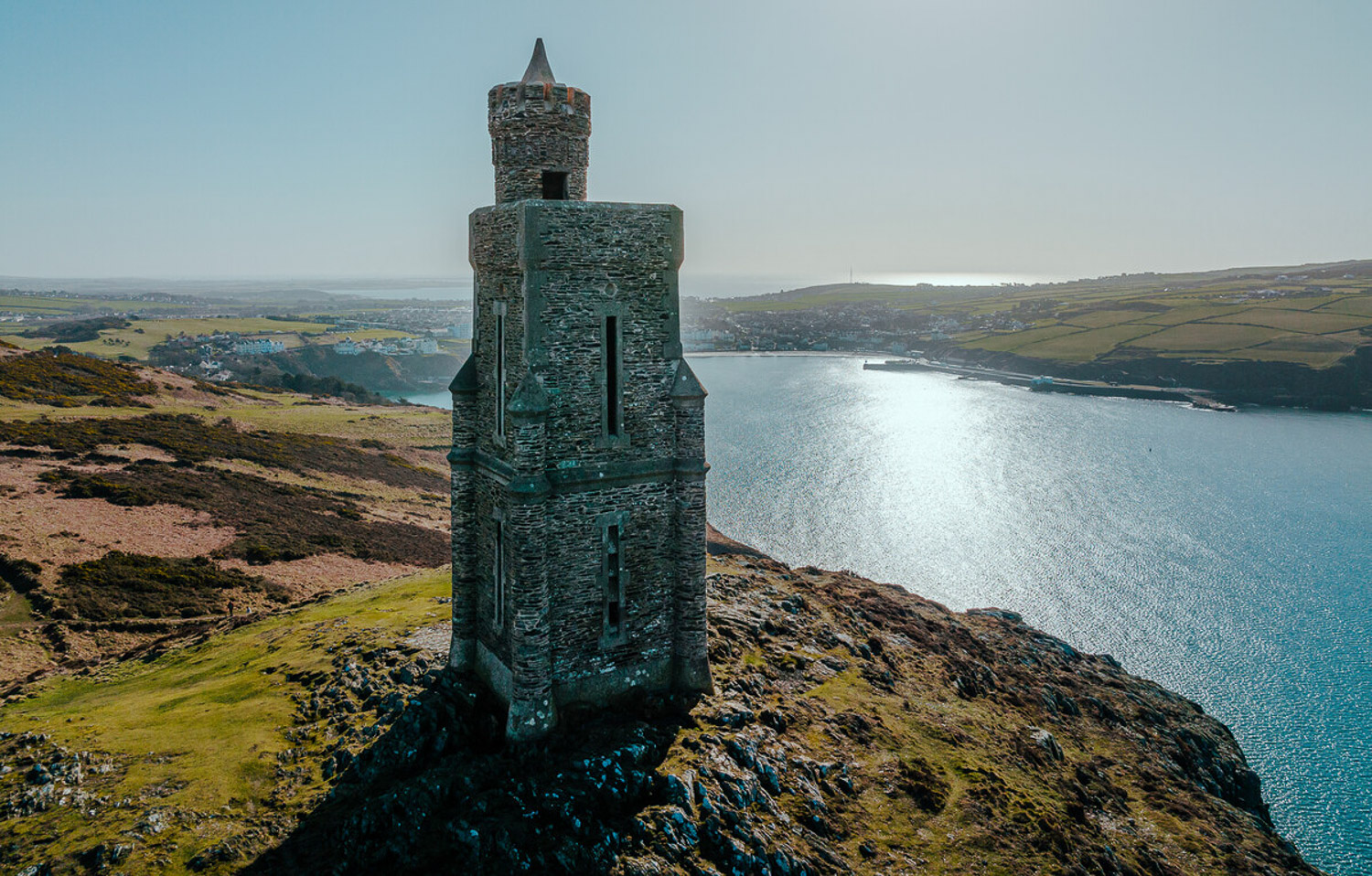
Port Erin Railway Museum – By the steam railway station, you’ll find the museum, which presents the history of the Isle of Man steam railway, inspiration for the childrens’ book Thomas the tank engine.
Watersports on Port Erin beach – The 7th wave sailing school offers kayaks and paddle boards for hire, and Port Erin Paddleboards also has a kiosk by the beach for paddle board rental.
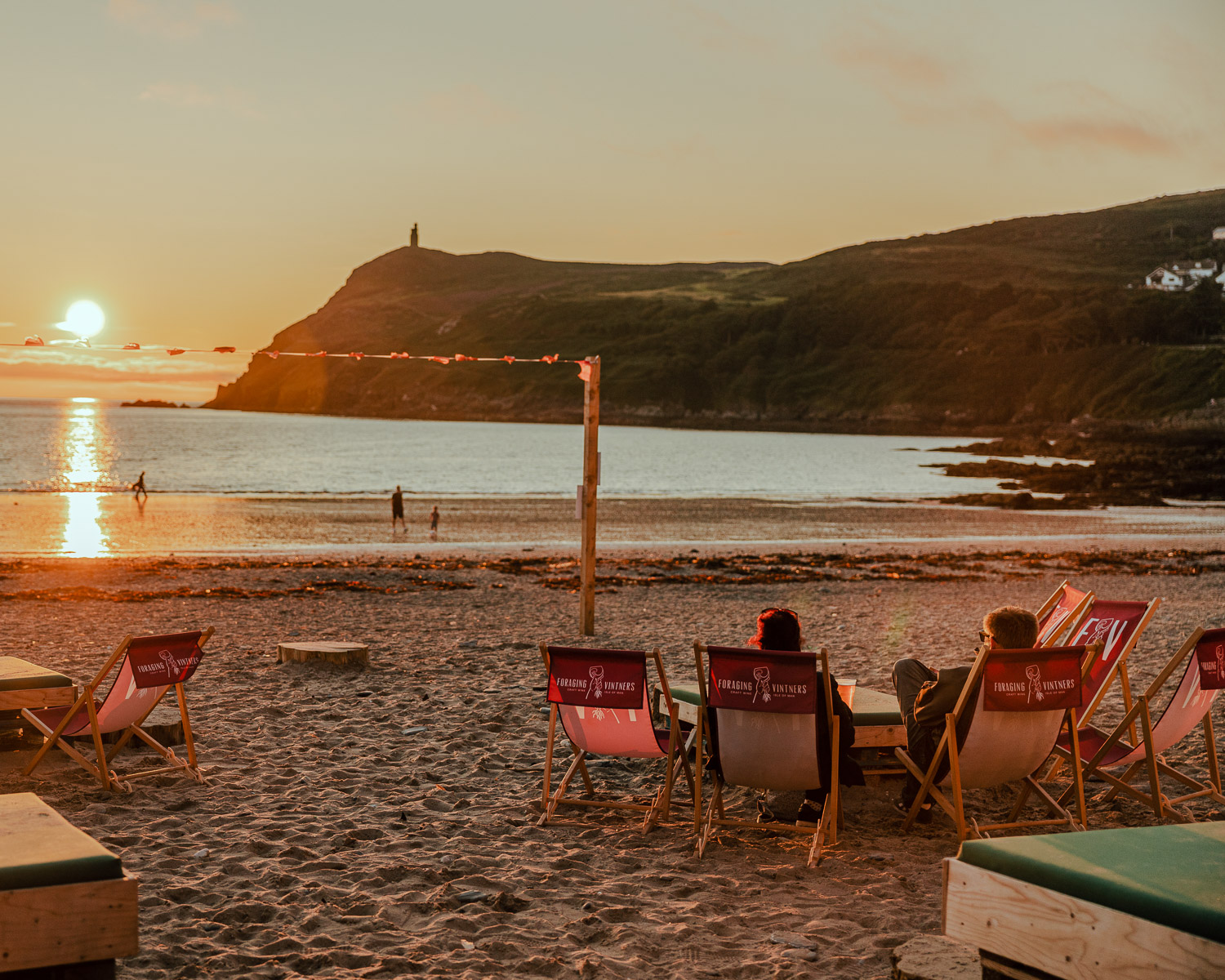
Foraging Vintners – On Port Erin beach, Foraging Vintners has a seasonal beach cafe, serving their non-grape sparkling wines made on the Isle of Man.
Where to eat at Port Erin
We recommend checking out Versa, a restaurant with a big focus on ingredients from the Isle of Man, some of them foraged from its beaches and countryside. During the day lighter dishes are on offer, while in the evening there’s a multi course tasting menu. The dishes change daily with the seasons and what’s available, to ensure sustainability and zero waste. The chef-owner Pippa Lovell also offers foraging courses.
26. Port St Mary – Chapel Beach
This holiday and fishing village in the south of the island doesn’t have any major heritage sites but is best known for the golden sand of Chapel Beach, a sheltered spot to swim in summer.
A promenade runs behind the beach and continues around the point to Gansey Bay, where the beach is more pebbly, but it’s great for rock-pooling and water sports. We recommend The Shore Hotel in Gansey Bay as a good pub for a bite to eat (it also has rooms).
Following Chapel Beach westwards brings you to the Port St Mary harbour, where boat trips run in summer to see the Calf of Man, spotting for dolphins, whales, seals and marine birds on the way. You can most easily reach Port St Mary from Douglas, Port Erin or Castletown on the Isle of Man Steam Railway and it is also well connected by bus.
27. Castletown – historic seaside capital
This pretty seaside port was the ancient capital of the Isle of Man until it switched to Douglas in 1869 when tourism and commerce was becoming more important. The town is easily reached from Douglas on the Isle of Man Steam Railway. Castle Rushen is the most important heritage site, which I’ve covered below, but there are a few other places worth seeing.
Castletown Harbour – still a thriving fishing port with old fishermens cottages around it, you can walk onto the breakwater with its lighthouse in good weather. There’s also a beach but it’s stony and not one of the prettiest on the Isle of Man.
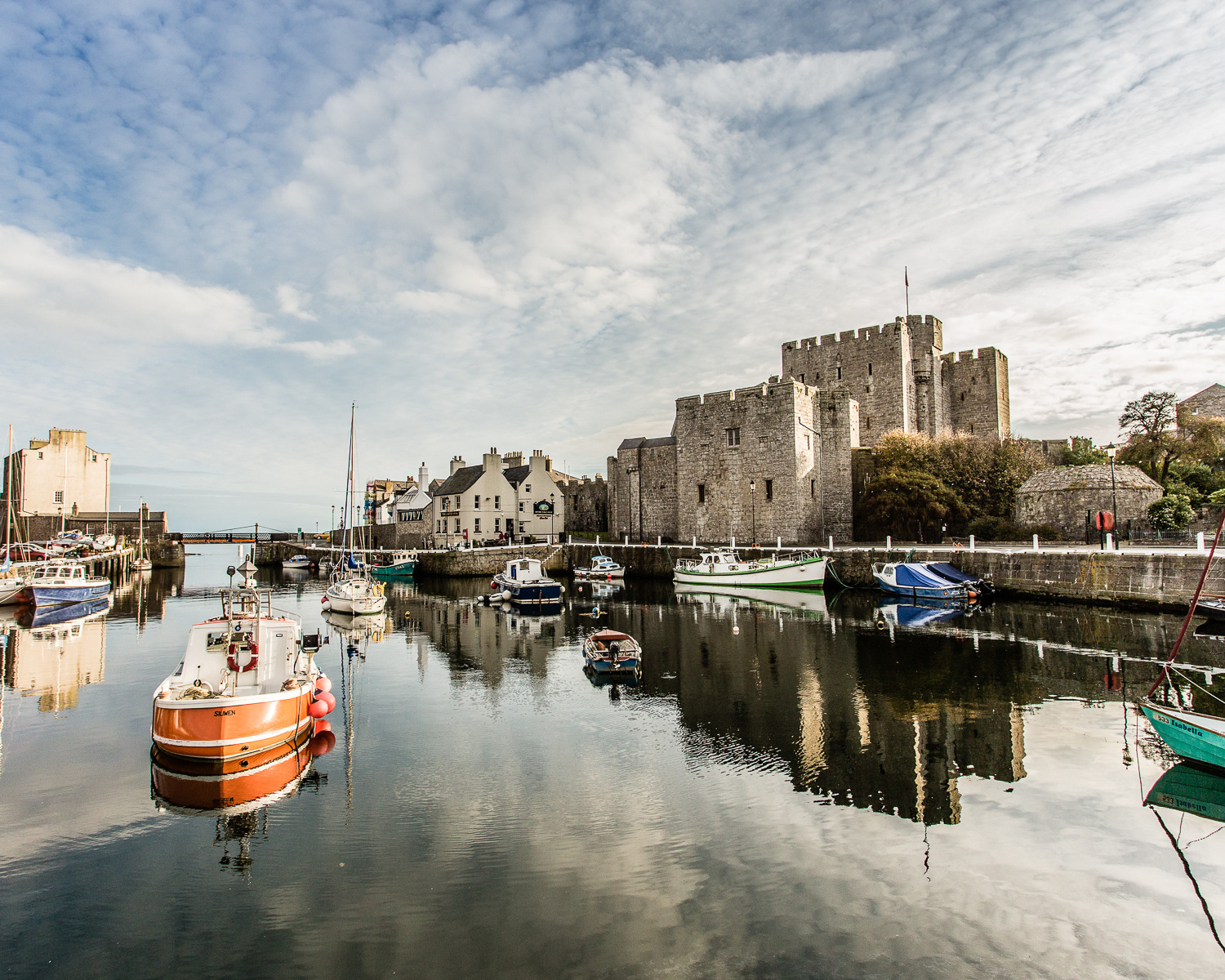
The Old House of Keys – the building in Castletown that served as home to the Manx parliament from 1821 to 1874. You’ll see the debating chamber with Mr Speaker bringing the proceedings to life.
Nautical Museum – discover the story of “Peggy”, the earliest surviving schooner built by Captain George Quayle, which is being preserved in the museum.
Old Grammar School – built in 1200 AD it’s the oldest church on the Isle of Man, but the building was later used as a school for boys. Your visit will take you inside the Victorian schoolroom.
The Old House of Keys, Nautical Museum and Old Grammar School are run by the Manx National Heritage and can be visited on a pre-booked guided tour that takes place at 10am on Saturdays and Wednesdays from March to November.
28. Castle Rushen – a forbidding medieval castle
Located within Castletown is Castle Rushen ( Balley Cashtal ), a well preserved Medieval castle, with a foreboding air that overlooks the harbour. Built for a Norse king around 1200, the castle was developed over later centuries and became the royal seat, at a time when Castletown was the capital of the island. The castle later housed the Isle of Man’s main prison until the 1890s, although the conditions were very cold and damp.
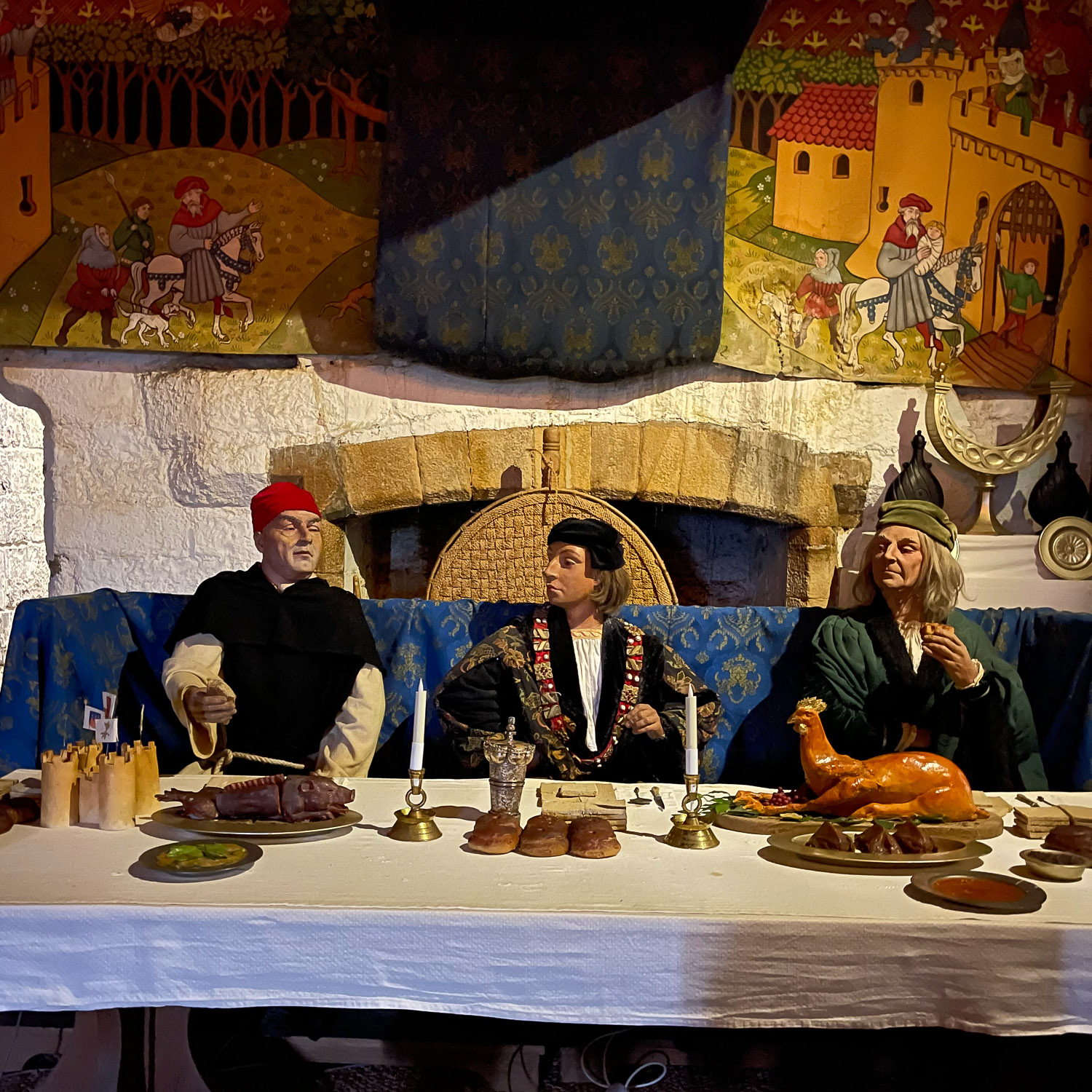
On entering under the portcullis, through the main gate, we climbed the stone staircase of the castle to meet some of the past residents in the different rooms of the upper floors. With rush matting on the floor, colourful wall hangings and plenty of servants, we could see how the castle might have been made much more attractive as a place to live, for its royal inhabitants!
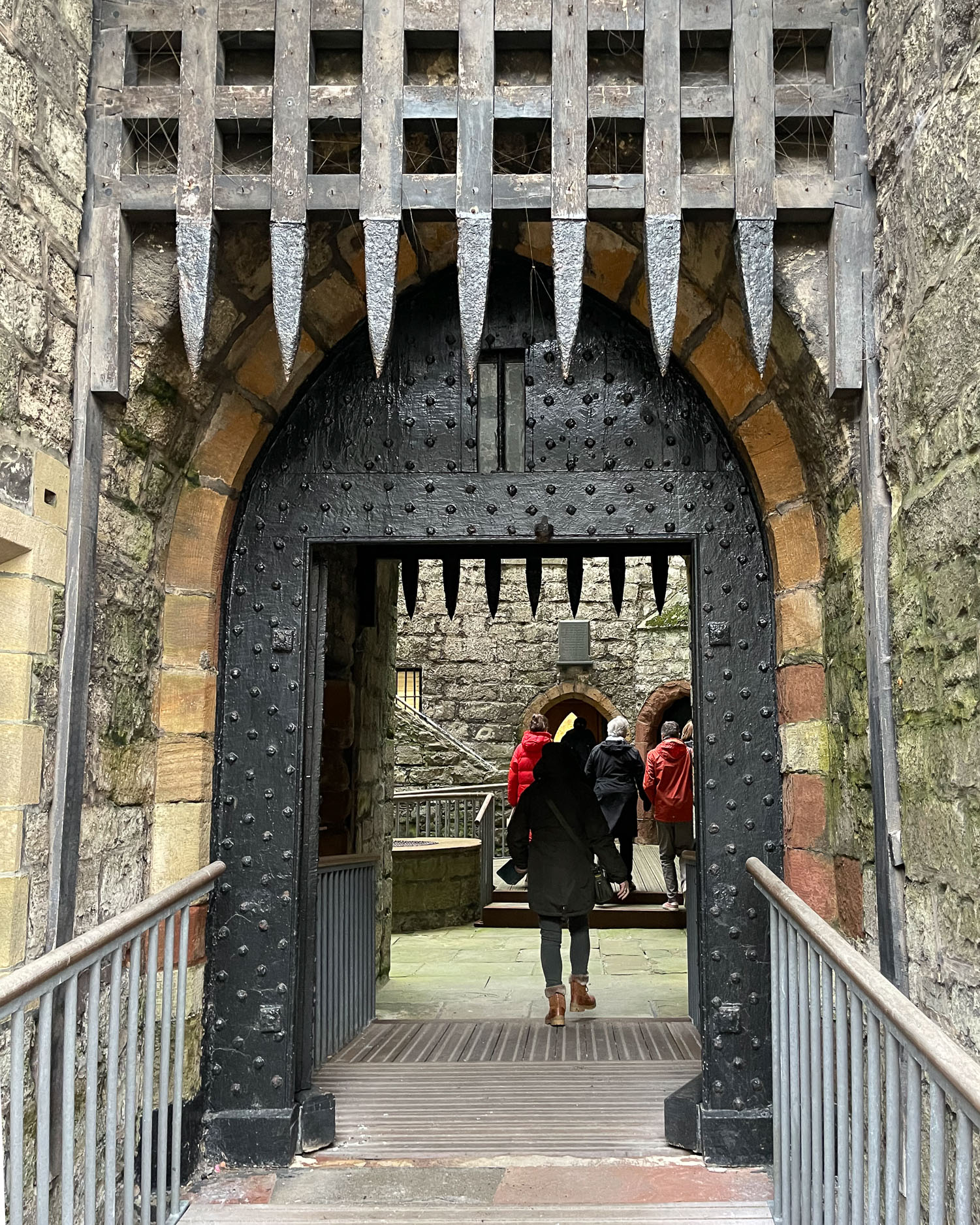
Castle Rushen is run by Manx National Heritage, and is open daily from end March to beginning November.
Castletown – where to stay
Castletown makes a great base to explore the south of the Isle of Man, as it’s well connected with the bus and heritage railway. We’d recommend staying at:
Halvard Apartments Castletown – boutique style apartments right by the castle and harbour
The George Hotel Castletown – a comfortable 19th century inn in the centre of town.
There’s a new boutique hotel under development in Castletown by the owners of Kizuna, but it hadn’t yet opened when we were there.

The Halvard Apartments in Castletown for boutique apartments with sea views
Castletown – where to eat
I normally home in on restaurants that feature local dishes, but so many people raved about the Japanese restaurant Kizuna that I’ve got to mention it. This restaurant offers top end Japanese dishes that draw on the best seafood and produce that’s available locally.
29. Murray’s Motorcycle Museum
Murray’s Motorcycle Museum is an unassuming private museum near the Fairy Bridge, which opens up into a huge warehouse space, packed with motorbikes and memorabilia. If you are a motorcycle enthusiast, you’ll be in heaven looking at all the different bikes, photos and information with stories of those who rode them.
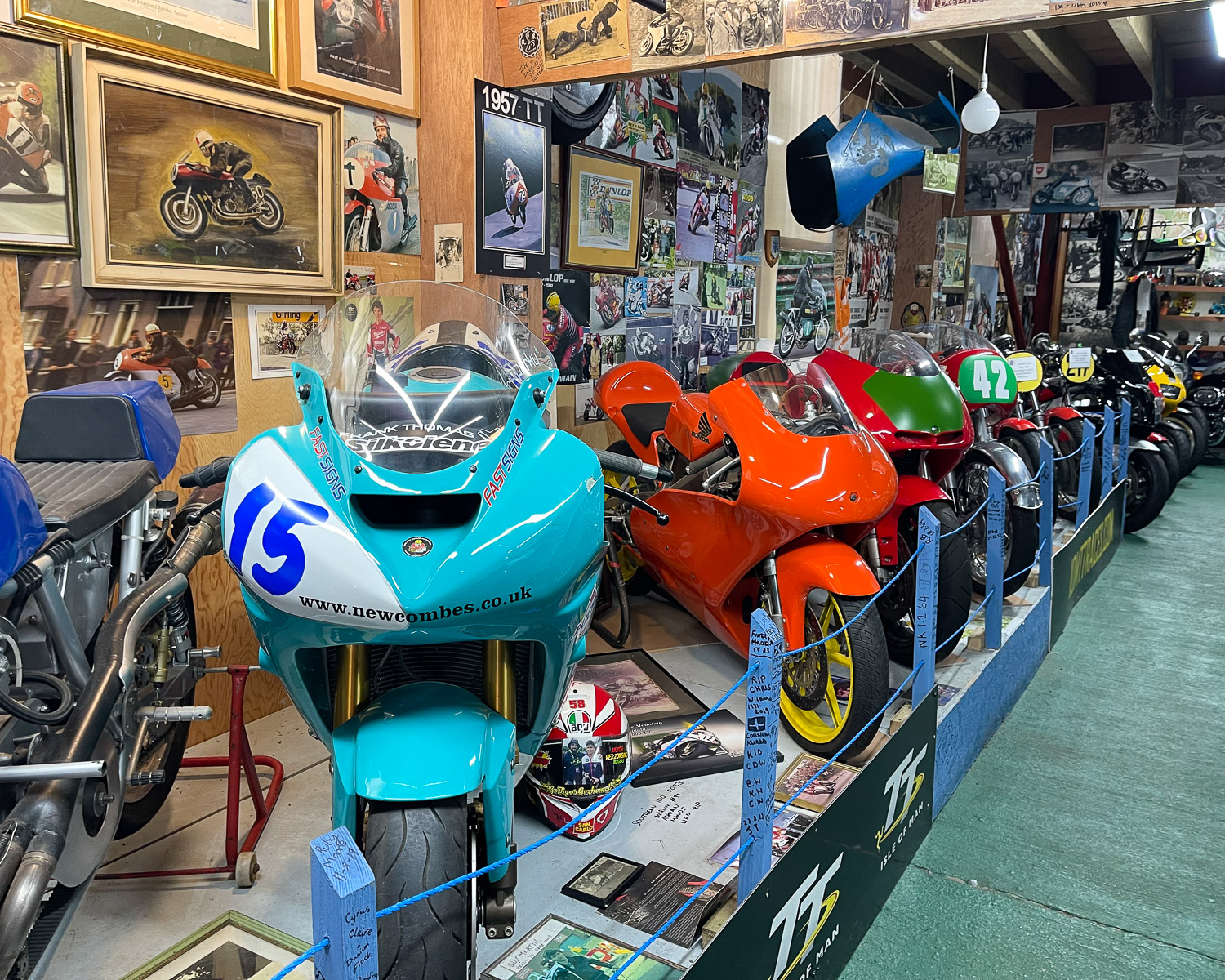
This is owner Peter Murray’s private collection and he is only too happy to share his enthusiasm and talk motorbikes to those who share his passion. The ground floor is devoted to motorbikes from more recent decades of the TT and other motorbike events. Upstairs there’s a whole other level, housing classic motorbikes from back to the 1800’s.
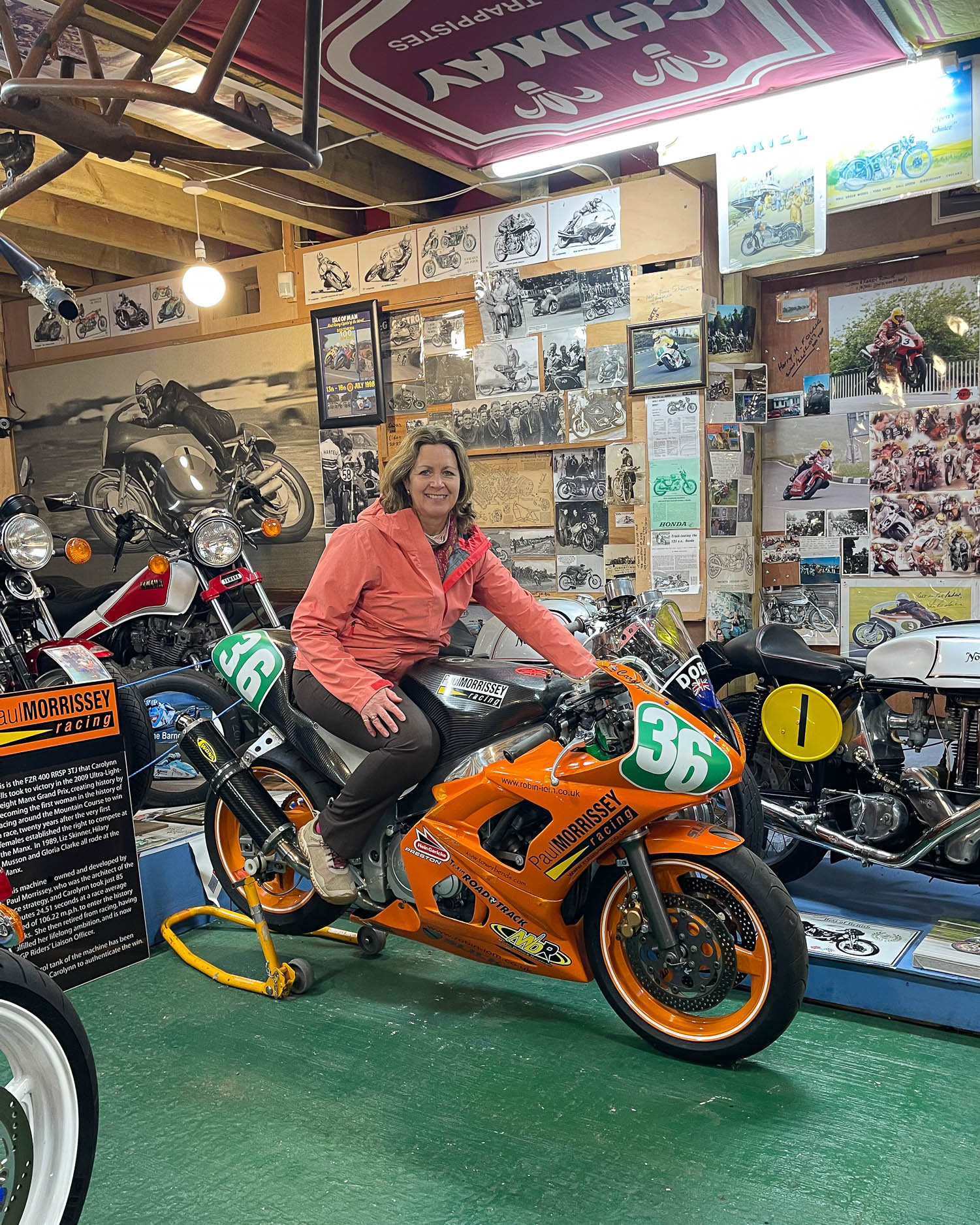
While women don’t seem to feature much in the TT and motorsport in general, I was able to borrow some glory, sitting on the bike ridden by Carolynn Sells, first female winner in 2009 of an event on the Mountain Course. On display is also a motorbike ridden by Miss Murial Hind who was an early motorbike event participant in 1905 and went on to be a motorsports journalist living on the Isle of Man.
30. Fairy Bridge – say hello to the little people!
Before too long in the Isle of Man, you start to realise that local life is coloured by numerous traditions, superstitions and folklore. Some of these are legends from the island’s Celtic and Viking culture, others inherited from a seafaring tradition, while some beliefs are just pure Isle of Man!
For instance, like sailors of old, you would never call out the name of an R-A-T but refer to it as a ‘longtail’. At harvest time, the last sheaf to be cut will be saved to ensure the safety of the whole crop (we saw one in Maughold Church). Many locations on the island are associated with particular myths and legends, known for the bad or good luck that befell someone, ghosts that appeared or fairy happenings.
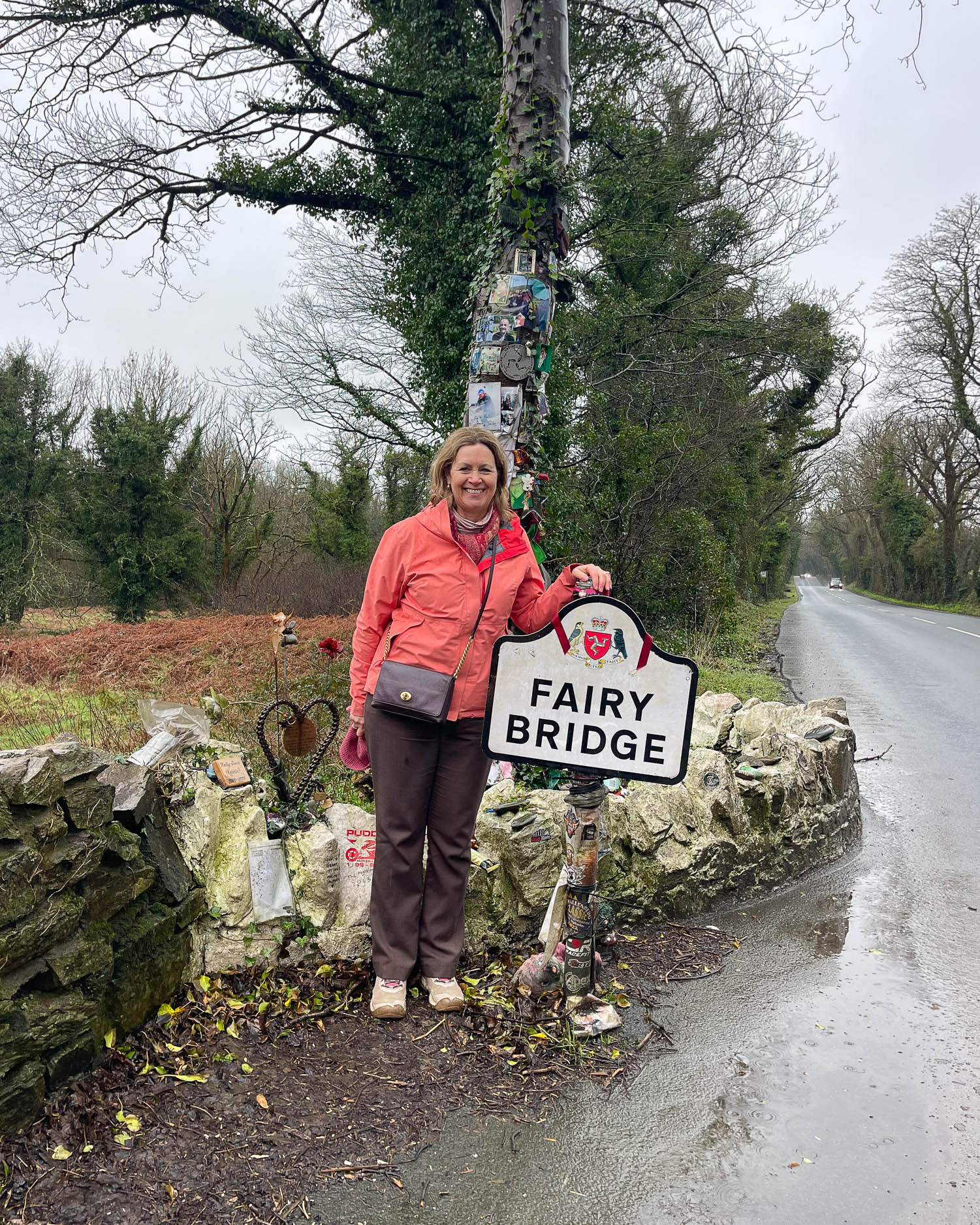
Fairies are very much a living force on the Isle of Man and you wouldn’t want to offend them, for fear of getting some bad luck in return. On the main road between Douglas and Castletown is a small stone arch over the stream, known as the Fairy Bridge.
This is a known haunt of the Fairies and every time you cross it, whether on foot, bike, car or public bus, you will be expected to greet the ‘little people’, which is only polite if you want to keep on the right side of them!
31. Cregneash- a heritage crofter’s village
Between Port Erin and Port St Mary is the heritage village of Cregneash, which is open from late March to early November. The hamlet with whitewashed, thatched cottages was one of the last places where crofters lived, employing traditional farming methods. You’ll see how the thatched roofs were secured by ropes attached directly to stones embedded into the building.
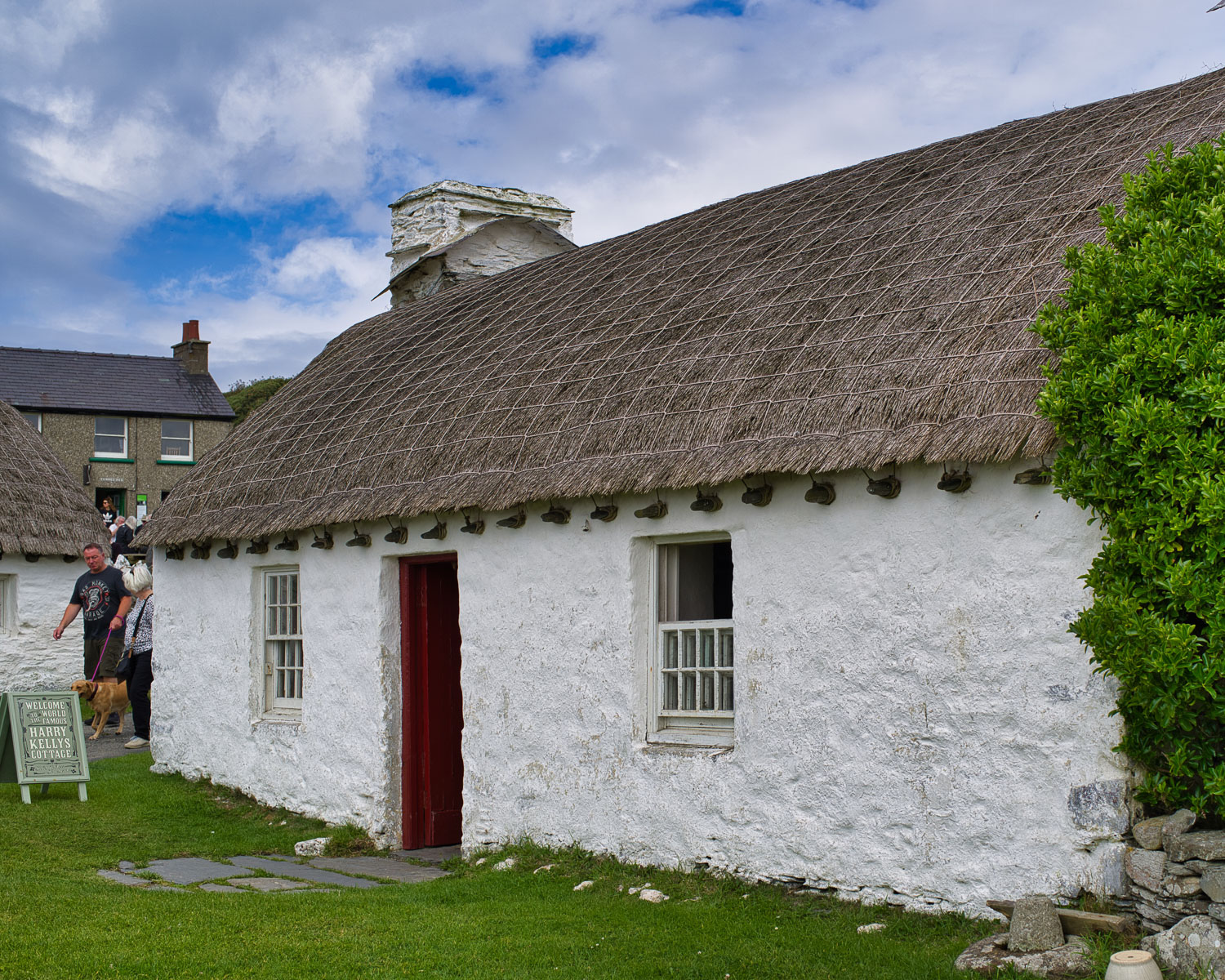
Some of the cottages are open under Manx National Heritage, to show how crofters lived, demonstrating skills and Manx crafts. Look out for Manx cats with no tail and the four horned Loaghtan sheep that are native to the Isle of Man. There’s also a small cafe serving Manx dishes and picnic area at Cregneash.
You may like to combine your visit to Cregneash with a walk to nearby Meayll Hill, a stone circle and chambered burial cairn that dates back to Viking times.
32. The Sound and Calf of Man
Travel to the furthest point south on the Isle of Man to find the Sound, which is separated by a narrow stretch of water from the Calf of Man. This small island is uninhabited and forms a sanctuary for wildlife and marine birds, under the care of Manx National Heritage. Hostel accommodation is available at the Calf of Man Bird Observatory during the summer months, or you can take a wildlife spotting boat trip from Port St Mary or Port Erin.
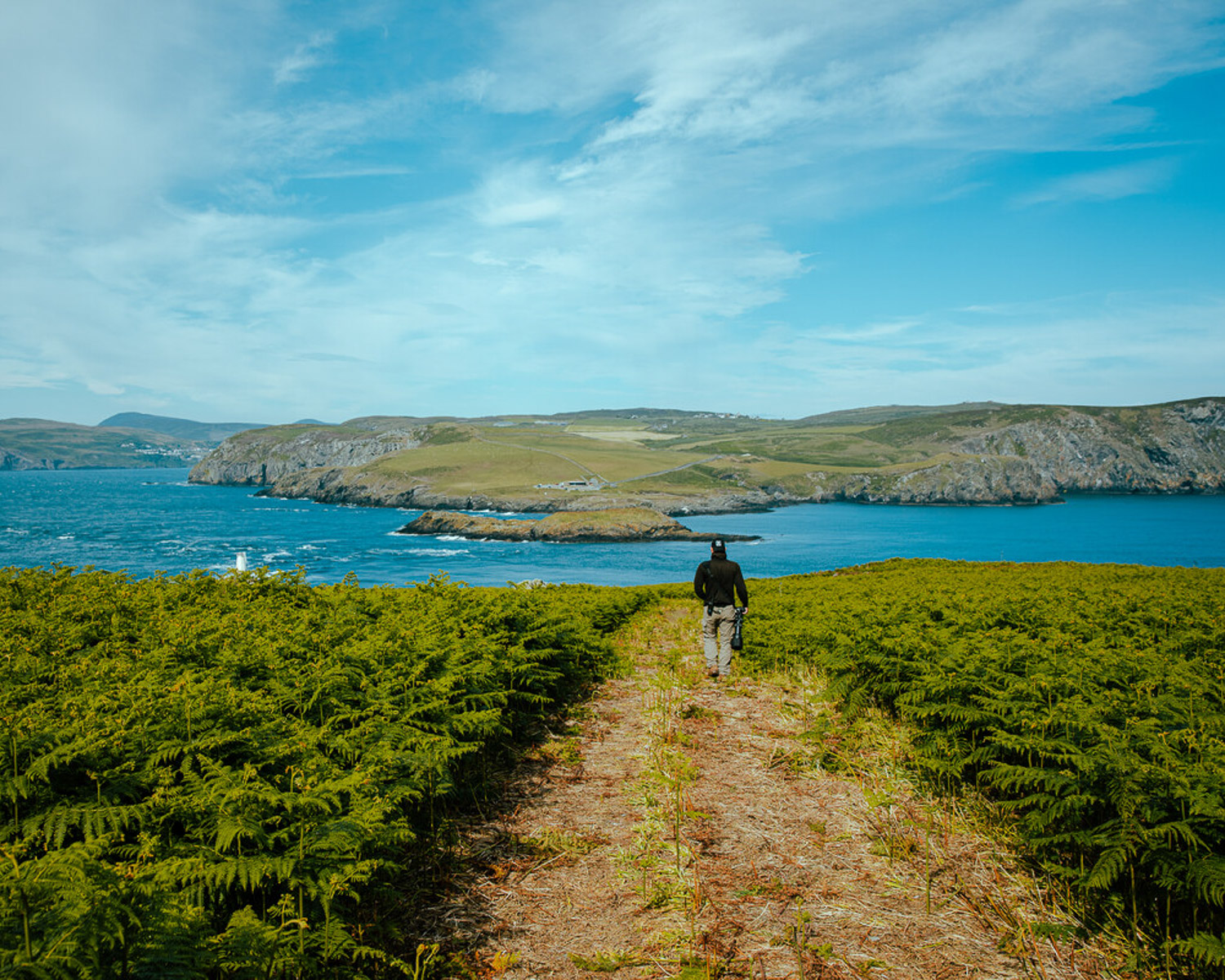
Otherwise you can observe the Calf of Man from the shore at The Sound, which is accessible by car or on the No 28 bus from Port Erin and Port St Mary. The Raad ny Foillan coastal path also runs along this stretch of coast, so you can park at the Sound and walk in either direction.
Be sure to stop for lunch or afternoon tea at The Sound Cafe, which has panoramic views of the Calf of Man and was named by the Guardian in 2022 as one of the best cafes with a view.
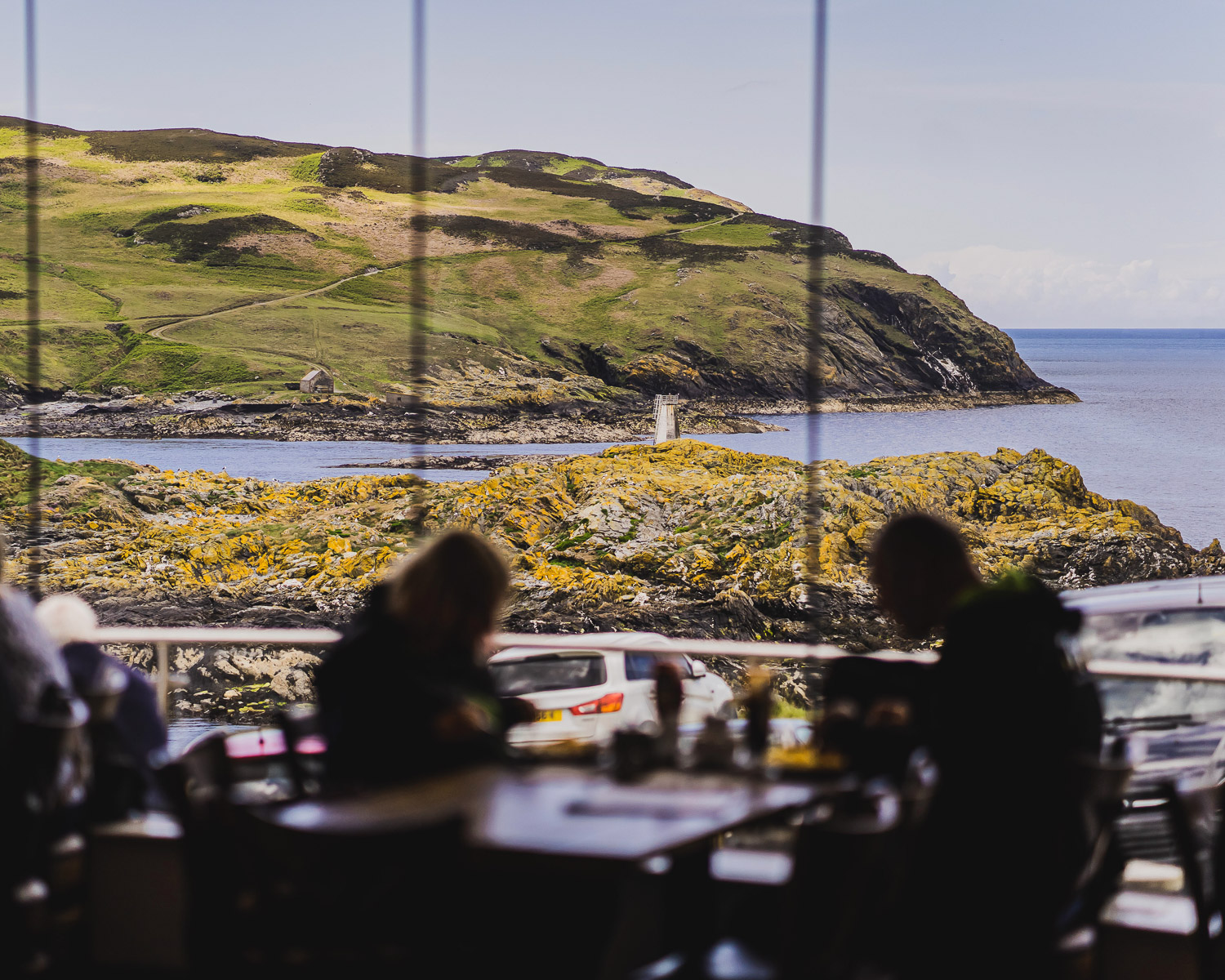
33. The Way of the Gull Coastal Path (Raad ny Foillan)
I do love a long distance hiking trail, and the Isle of Man offers the Raad ny Foillan (Way of the Gull) coastal path that encircles the island. This trail runs for 160 km, hugging the coastline with energising sea views for much of the way.
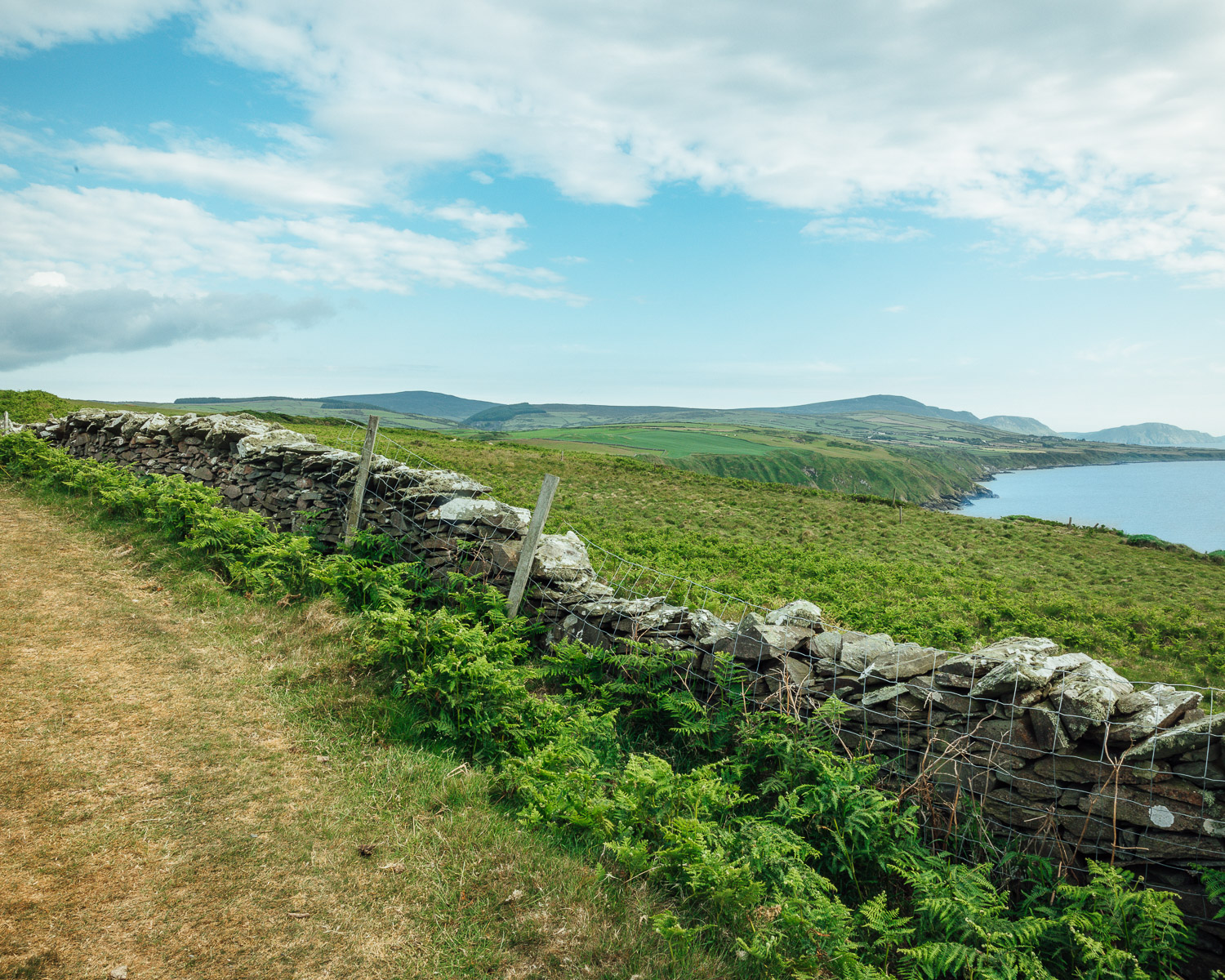
The path takes in the whole range of Isle of Man landscapes, with beaches, wooded glens, dramatic clifftops (like the Chasms), rolling countryside and calming seascapes. Best of all the path connects many of the most interesting towns and heritage sights, so you don’t have to choose between hiking and sightseeing – you can do both!
Another benefit is that much of the trail is well connected by bus routes or heritage railways, so you have plenty of options if you get tired. You can easily dip into the Raad Ny Foillan for day hikes, using the bus or railway to get you to a start or end point.
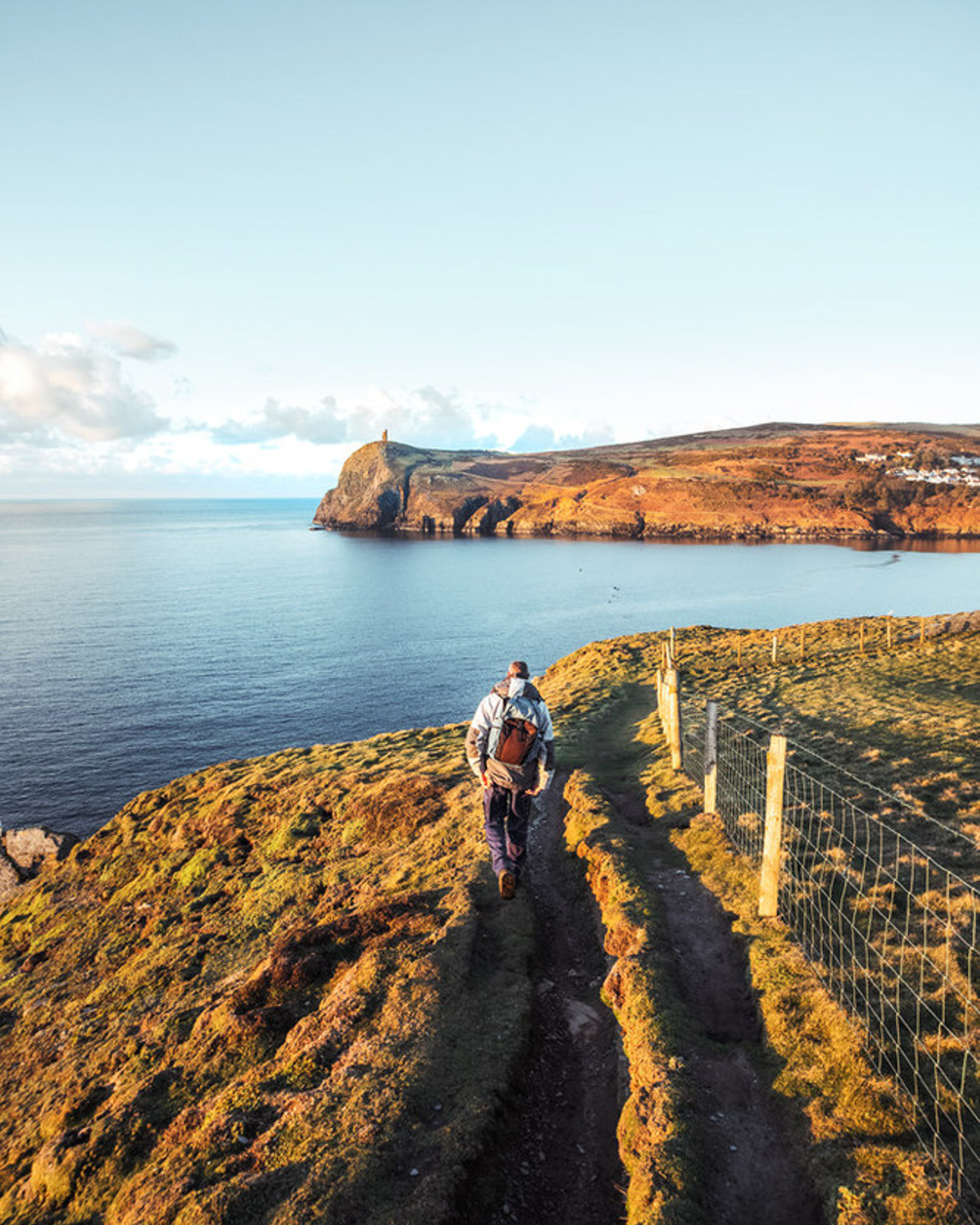
If you fancy doing the complete trail, I’d allow at least 7 full days for walking and up to 12 days if you prefer a more leisurely pace, with plenty of time for sightseeing. However long you have available, you can easily walk a few sections of the trail that interest you most.
If walking the entire Raad Ny Foillan trail, I’d personally base myself for a few days each time in Douglas, Castletown or Peel, then use public transport to access the closest sections of the walking path. Nigel at Albany Tours offers a service for walkers who stay at his guest house in Peel, where he can arrange to move your luggage or collect you after the day’s walk.
If walking the whole trail, I recommend using the Cicerone Isle of Man Coastal Path Guide, which has good descriptions and maps of the trail. It also covers two other trails: The Millennium Way that runs from end to end of the island, and the Herring Way running from Peel to Castletown.
34. Wild swimming in the Isle of Man
The glens or wooded river valleys of the Isle of Man, offer restful places to walk and swim. The whole of the Isle of Man is designated as a biosphere, and with a low population and no heavy industry, the water of both rivers and coastal areas is clean and clear.
There are 18 mountain and coastal national glens that are protected by the Isle of Man government, many of which can be accessed on the heritage railways or local buses. The glens offer a back-to-nature experience, with gushing mountain streams, waterfalls and pools where you can often swim.
To help discover the best spots for a wellbeing break, Visit Isle of Man has created a Mindfulness Map, showing where you can go Glen Dipping, as well as coastal swimming, hiking and forest bathing.
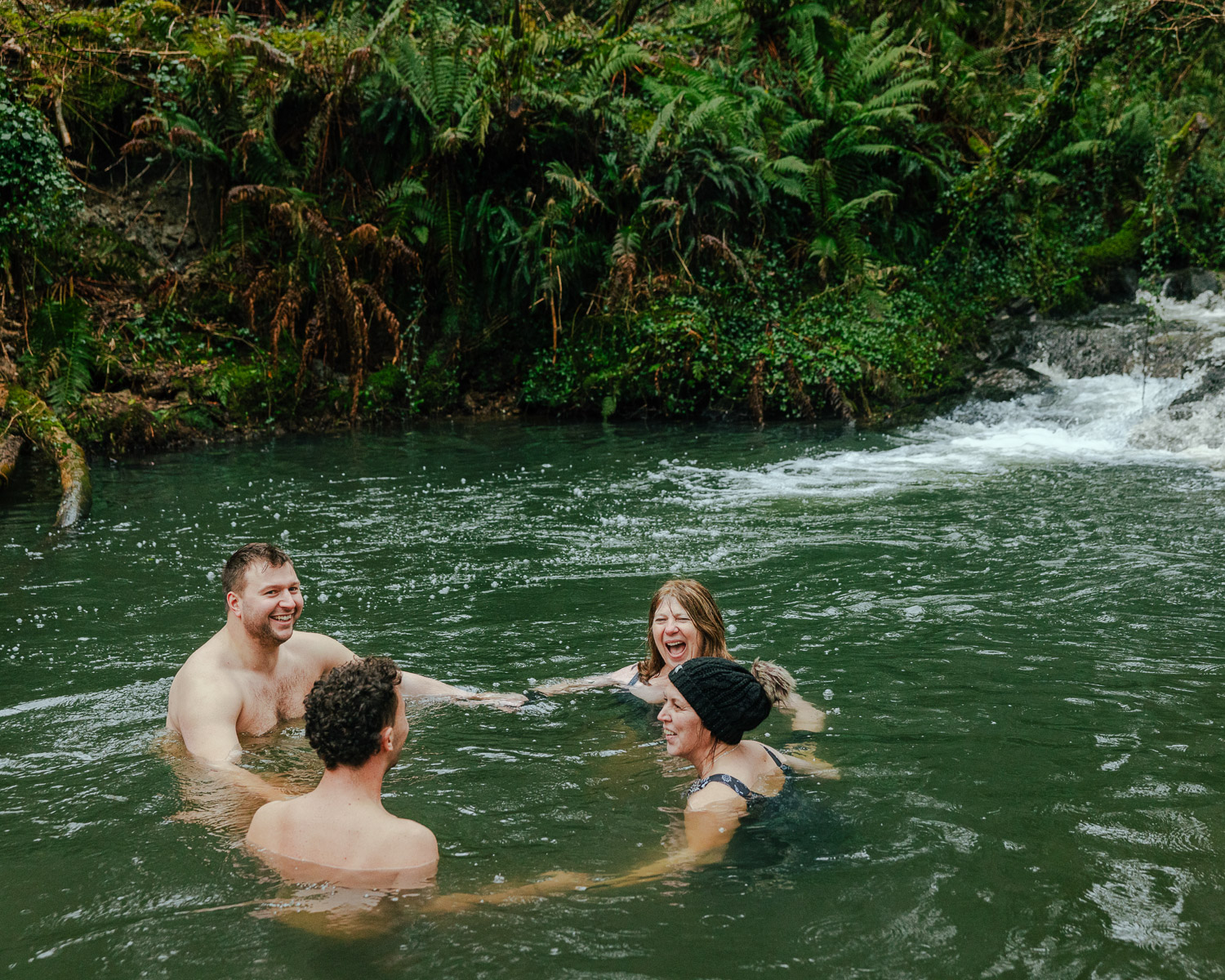
For Glen Dipping try Colby Glen and Glen Maye in the south, or Dhoon Glen, Glen Helen, Glen Mooar in the north of the island. The most sheltered, sandy beaches for swimming are found at Peel, Port St Mary and Port Erin in the south and west of the Isle of Man, while the wild and windy beaches of the Ayres National Reserve in the north are a great place for a walk to blow away the cobwebs.
35. Discover your ancestry in the Isle of Man
One of the more unusual activities on the Isle of Man, is to take an ancestry tour.
Surrounded by sea, with trading connections to England, Scotland, Ireland and beyond, there has always been a strong seafaring tradition here. And just like England, Scotland and Ireland, poverty forced many people in the 19th and 20th centuries to leave their homes in search of a better life.
There are now communities in the USA, Canada, Australia, New Zealand and even Fiji, that trace their roots back to the Isle of Man. More recently during World War 1 and 2, many of German or Austrian parentage resident in England were interned in the Isle of Man.
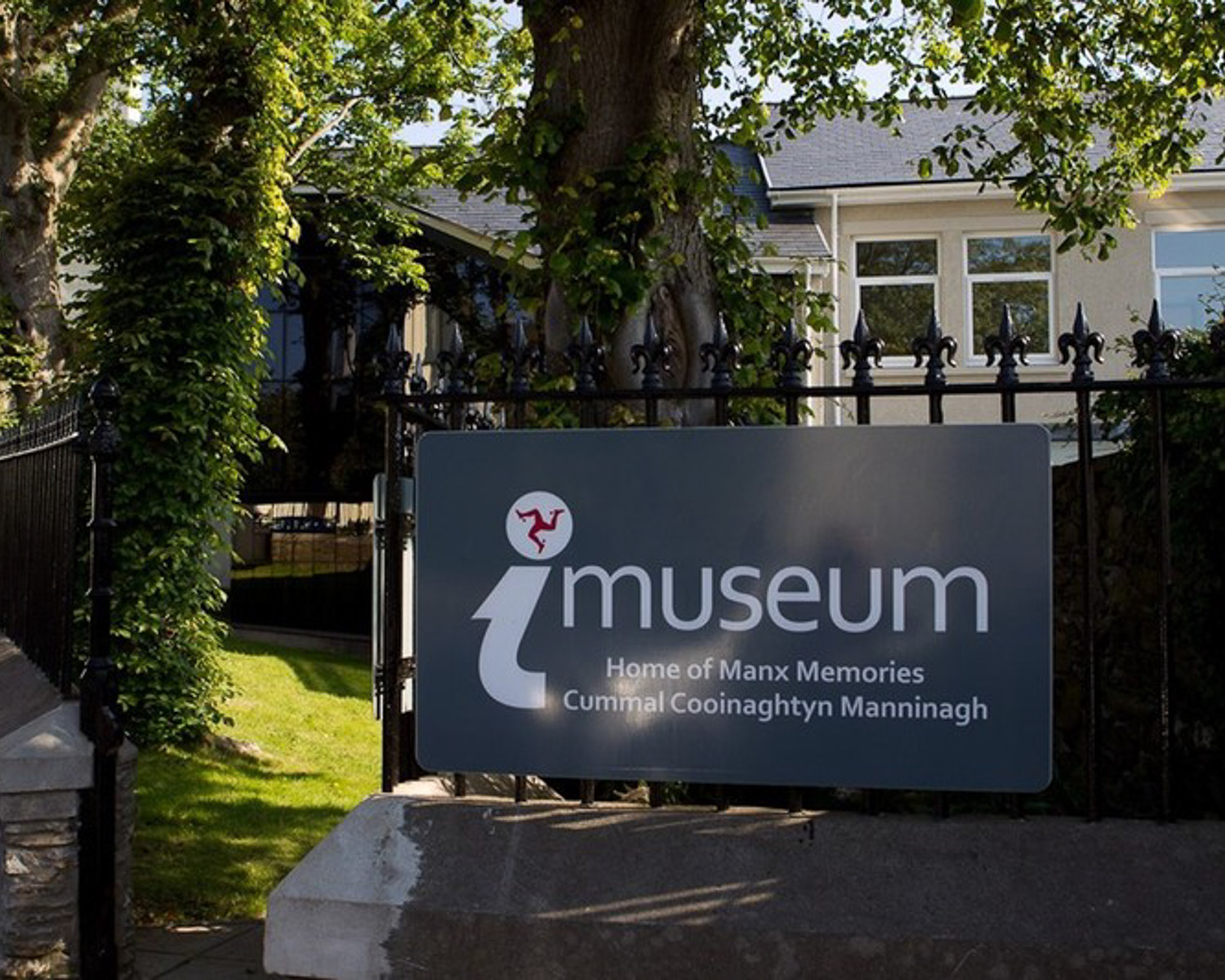
If you are visiting with an interest in tracing your ancestry, much of the the family information is held online. The iMuseum in Douglas is the home of Manx memories and a source of family records that’s free to visit.
Because of the time and work involved in researching your family history and connecting it with specific locations on the island, several guides offer an ancestry service to visitors. By contacting a specialist guide before your visit, they will be able to do much of the research, then give you a personalised tour of the places your ancestors lived, perhaps even visiting their graves.
One of the guides we recommend for this service is Nikki at Albany Tours, who with her husband Nigel runs a guest house and tour business based in Peel. Nikki can do the research in advance, then collect you from your hotel or cruise ship for a day’s tour to discover your ancestral roots.
Where is the Isle of Man?
I have to put my hand up and admit that before I visited the Isle of Man, I was a bit hazy on this one. But now I know that the Isle of Man is located in the Irish sea, between Northern Ireland and England’s north west coast.
Due to the easy ferry links, it’s long been a holiday destination for those living in the north west of England and also has seasonal ferries to Dublin and Belfast.
The south west coast of Scotland is also visible from the Isle of Man and through its Viking heritage there are lots of connections with the Western Isles of Scotland. Due to its location, the Isle of Man is a popular stop on cruise itineraries around Ireland and Scotland.
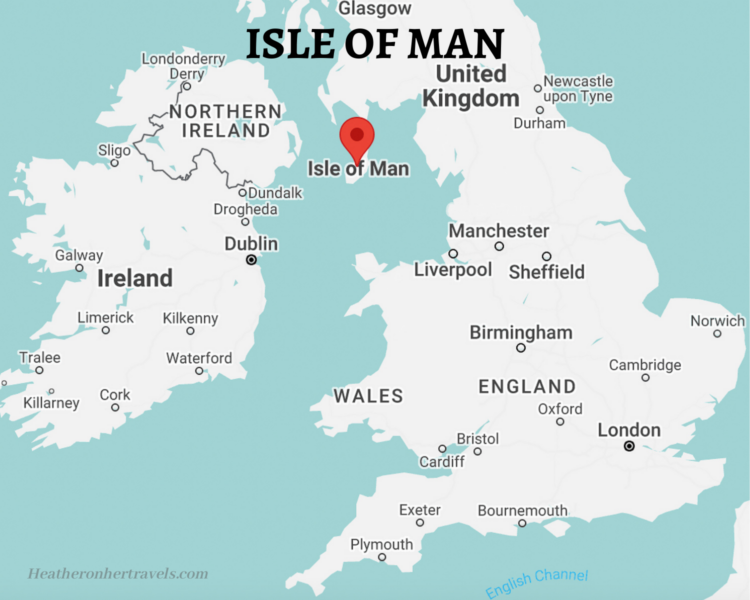
Getting around the Isle of Man
If you want to go car free on holiday, the Isle of Man is an excellent place to do it, with a regular bus service that links with the heritage railways. Cycle hire is available or you can walk around the whole island on the Raad ny Foillan coastal path, taking in most of the main towns and sights on the way.
By bus
The bus service known as Bus Vannin runs regularly throughout the year, with more frequency between April and October. Buses connect the main towns of Douglas, Castletown, Laxey, Ramsey, Peel, Port Erin, Port St Mary and Ronaldsway Airport. Routes and timetables can be found at Isle of Man Transport.
While in Isle of Man, use the Findmybus app and website to track the exact location of your expected bus. Single bus fares range between £1.30 and £3.
If you are visiting on holiday you may like to consider a Go Explore Card, which gives you unlimited bus, rail and tram travel over a 1, 3, 5 or 7 day period. A Go Explore Heritage Card also includes entrance to Manx National Heritage Sites. The Go Explore cards can be purchased from the airport, railway or bus stations.
By Heritage Railway
Isle of Man is unusual for the heritage trams and railways that still run around the island. The 5 different lines run from around mid March to early November and you can find the timetables on the Isle of Man Transport site. The main railways are:

Manx Electric Railway – running from north end of Douglas via Laxey to Ramsey
Isle of Man Steam Railway – running from Douglas Harbour via Castletown to Port Erin
Other local railways and trams include the Douglas Bay horse tramway, Snaefell Mountain railway, Great Laxey Mine Railway and Groudle Glen Railway. There is a miniature Orchid Line Railway at Curraghs Wildlife Park.
Tickets can be individually purchased for each journey, or you can purchase a Go Explore Card that covers the heritage railways as well as bus routes.
By Bike
If arriving by ferry as a foot passenger, you can bring your bike for free and then use it to get around the island. The Isle of Man has a leisurely pace of life and the roads are well maintained. Bike hire is also available from various providers, such as Erin Bike Hut (Port Erin) or Outdoors Ramsey (Ramsey). Isle of Man cycle tours can organise escorted cycle tours for small groups.
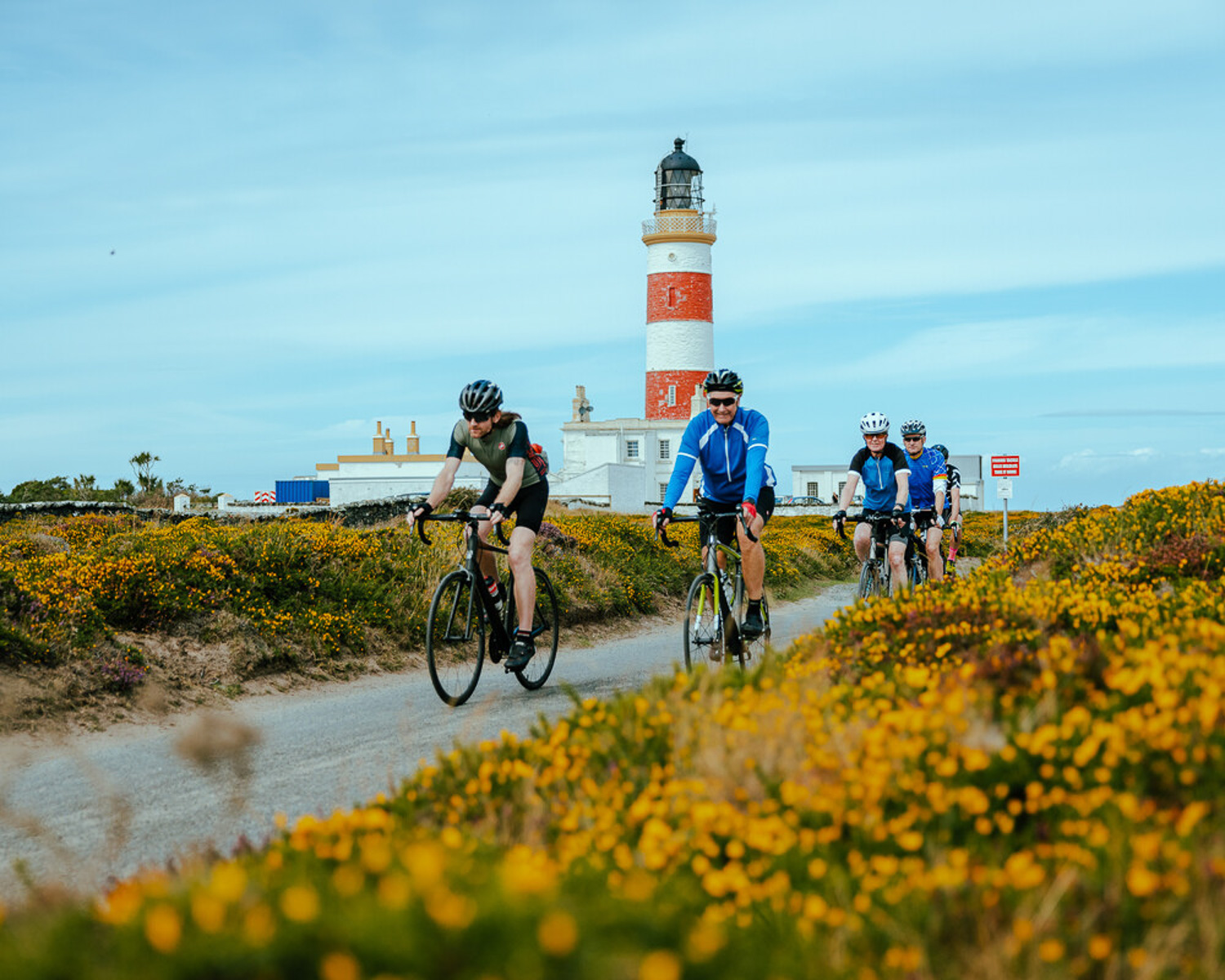
By Car
If you prefer to hire a car for your stay on the Isle of Man, we recommend that you compare options and prices with Rental Cars. Most hire cars are available for collection from Ronaldsway Airport, just south of Douglas. There is a system of parking discs used in the Isle of Man, and you can pick one up on the ferry or at the airport, although any hire car should already have one.
Best time to visit the Isle of Man
The Isle of Man has similar weather to Ireland and the United Kingdom, although temperatures may be slightly milder in winter, due to the warming effects of the sea.
Most visitor attractions and the heritage railways open for the ‘season’ which is roughly from end of March / Easter to early November / end of school half term holidays. Visiting outside these times through the winter months is likely to be not only wet and windy, but frustrating since so much will be closed.
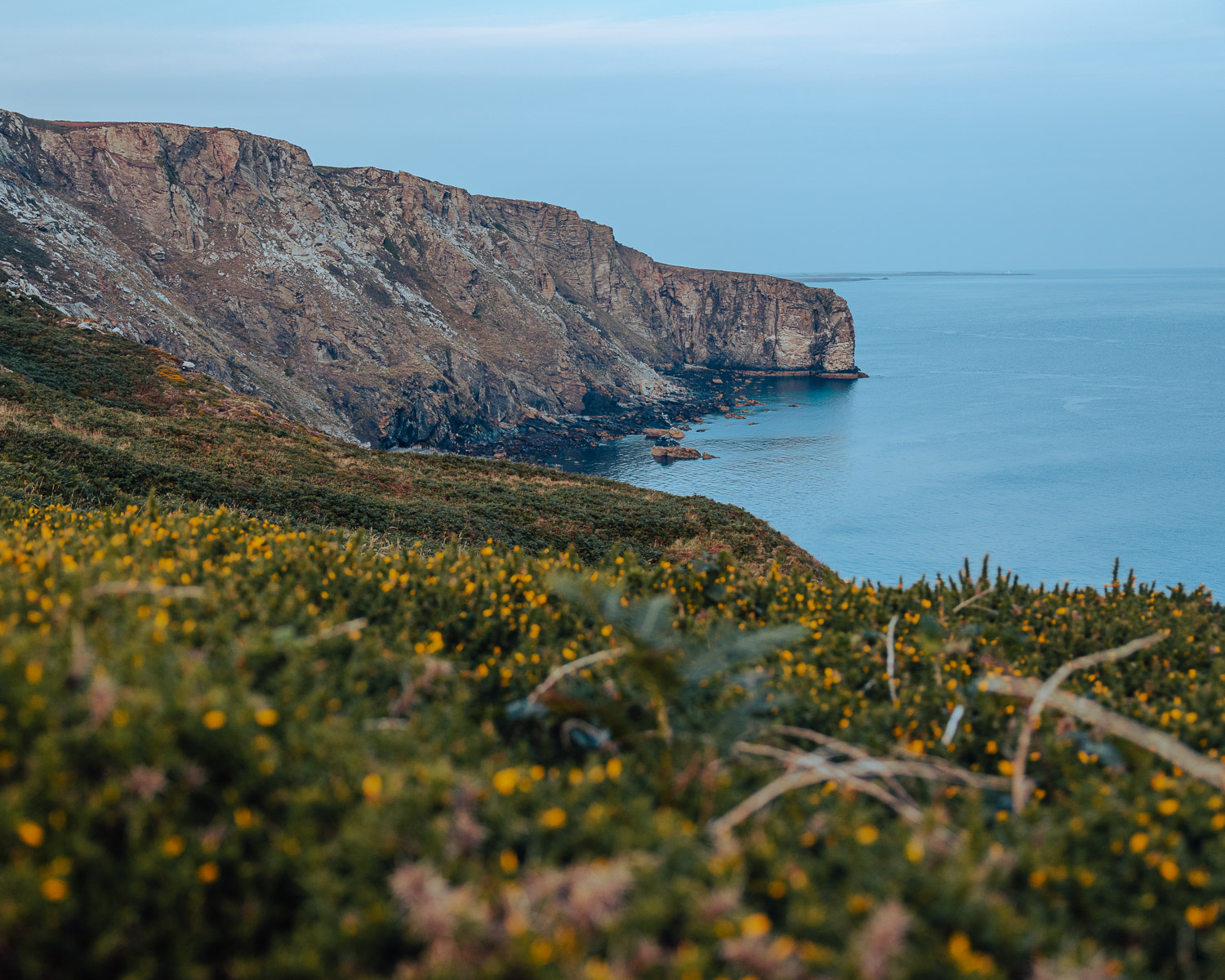
From Easter to early summer the countryside is beautiful, with wild gorse and spring bulbs in flower. July and August tend to be busy with families visiting during the school holidays, but the weather should be warm, with plenty of chance for swimming and outdoor activities. Autumn is also a great time to visit, with the heather in bloom and a chance of sunny days in September and October.
Unless you are visiting specifically for the TT Motor Race, I would avoid the two weeks of the event at end of May and beginning of June. At this time the island is packed, accommodation is scarce and some roads may be closed, limiting access to other places you’d like to visit. It’s also worth checking the dates of other motorsports events, such as the Manx Grand Prix at end of August, since while not as busy as the TT race, similar restrictions may apply.
How to get to the Isle of Man
Ferry to the Isle of Man
There are a number of ferries to the Isle of Man, all of which arrive in the island capital of Douglas. The ferries are operated by the government owned Isle of Man Steam Packet Company.
Heysham to Isle of Man – this crossing runs daily all year round and the crossing time is 3 hrs 45 minutes. The new Manxman vessel is used for this crossing. This ferry is for vehicle and foot passengers. Pets must remain in your car or foot passengers must book them into the pet lounge.
Liverpool to Isle of Man – the crossing runs from end March to end October and the crossing time is 2 hours 45 minutes. The Manannan fast catamaran is used for this crossing. If travelling in the winter, you may need to go via Heysham Port. The ferry is for vehicle and foot passengers and pets are only allowed to stay in your car.
Dublin to the Isle of Man – the crossing time is 2 hrs 55 minutes and the service runs seasonally with up to 2 sailings per week in the summer season.
Belfast to the Isle of Man – the crossing time is 2 hrs 45 minutes and the service runs seasonally with up to 2 sailings per week in the summer season.
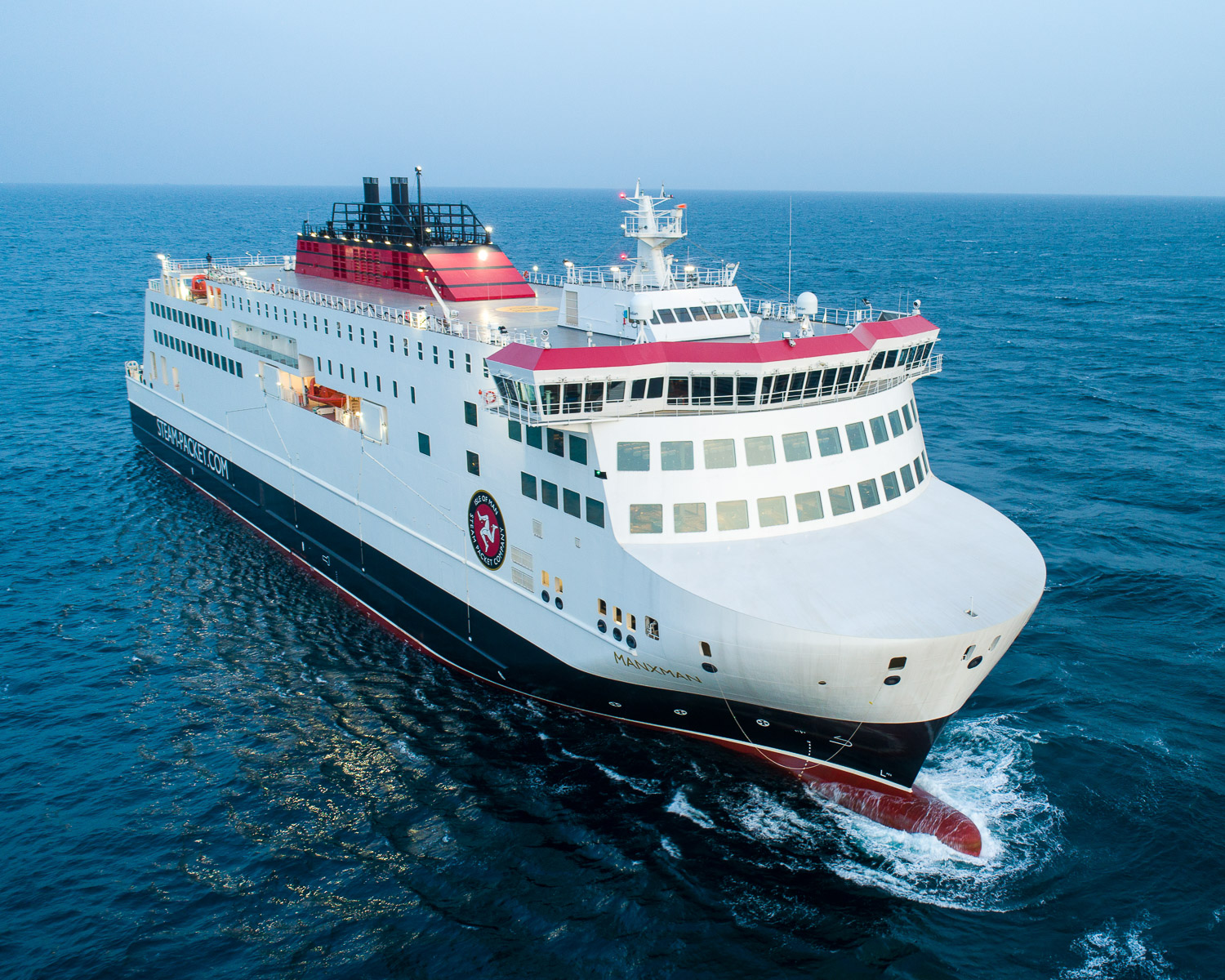
Our experience on the Manxman ferry
We enjoyed the on board experience on the Manxman ferry, which had recently been launched when we travelled (February 2024). The ship is not only spacious, but the decor is stylish and contemporary, incorporating artworks from local Manx artists.
Manxman has a shop to buy souvenirs, Isle of Man products and small snacks, as well as a bar area and restaurant area at each end of the deck. Cabins are available to book if you want to get some rest, which are similar in style and standard to a cruise ship cabin.
There are a number of premium lounges that you can access for an additional charge, offering more comfortable seats, a quieter atmosphere and some free services such as hot drinks, snacks and newspapers. We tried out the Barrule Lounge and enjoyed the retreat on an upper deck, away from the main bustle of people coming and going. As well as free hot drinks, fruit and biscuits, you could order meals from the bar for an extra charge.
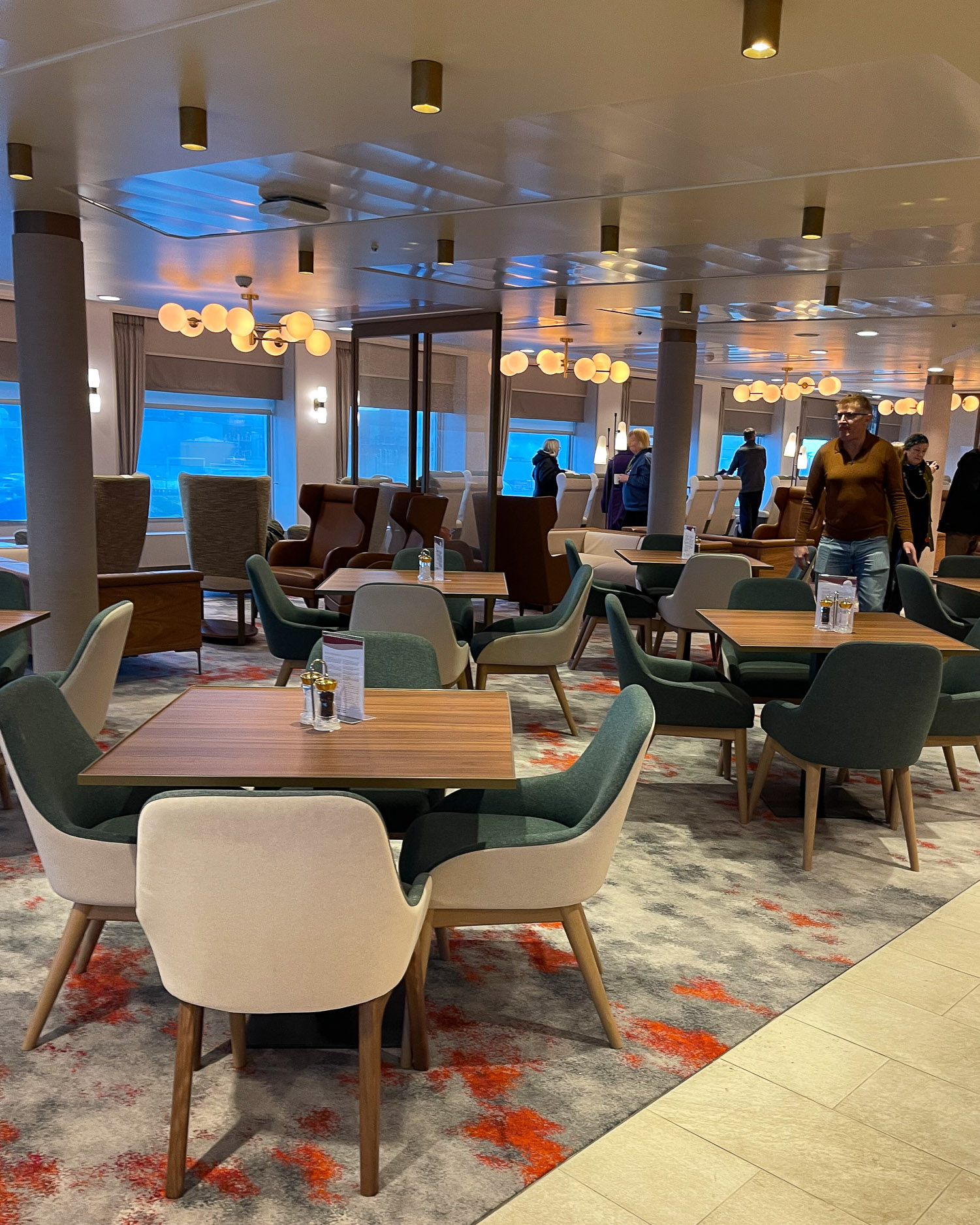
Train to the Isle of Man
If you are planning to take the ferry from the UK to the Isle of Man, you may need to take the train to the ferry port.
Heysham – For the most frequent ferry crossing from Heysham port, take the train to Lancaster. There are direct trains to Lancaster from London Euston station as well as from many other cities the UK and Scotland.
From Lancaster station, take the local train directly to Heysham Port. There is normally a train from Lancaster to Heysham port that is timed to arrive before the ferry. Heysham Port station is right by the ferry terminal, so this is the most convenient option for foot passengers. Alternatively you can get a bus or taxi from Lancaster to Heysham Port.
Liverpool – If taking the ferry from Liverpool, the closest station to the port is James Street. You’ll first need to travel to Liverpool Lime Street station, before changing to the local train service taking you to Liverpool James Street. The station is then 0.5 km walk from the ferry terminal.
Flights to the Isle of Man
If you prefer to fly to the Isle of Man from within the UK or Ireland there are flights from airports such as London Gatwick, London City, Bristol, Birmingham, Manchester, Edinburgh, Dublin and Belfast. Flights are offered by easyJet and Loganair.
International visitors are likely to have to transit via London although there are a few direct flights from European destinations.
Read Next
Discover the Best Isle of Man restaurants – delicious dishes and drinks to try
Pin it!
Photo Credits: Cregneash photo by Jeremy Alden on Flickr, some photos where indicated from Visit Isle of Man.
Some of the experiences mentioned were hosted* by Visit Isle of Man on a trip with the British Guild of Travel Writers.
* More info on my policies page
This article is originally published at Heatheronhertravels.com

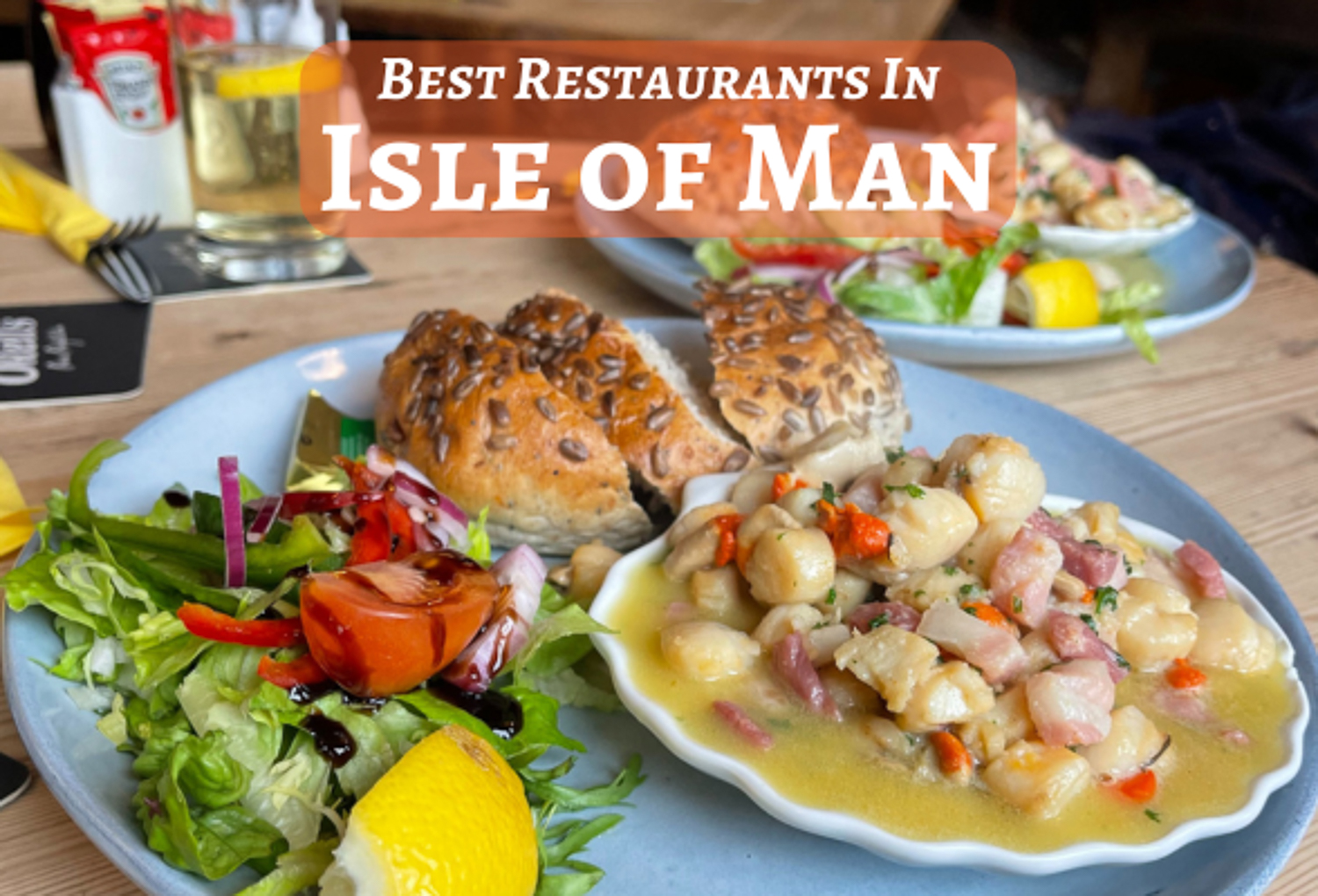

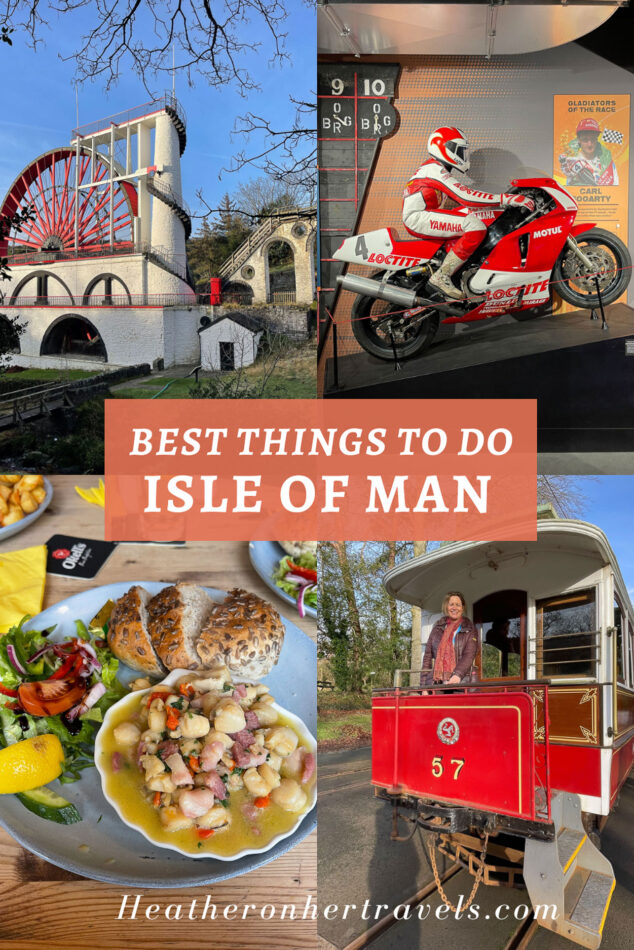
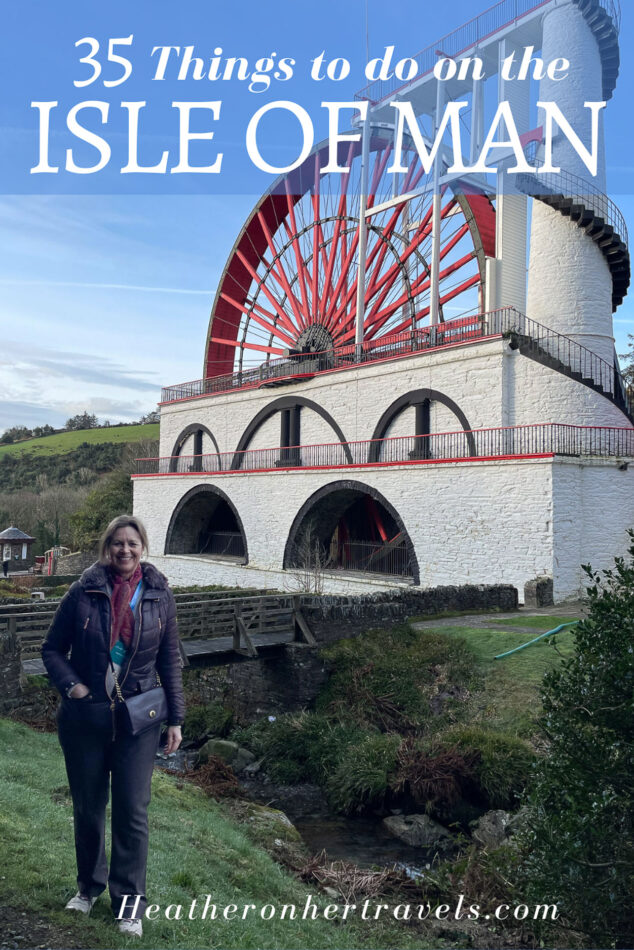

Graham Connor
Friday 5th of April 2024
Thank you for such a comprehensive and upbeat report. There are people on the Isle of Man who would take any opportunity to run it down. That's not saying we don't have some issues but there's no doubt that the Island is a wonderful place to live and holiday.
Heather Cowper
Friday 5th of April 2024
@Graham Thanks for the comment, I'm glad you thought I did the Isle of Man justice, it deserves to have a higher profile as a holiday and short break destination.
Hels
Wednesday 28th of February 2024
I don't like car racing or bike racing, but I do love public transport around the coastal road. The Isle of Man Steam Railway in Douglas, around the harbour and the castle. Walking from the beach up to Milner’s Tower on the cliff was hard work but going back to the beach gave us permission for a drink.. or two :)
The Great Laxey Mine Railway uses the old steam trains for amazing views and a slow sense of historical travel.
Heather Cowper
Wednesday 28th of February 2024
@Hels The heritage railways are definitely a unique highlight of the Isle of Man, really giving a fun and car free way of getting around.